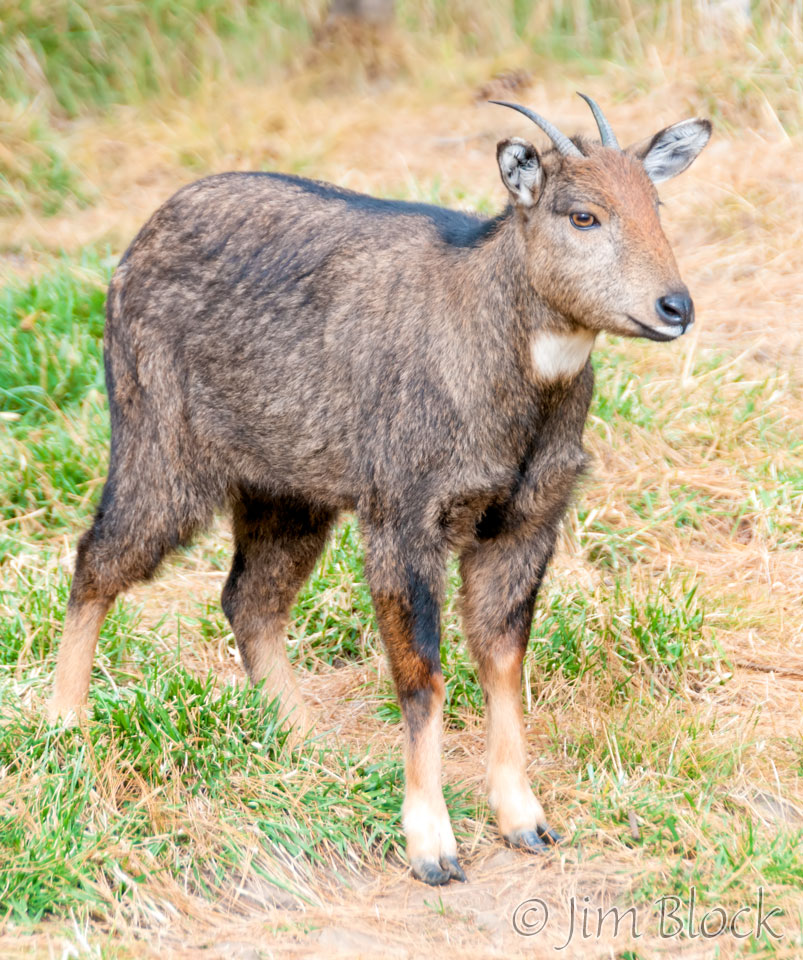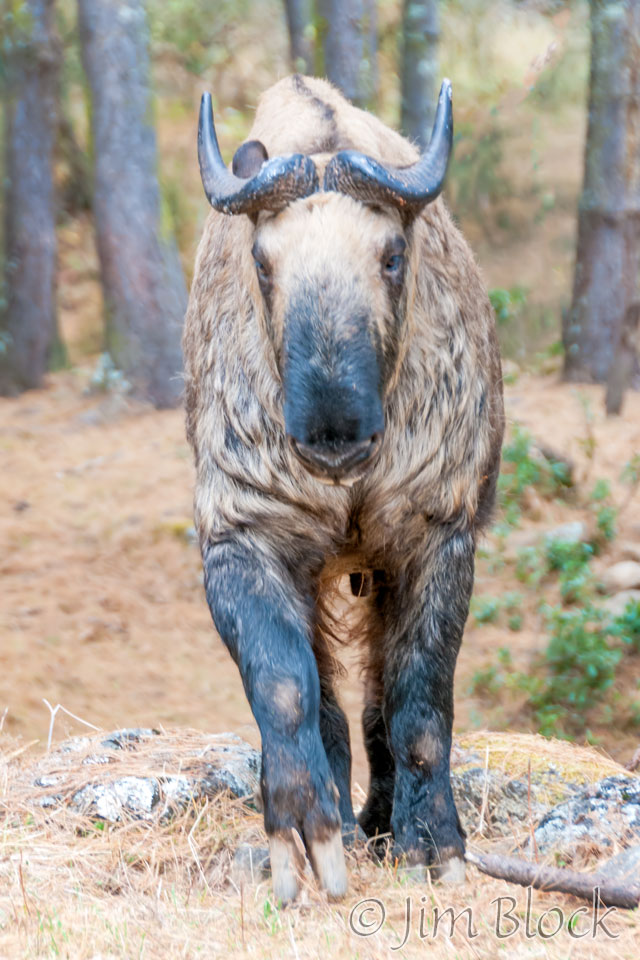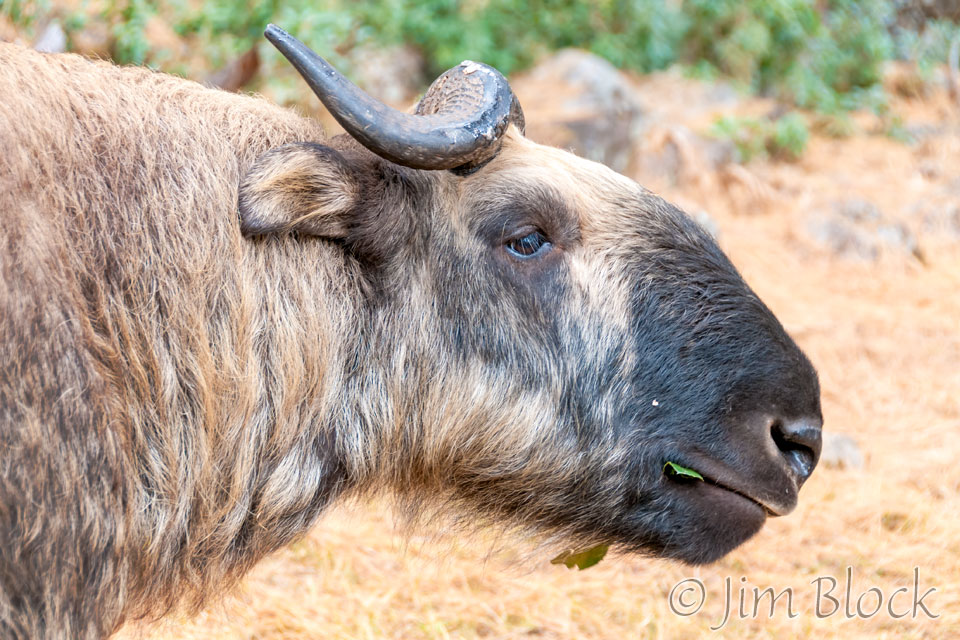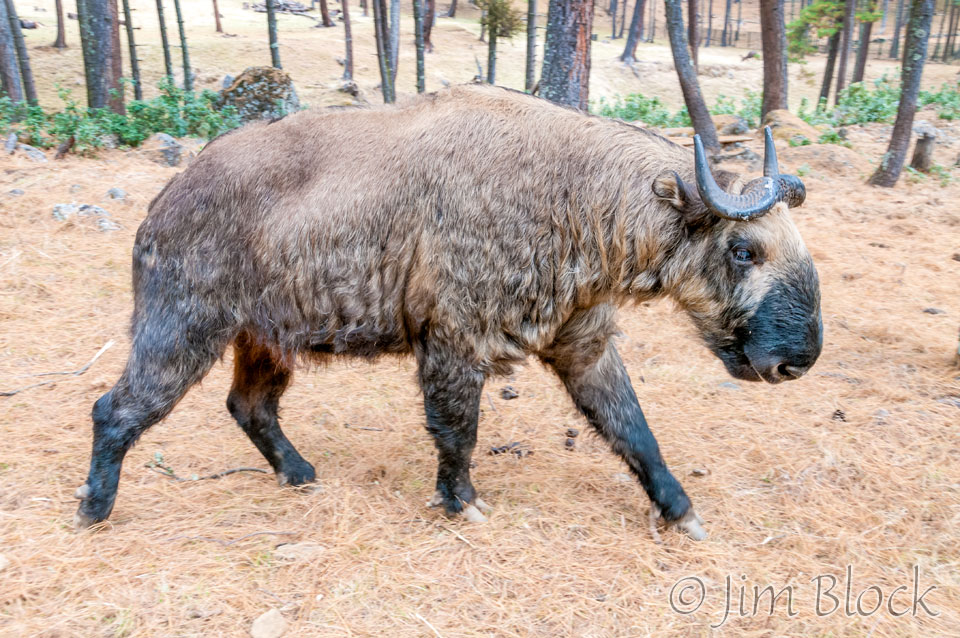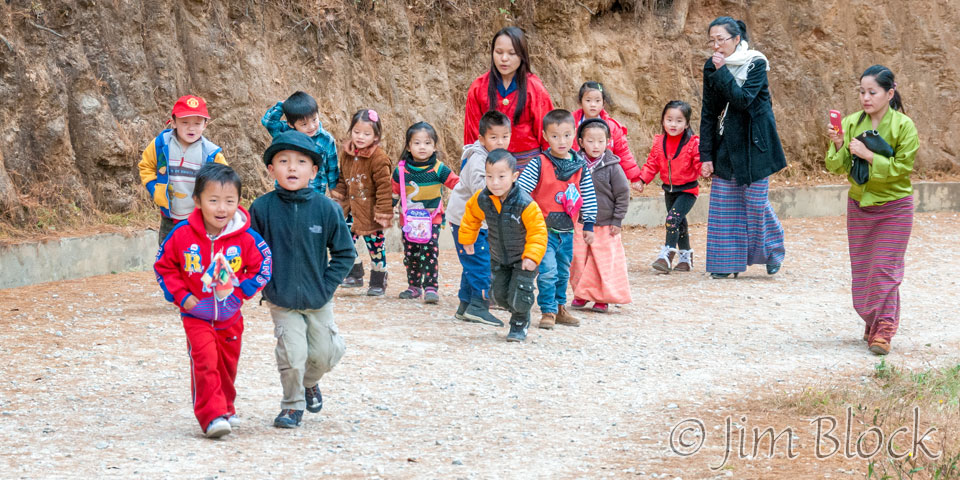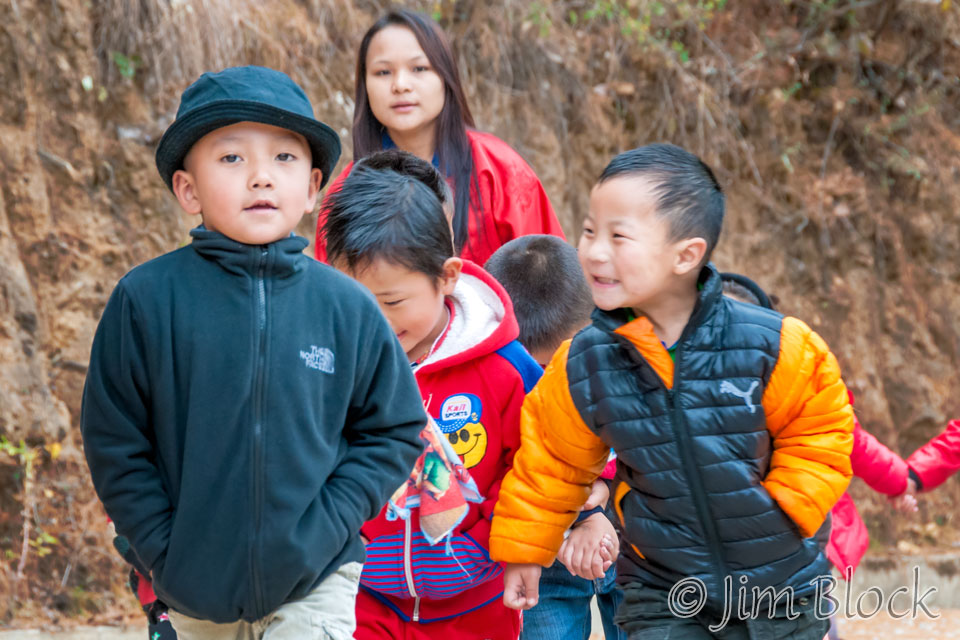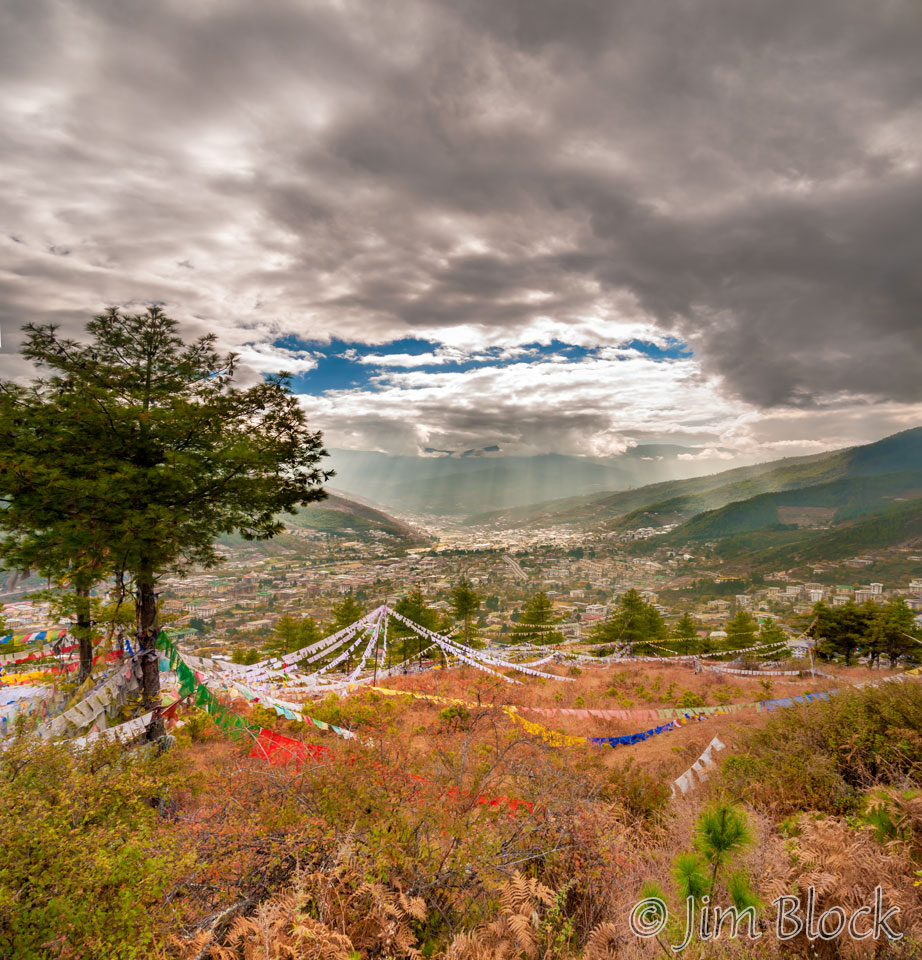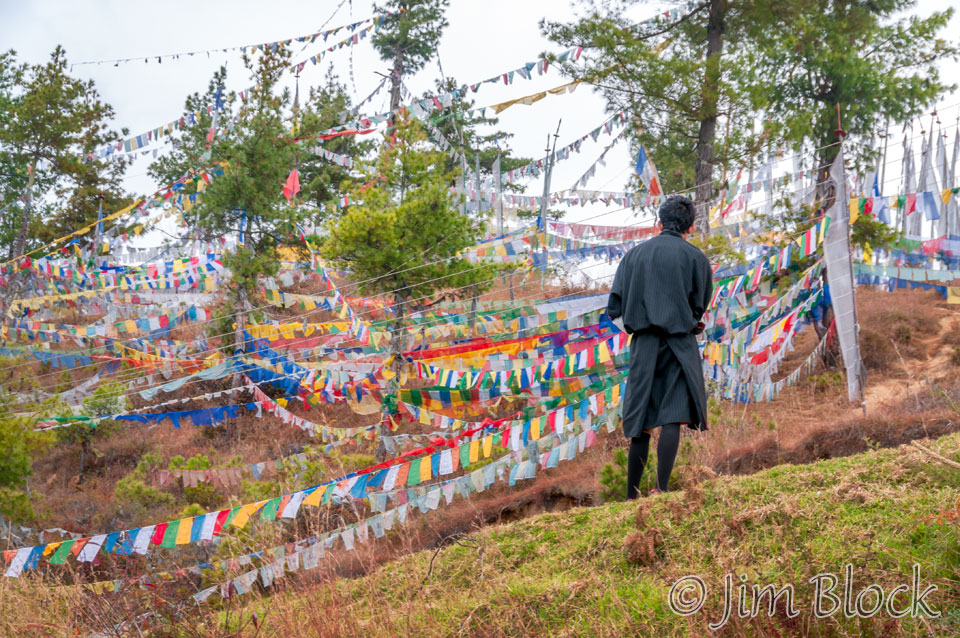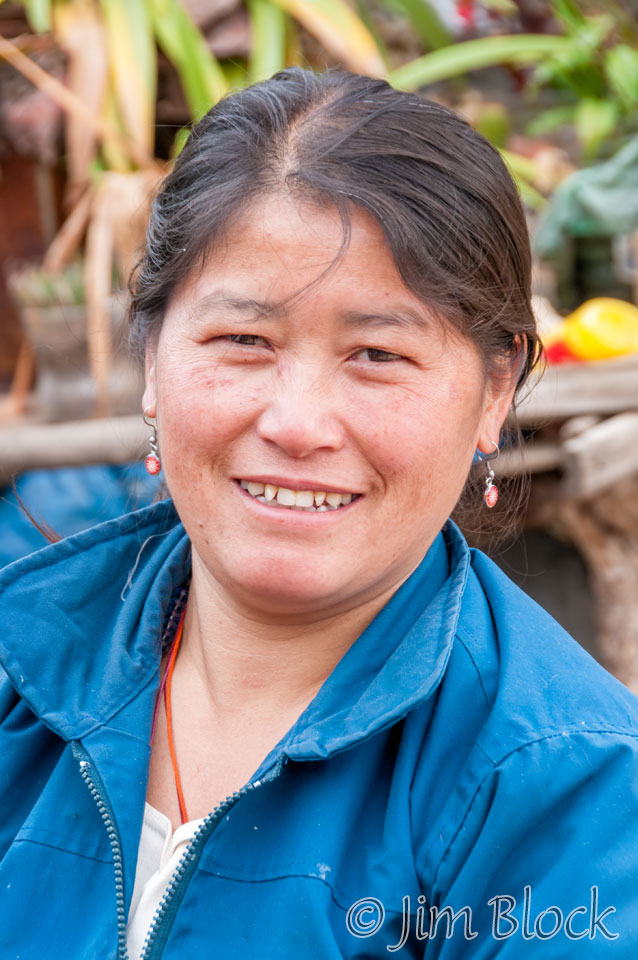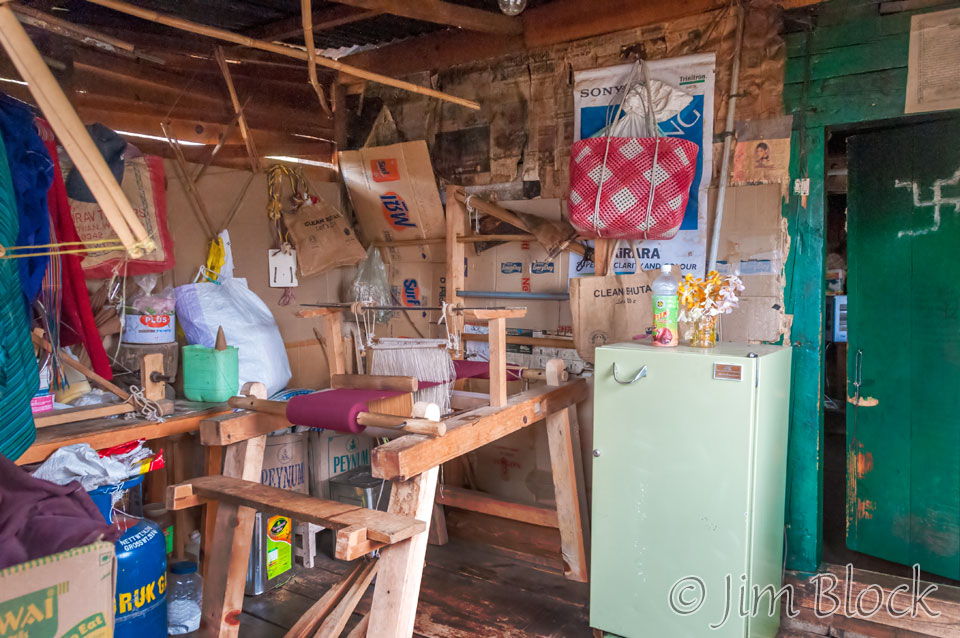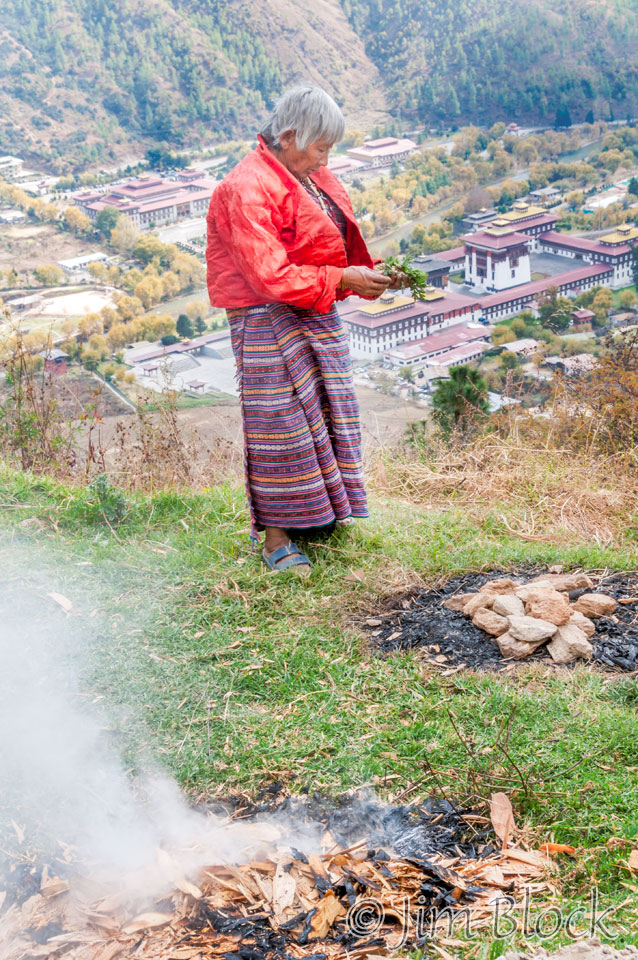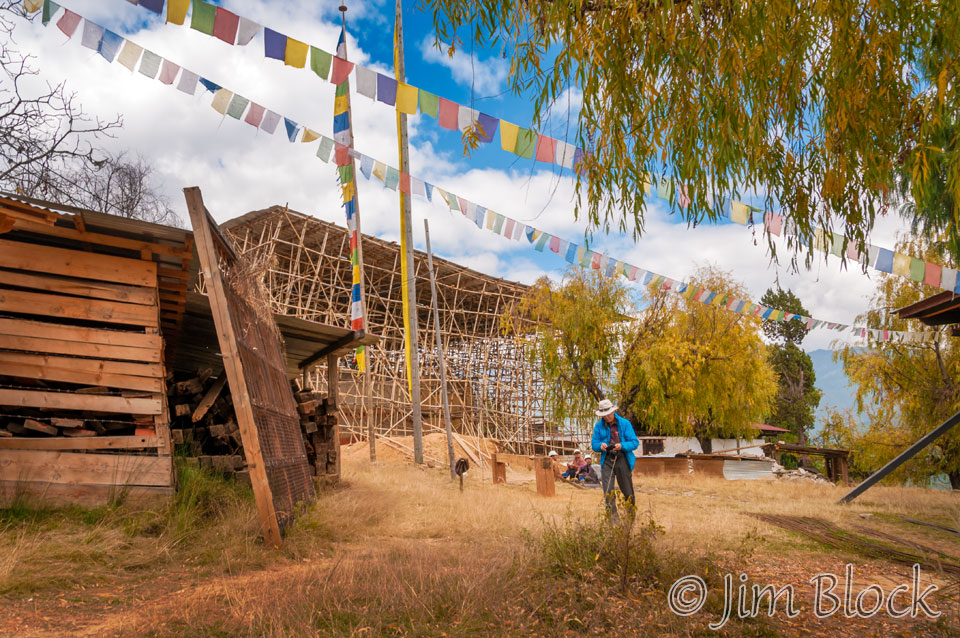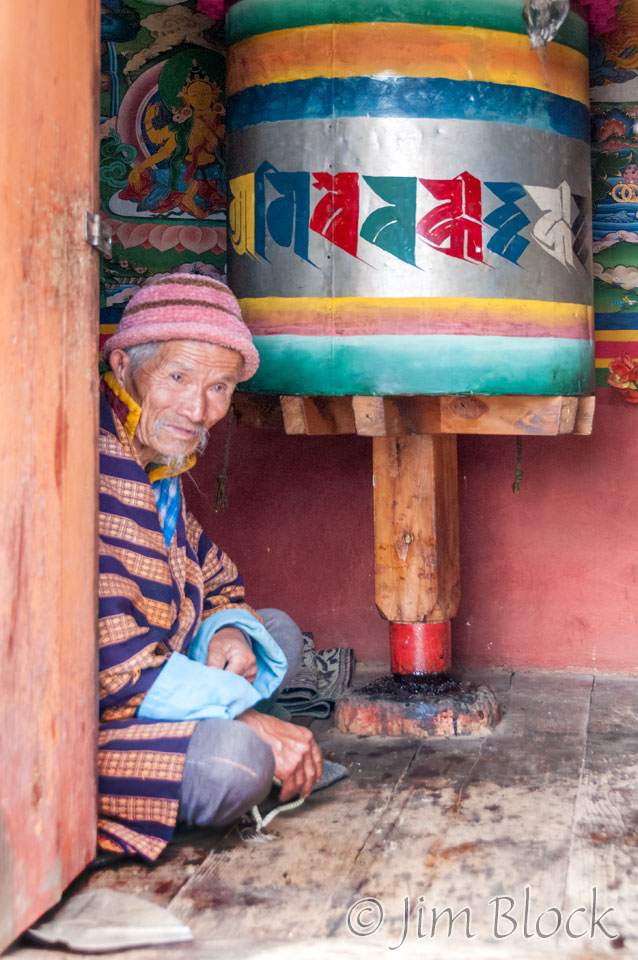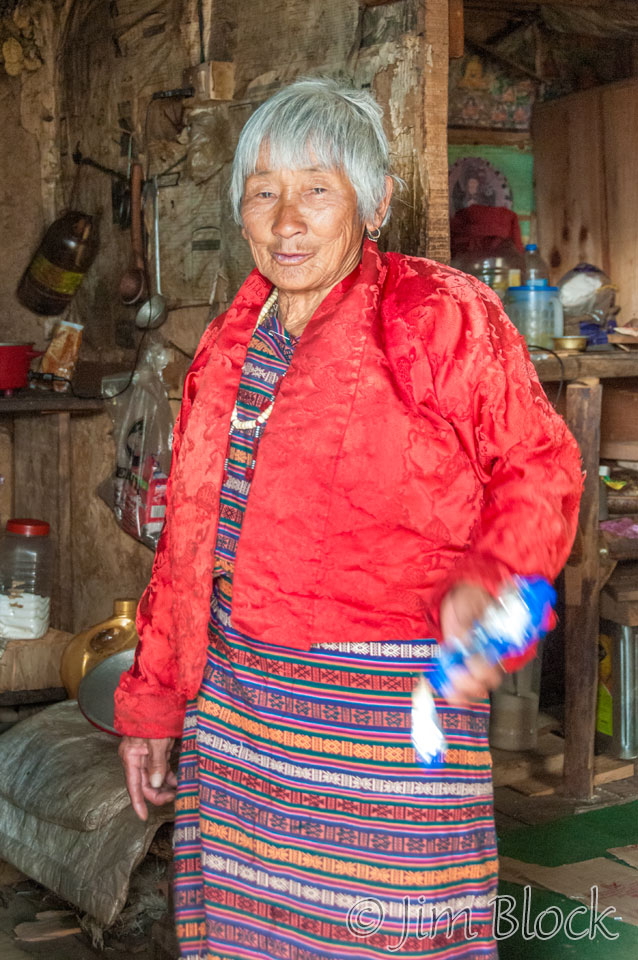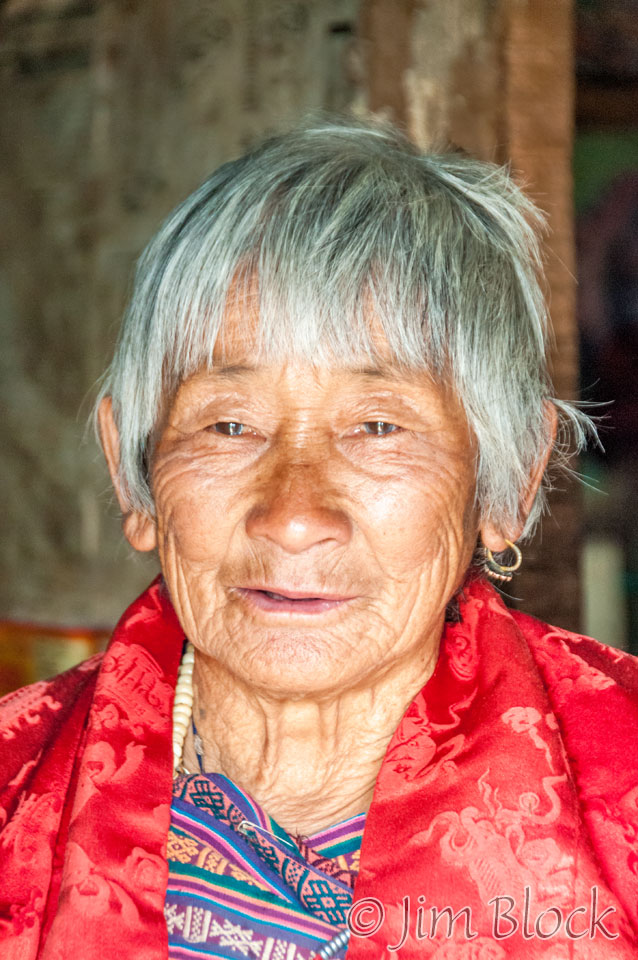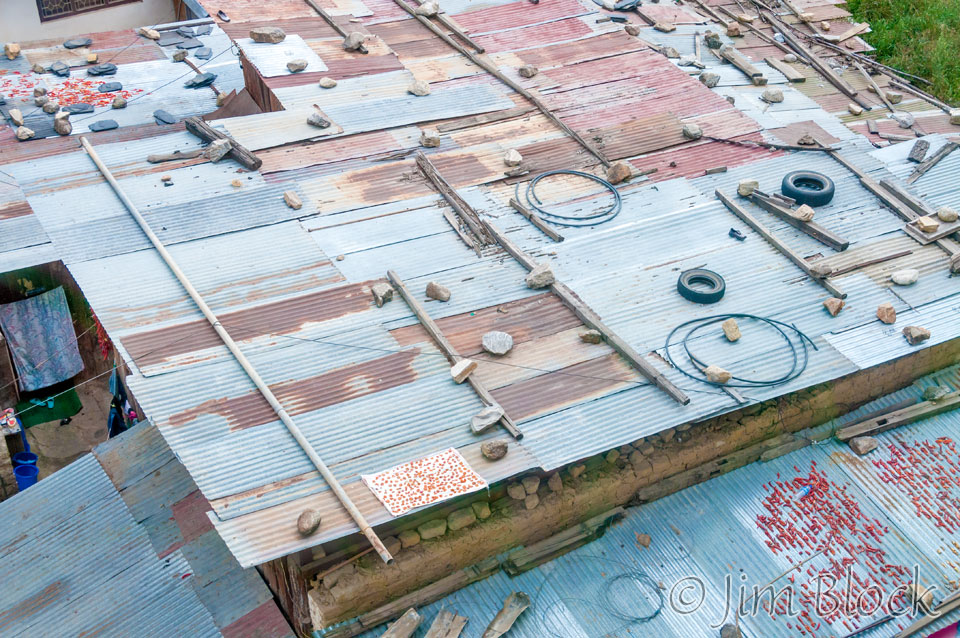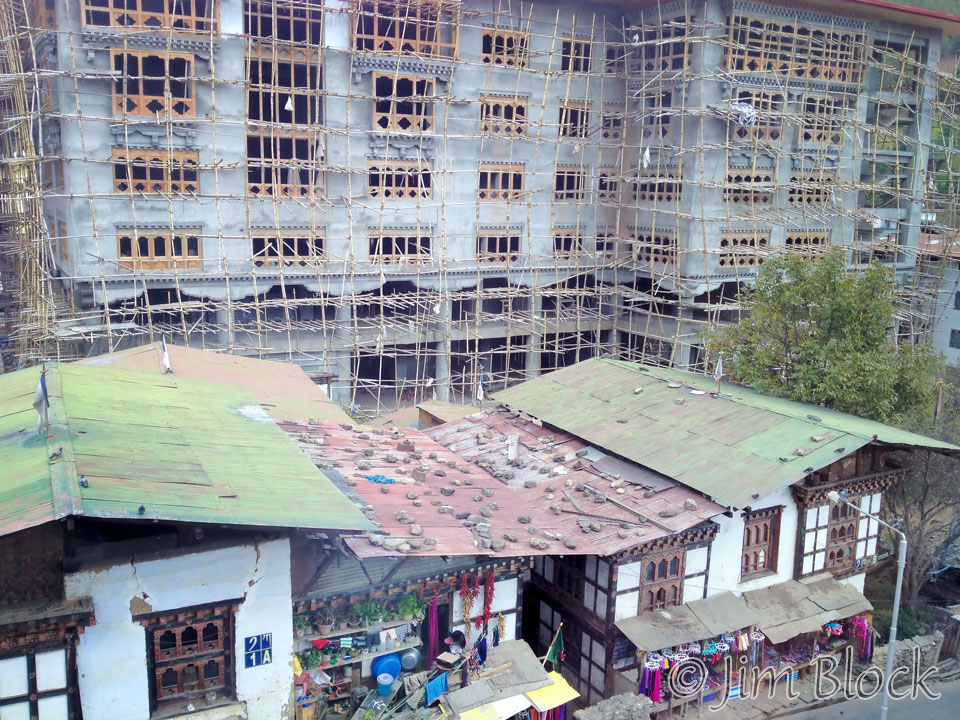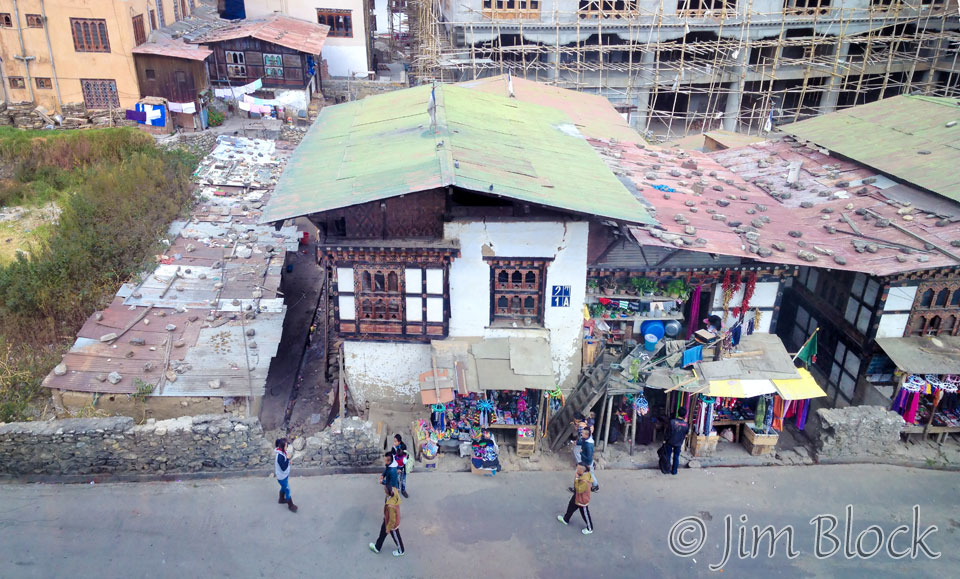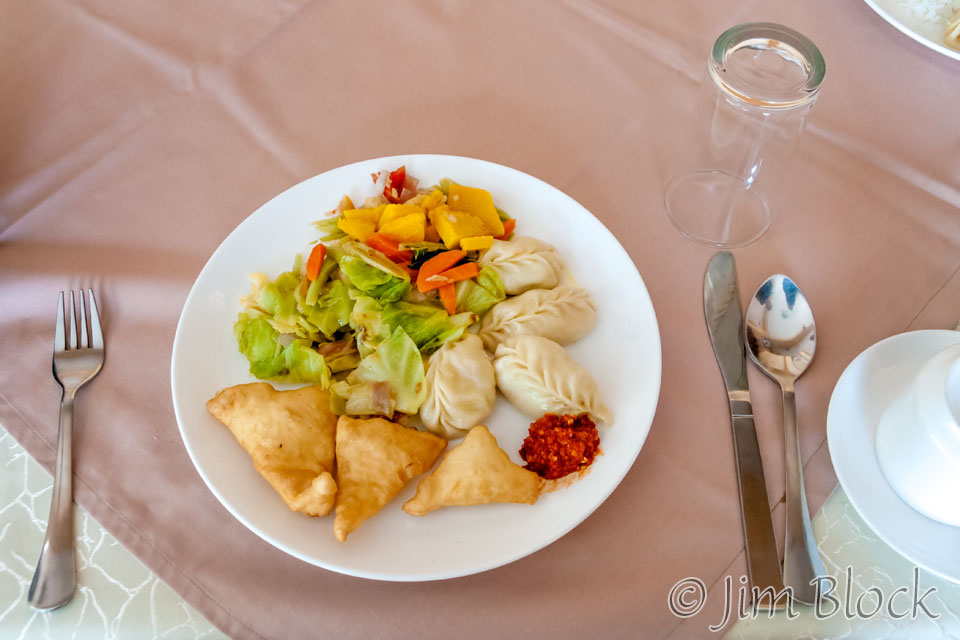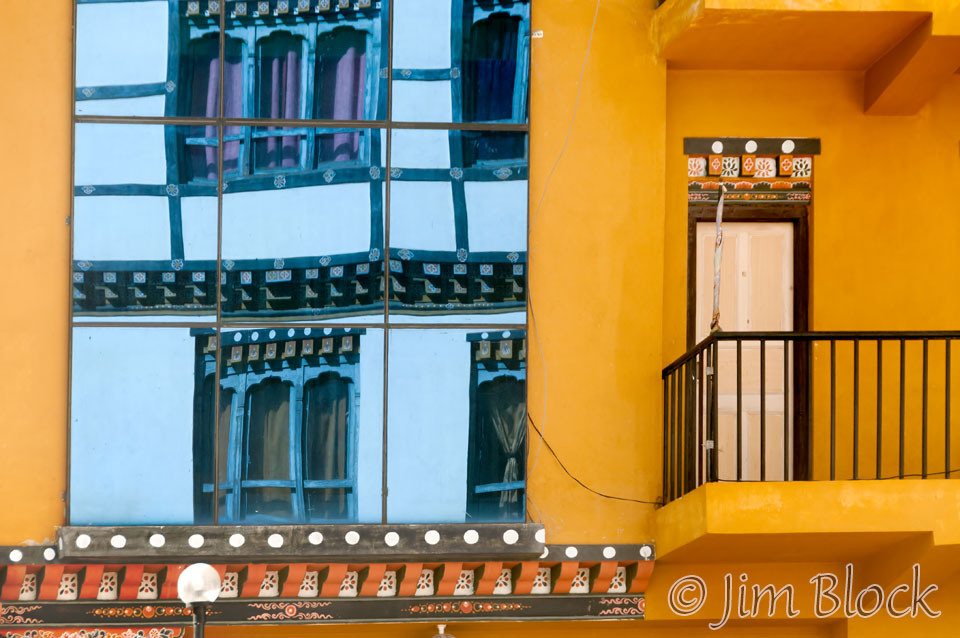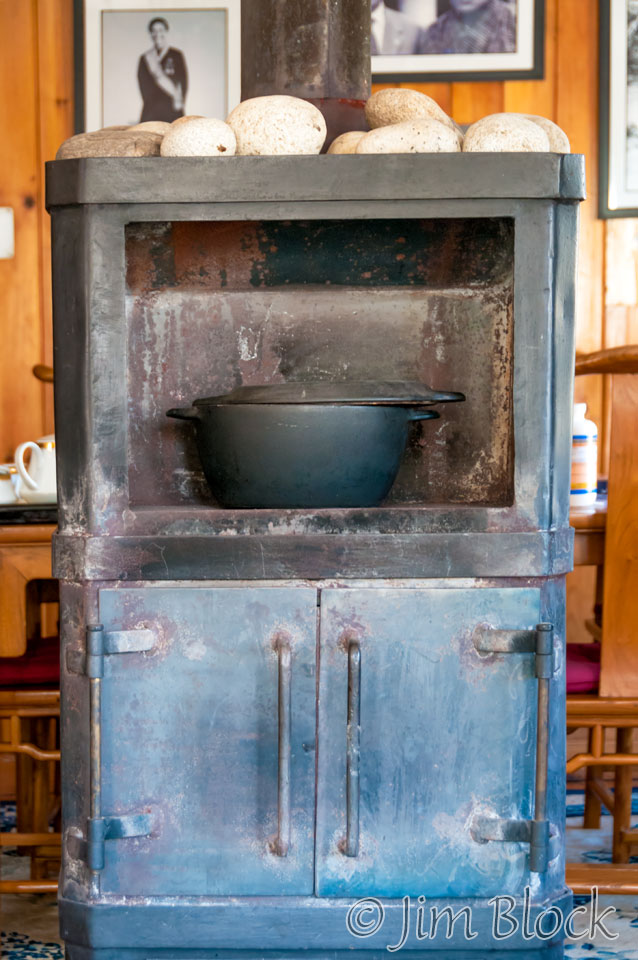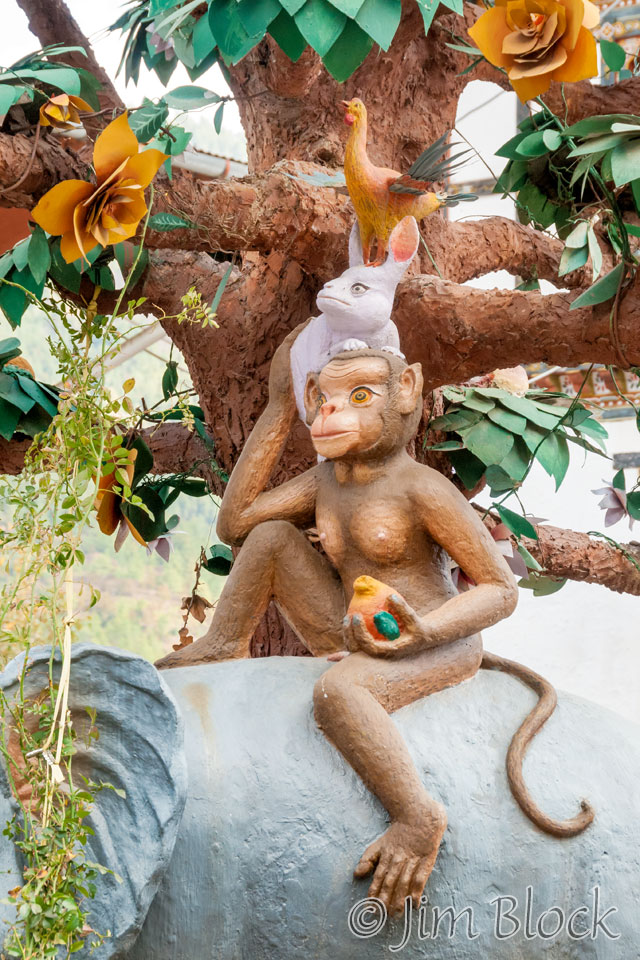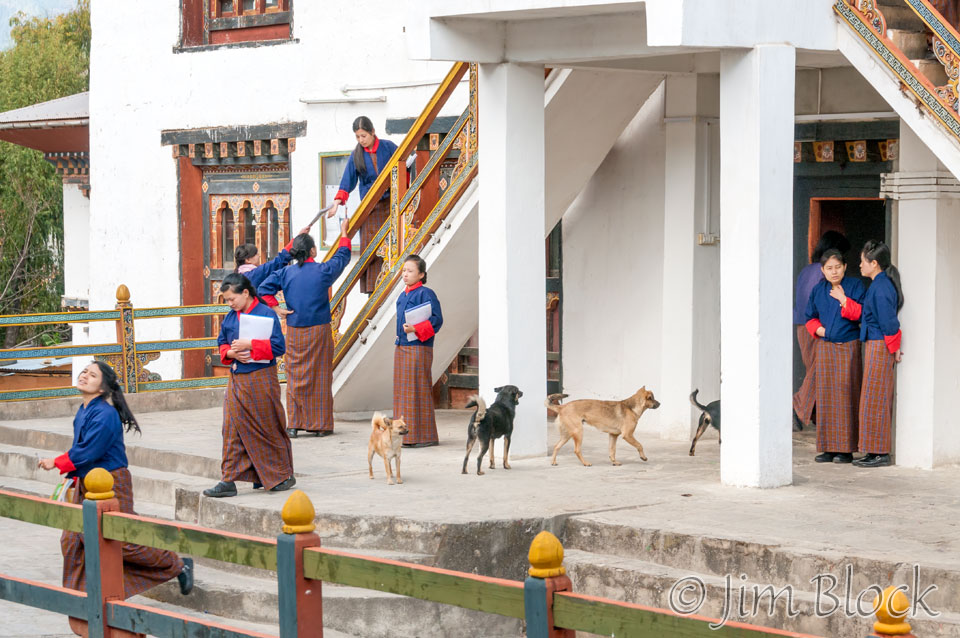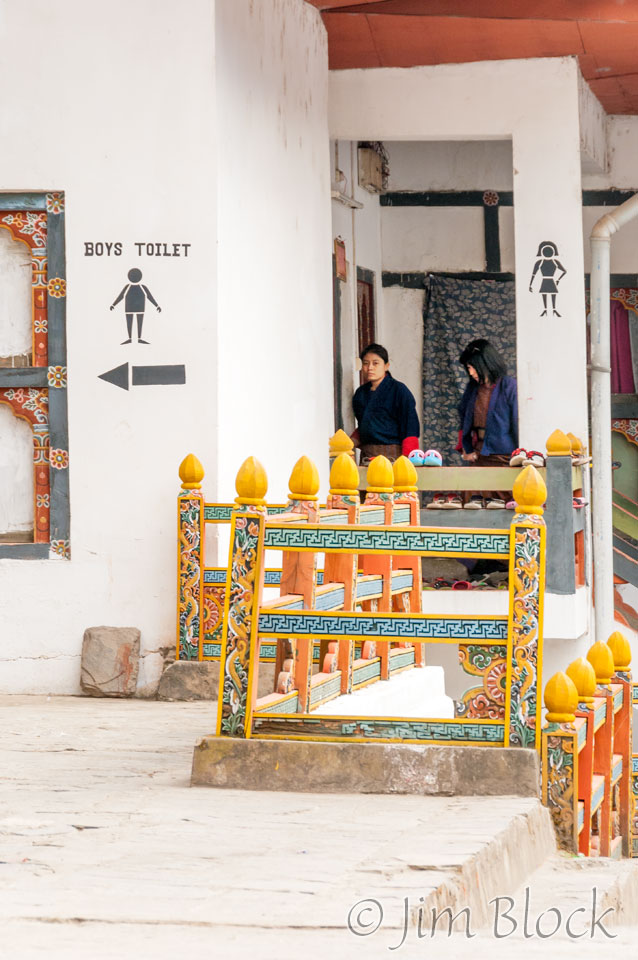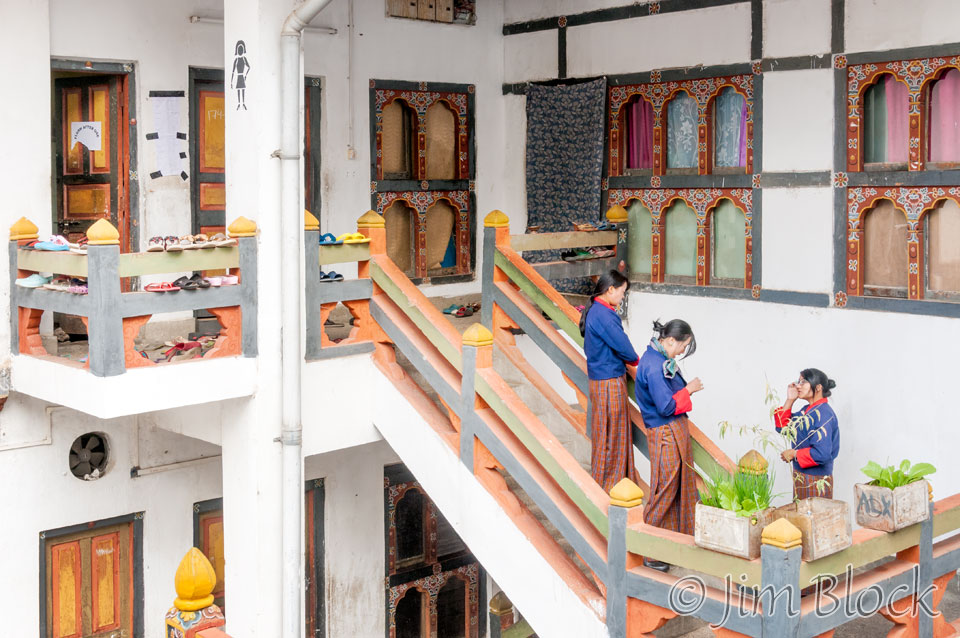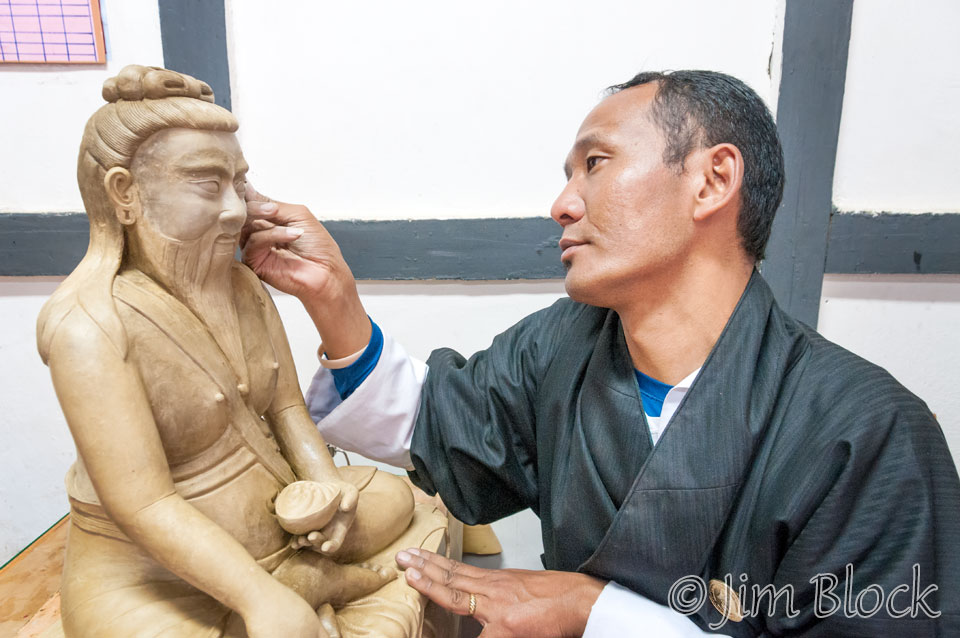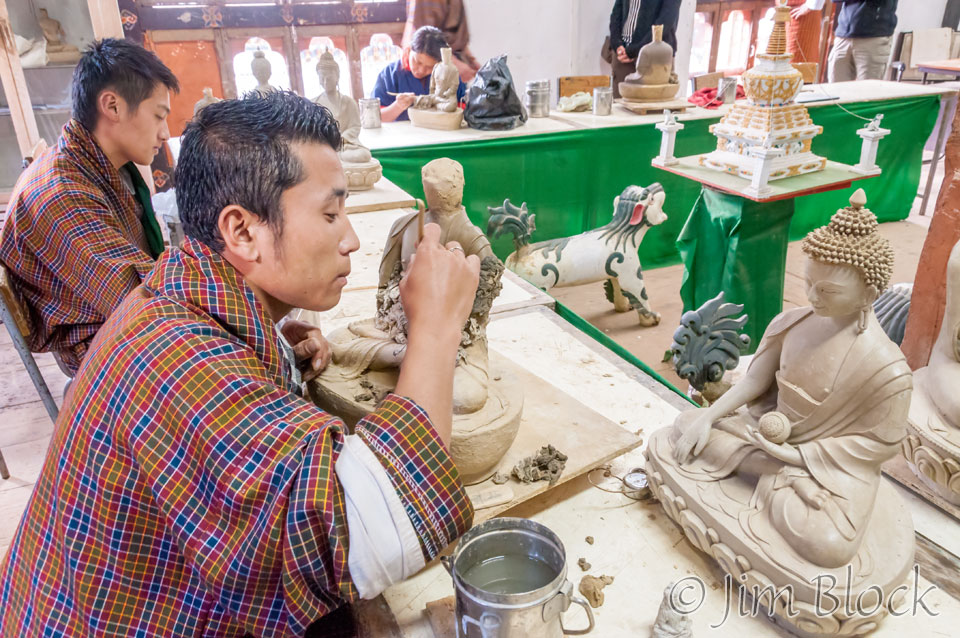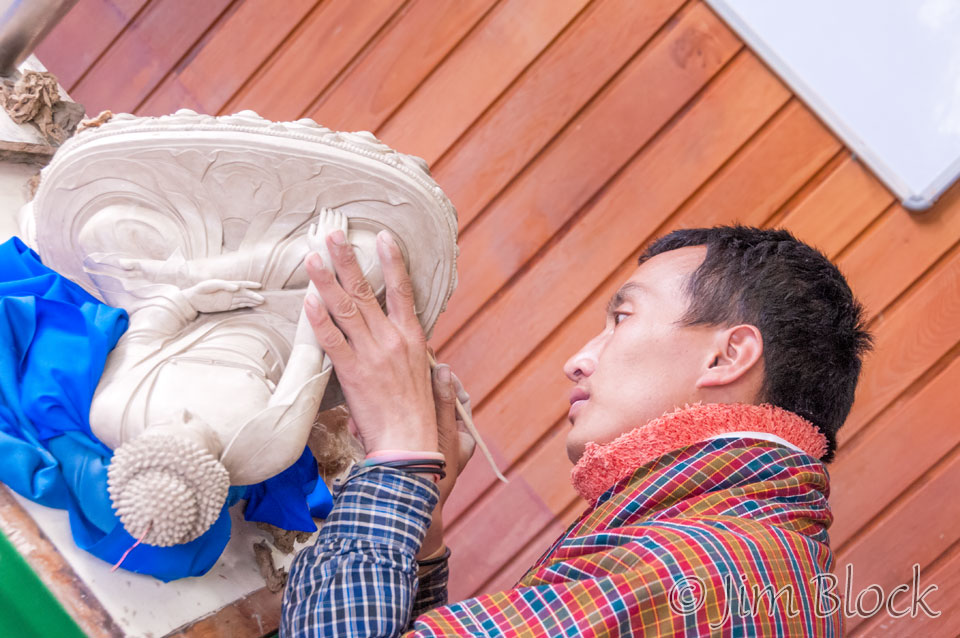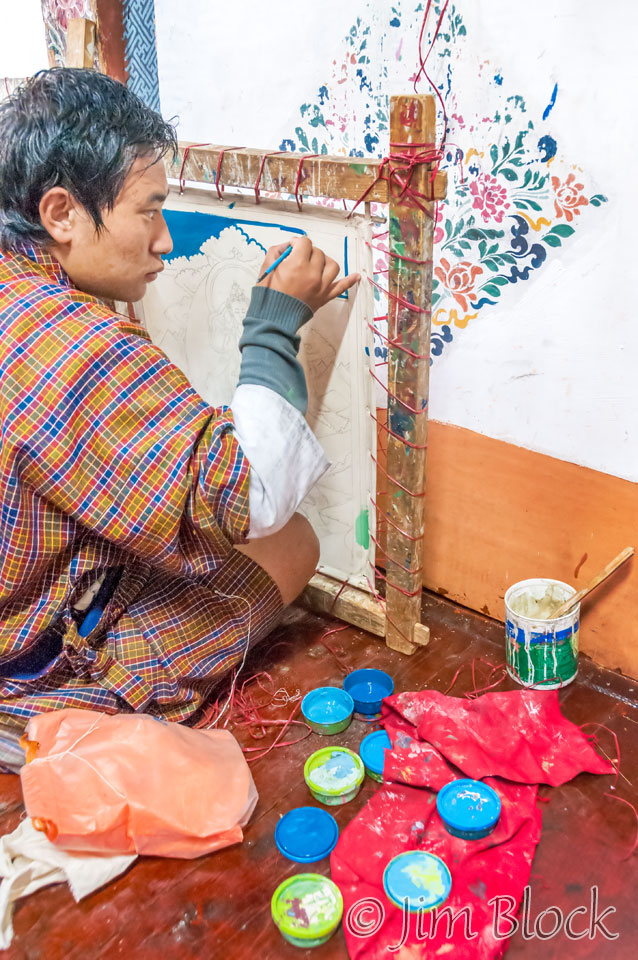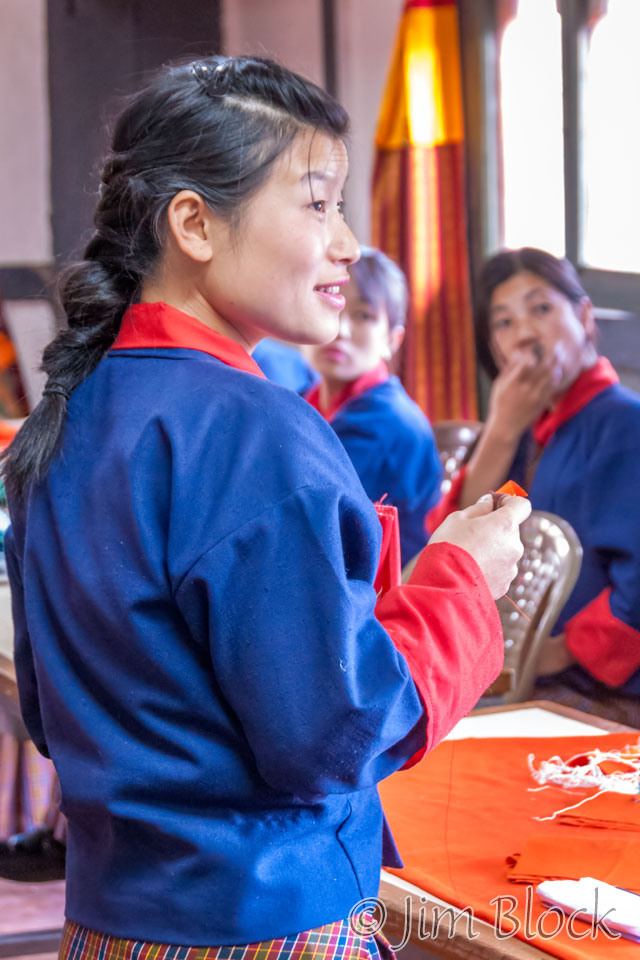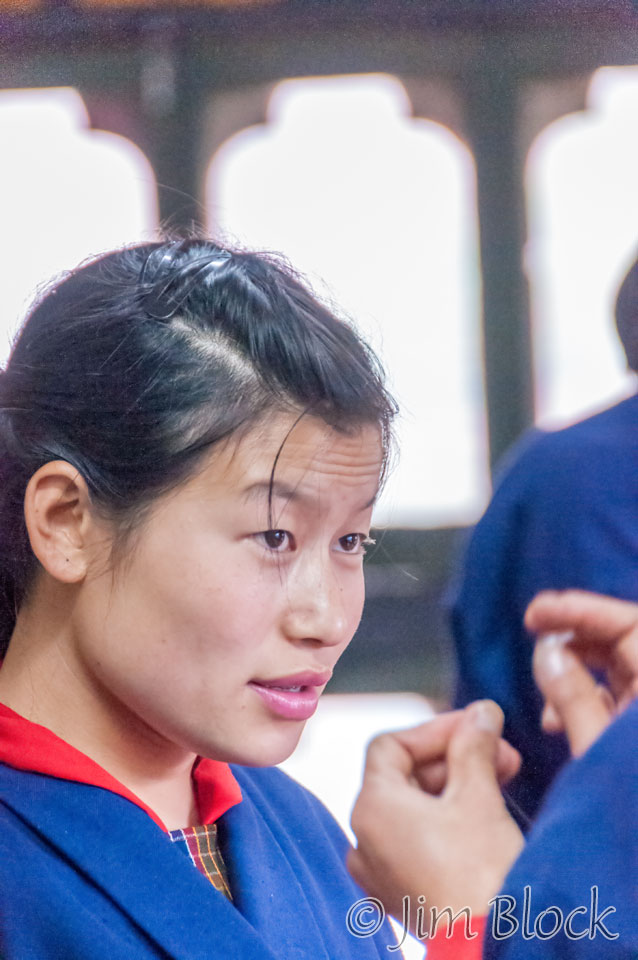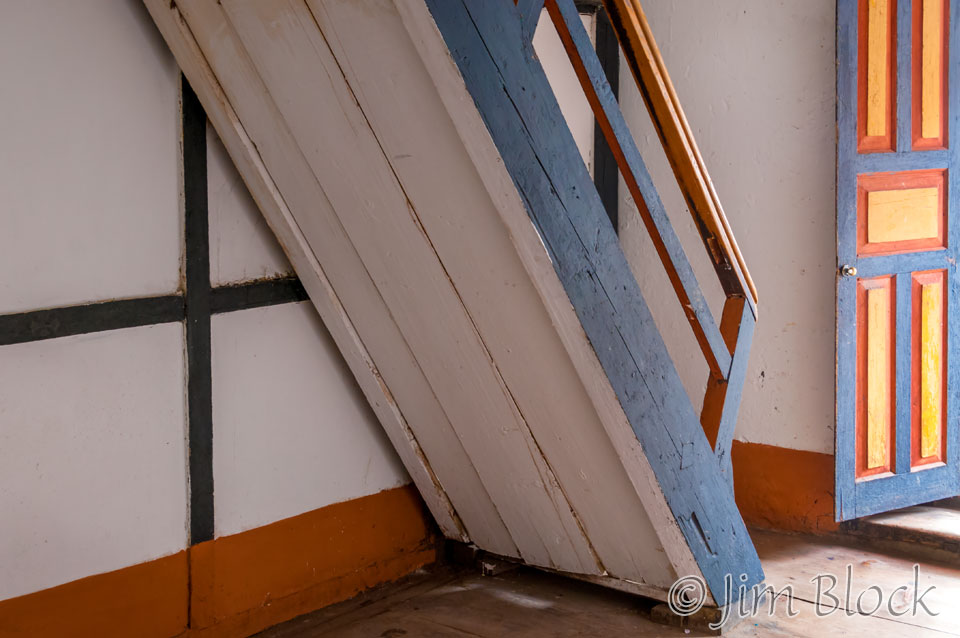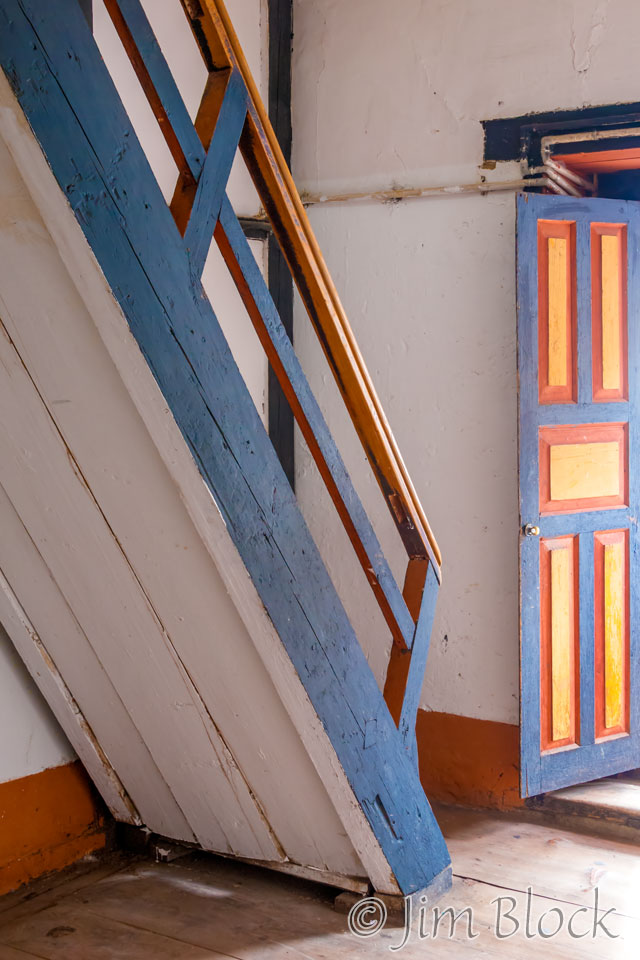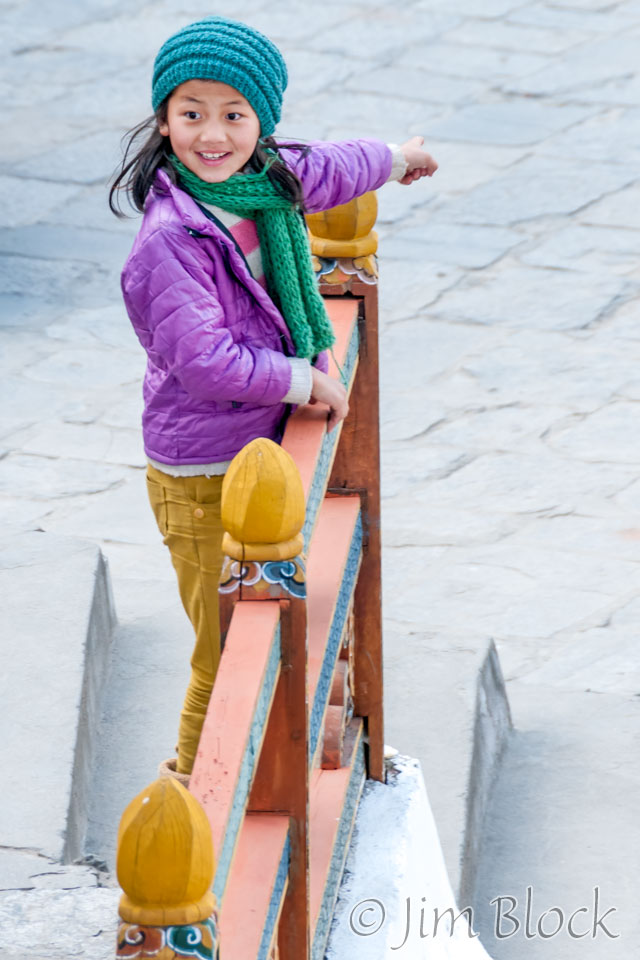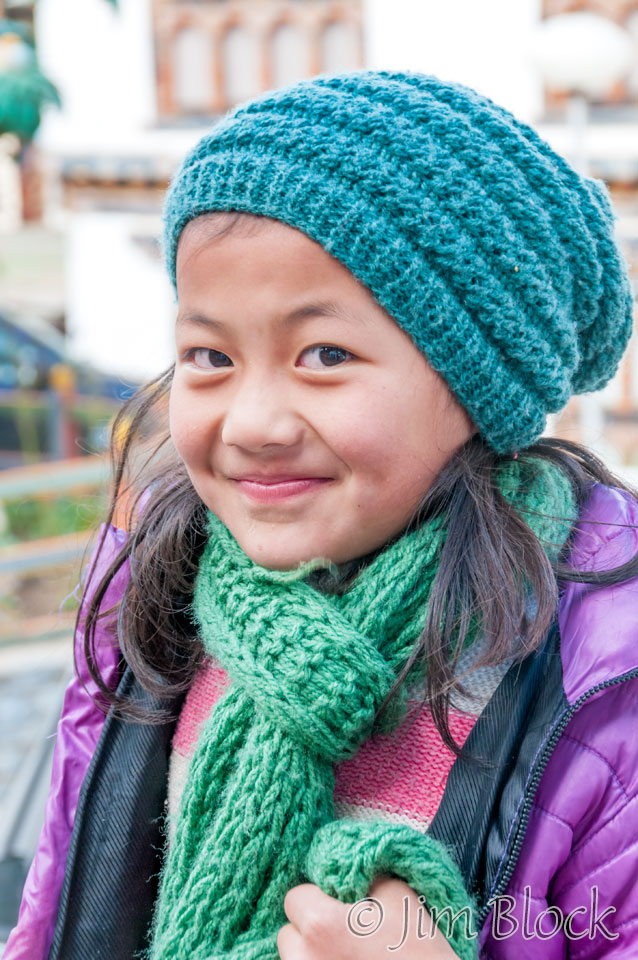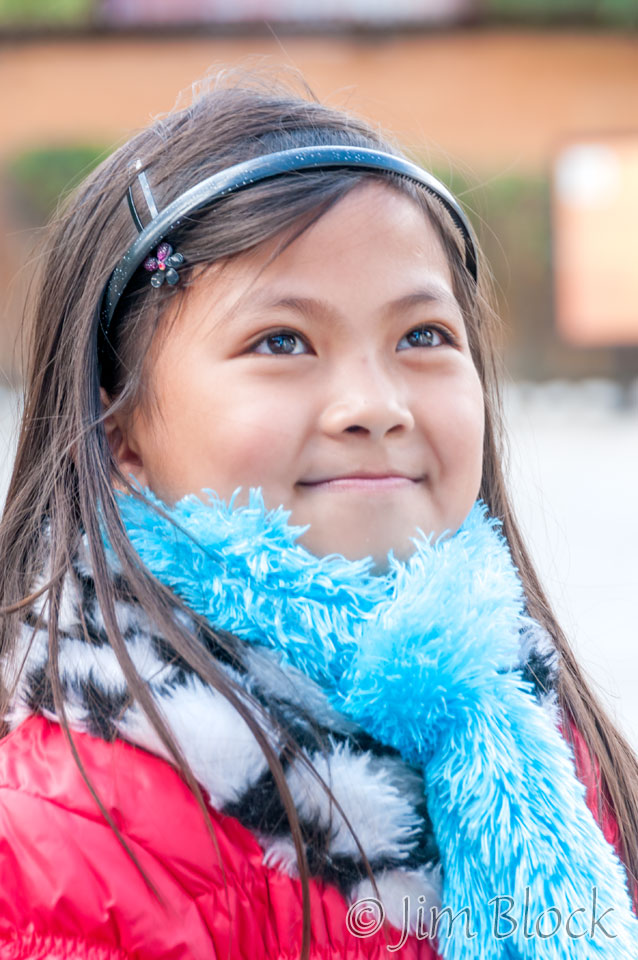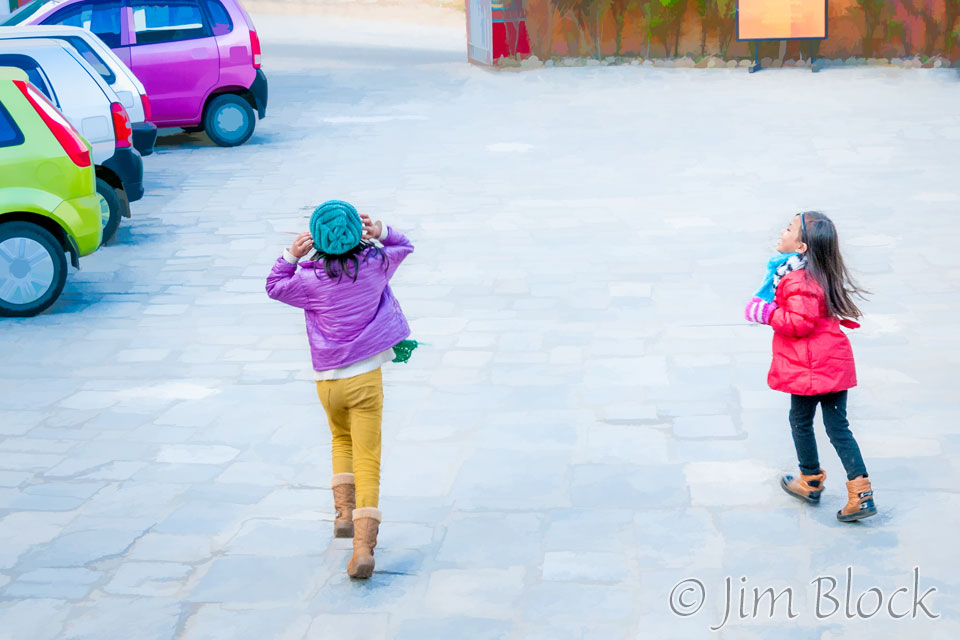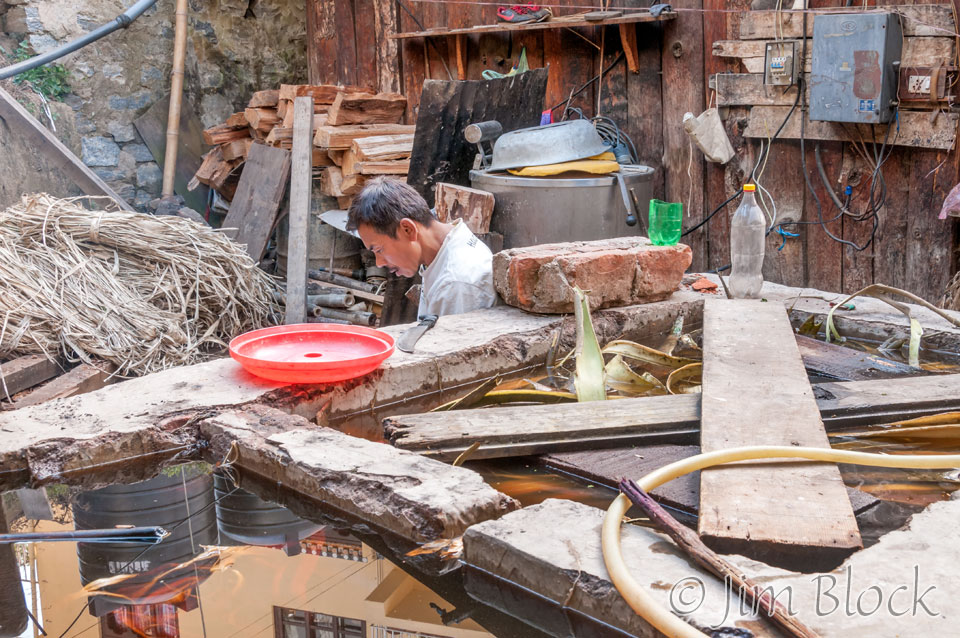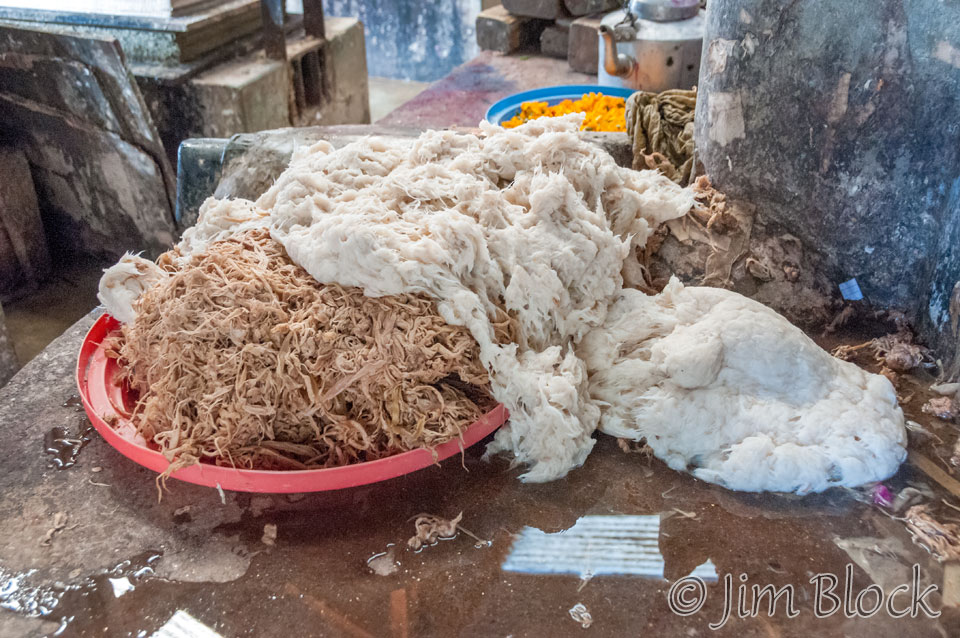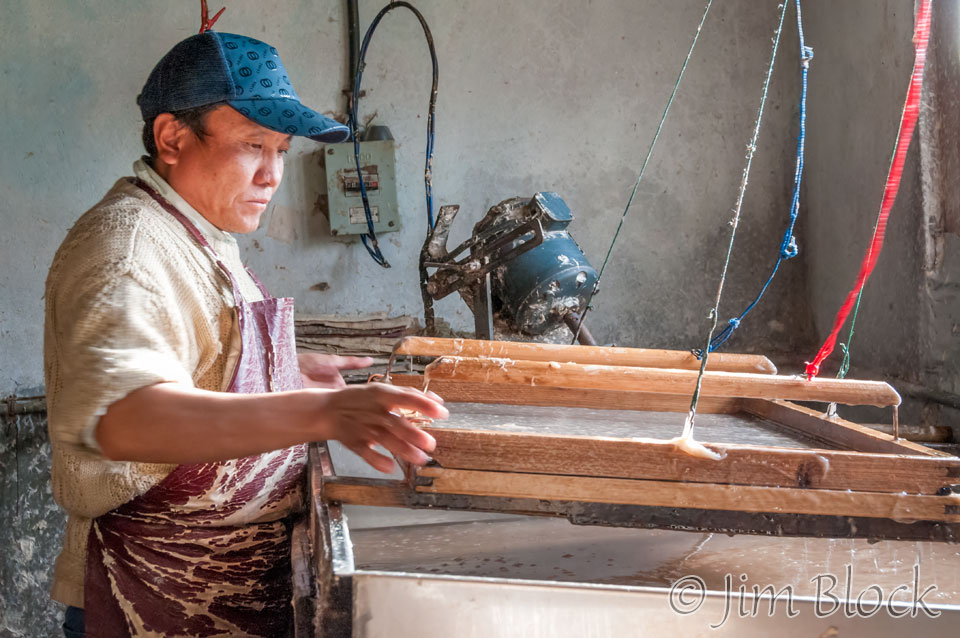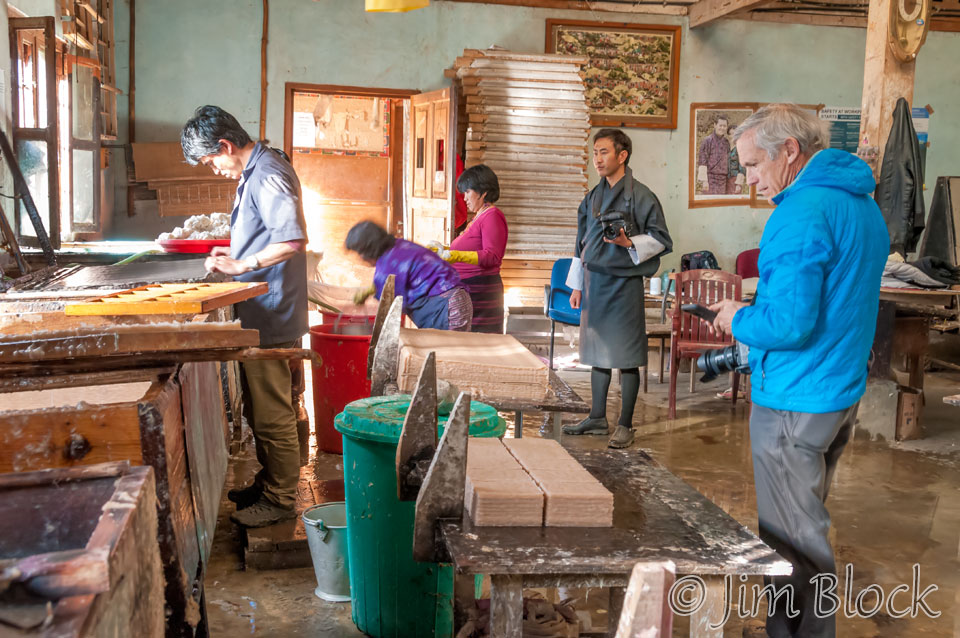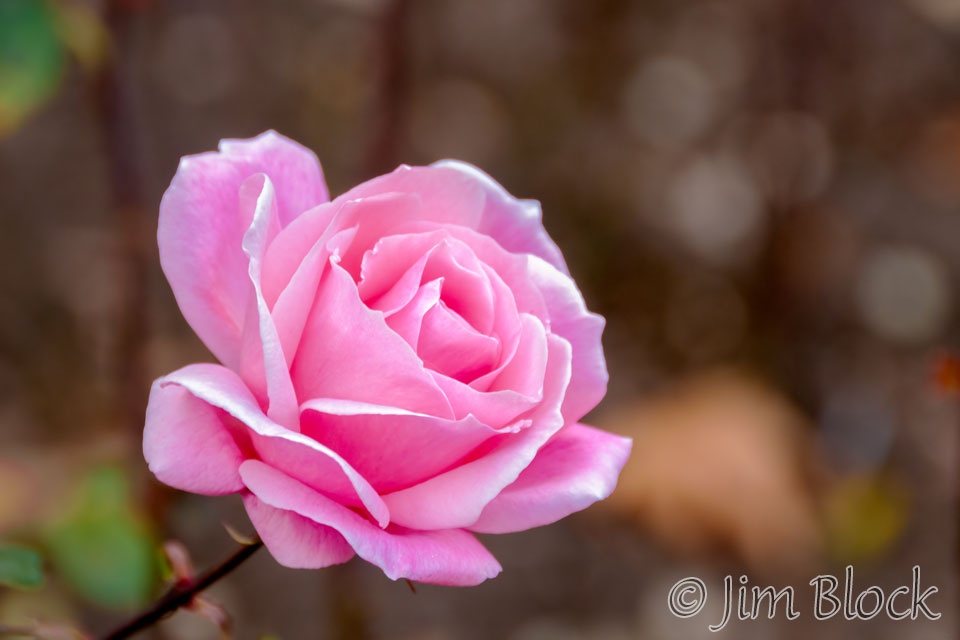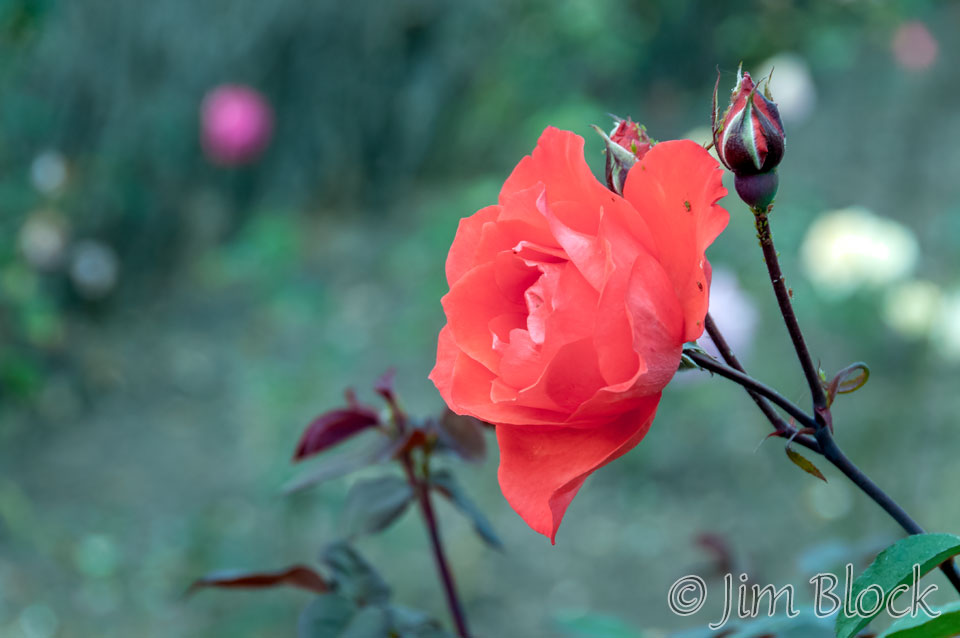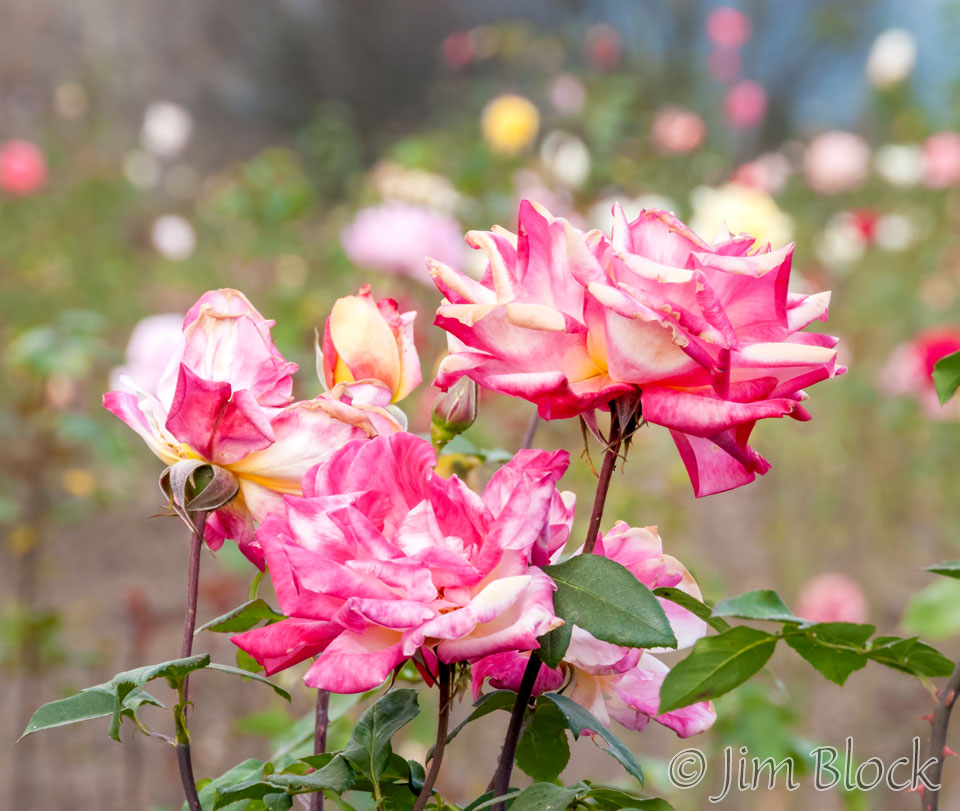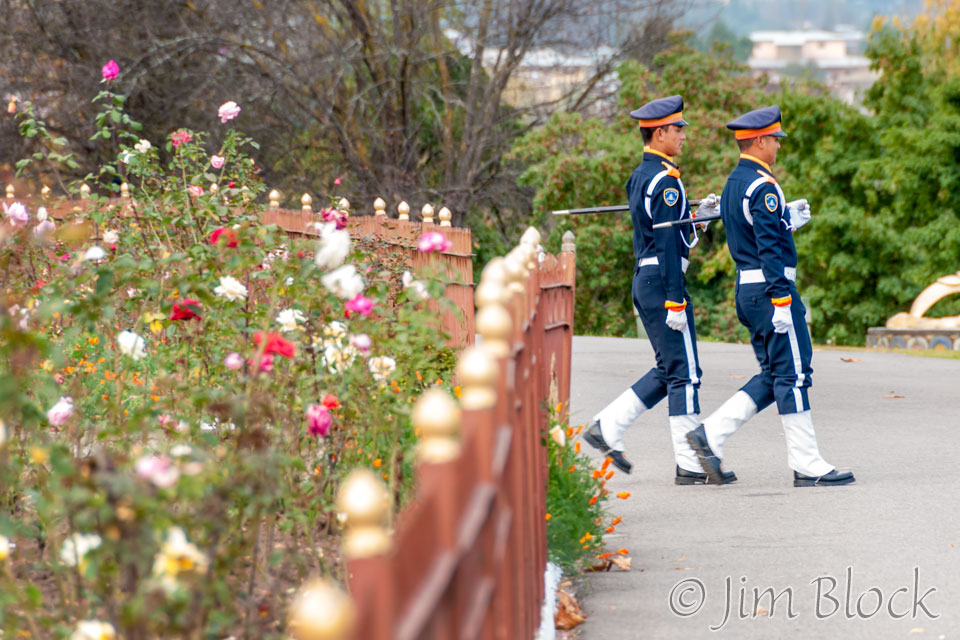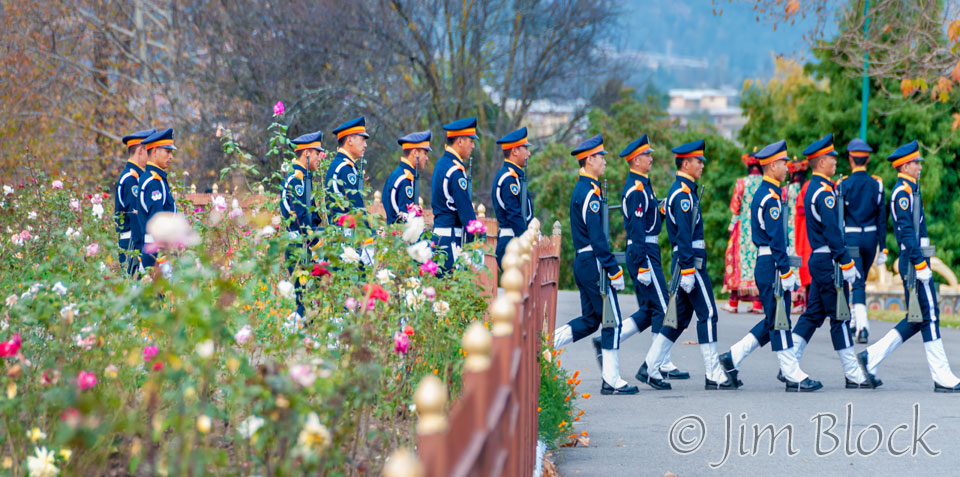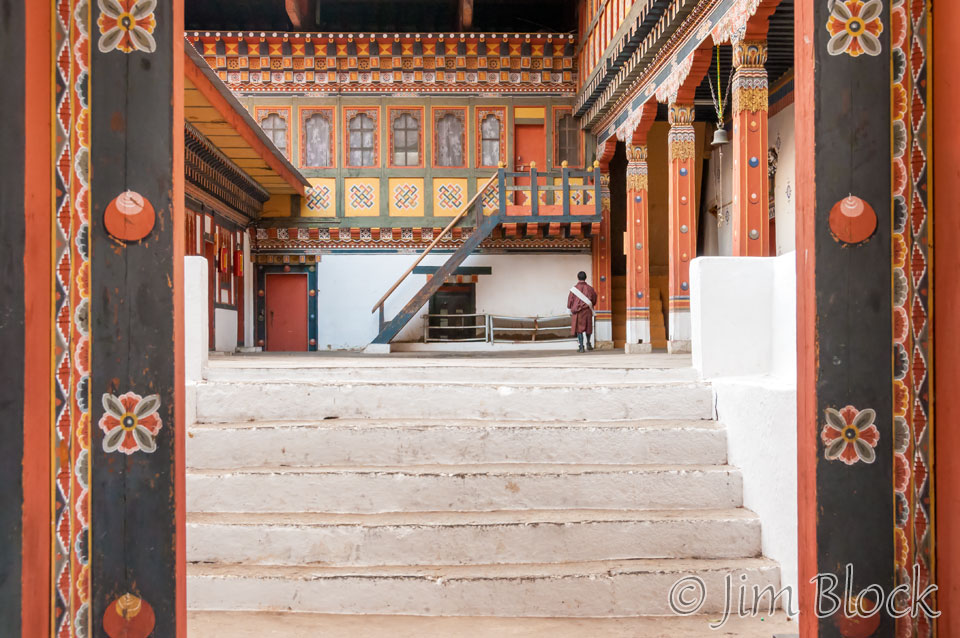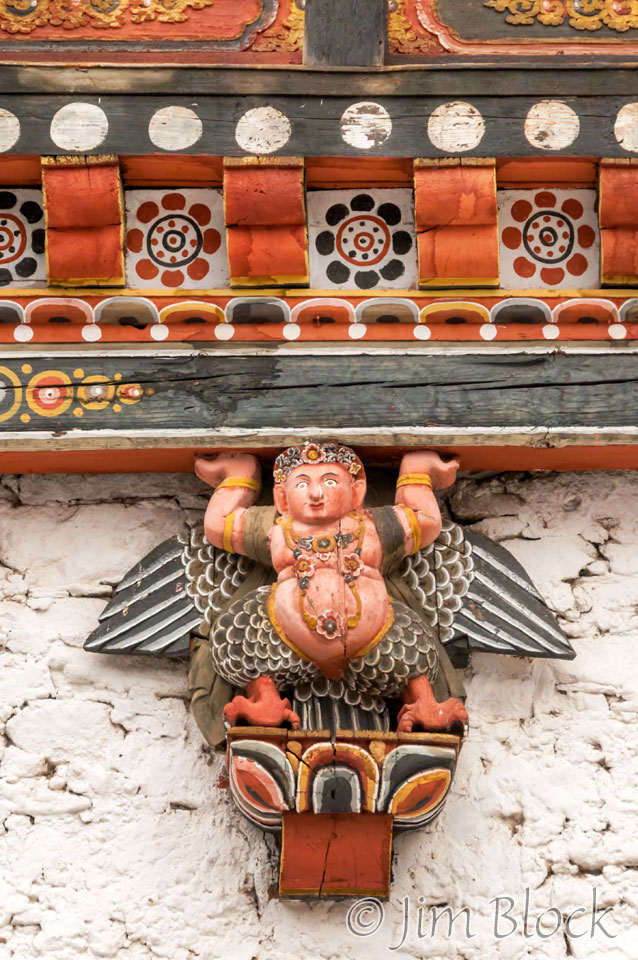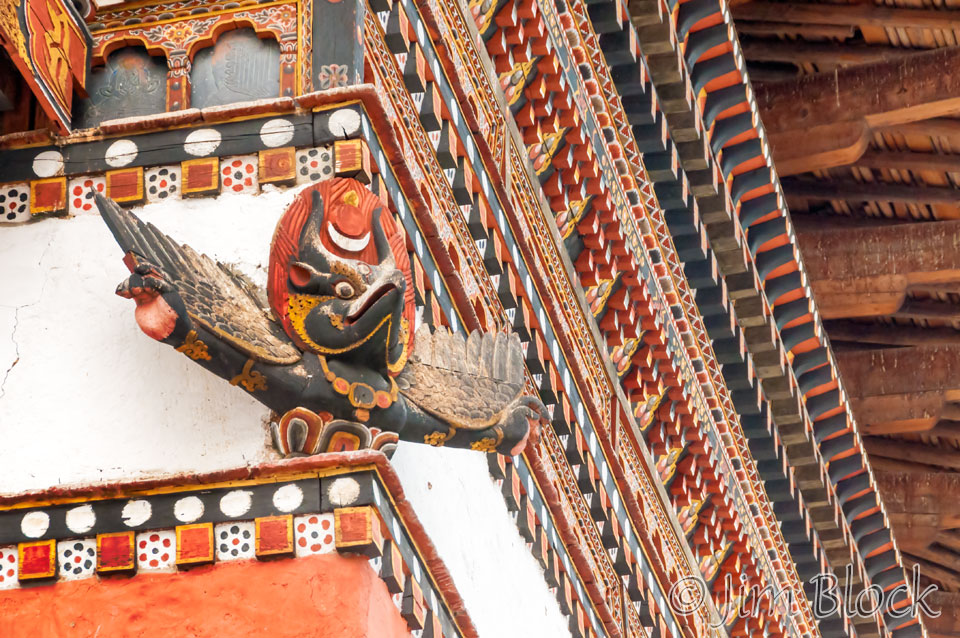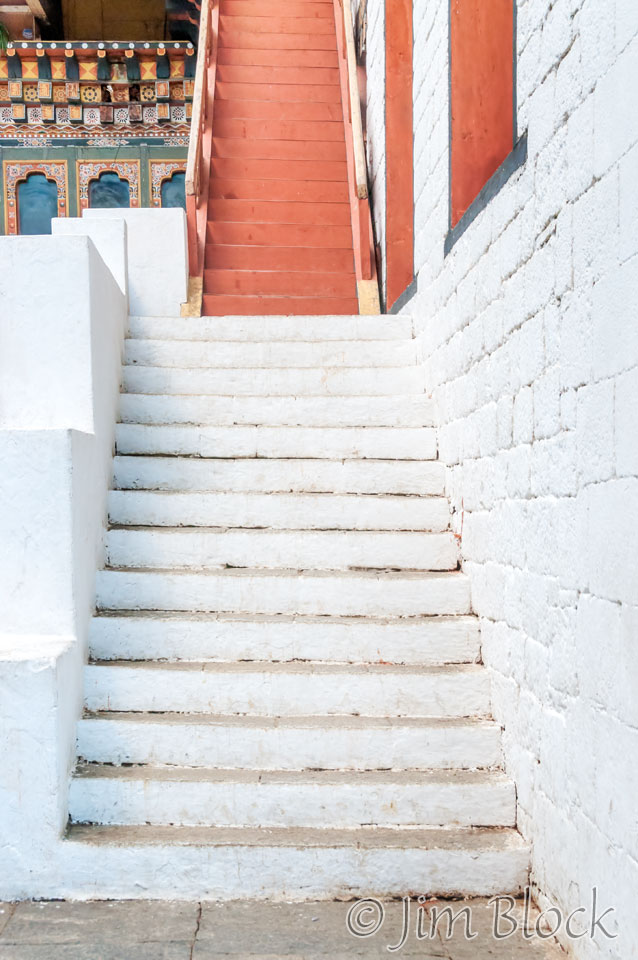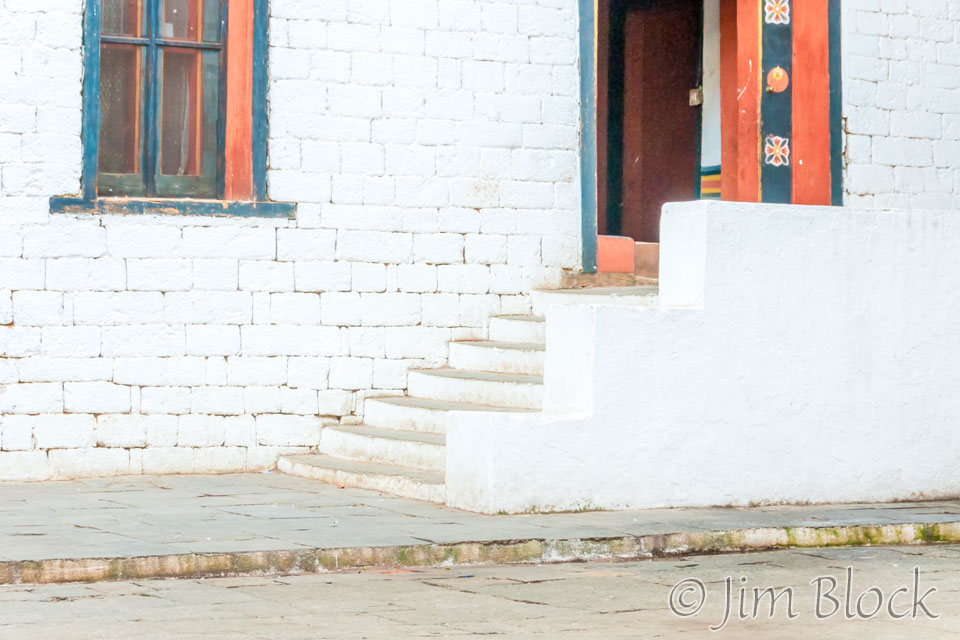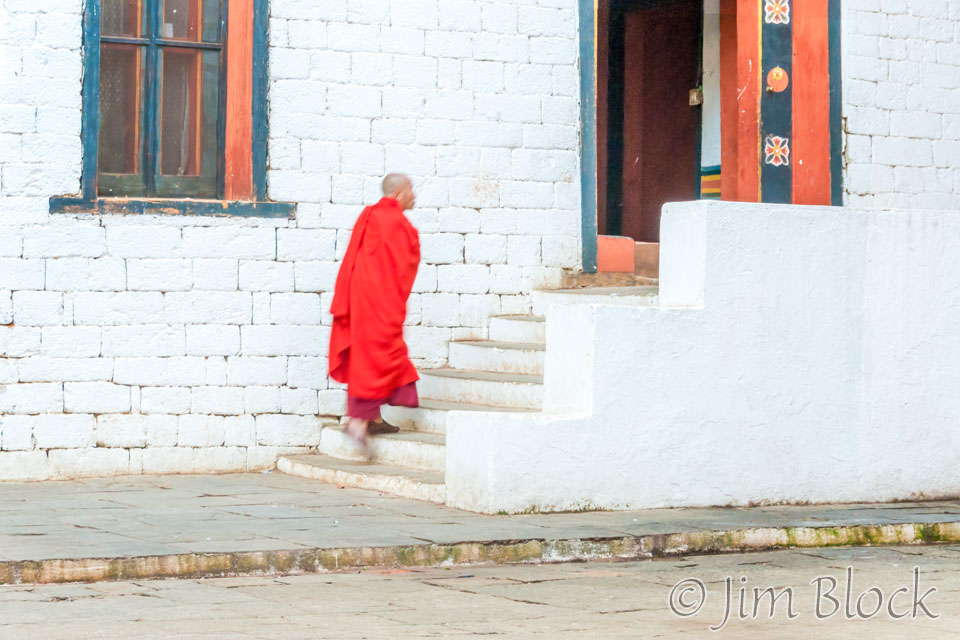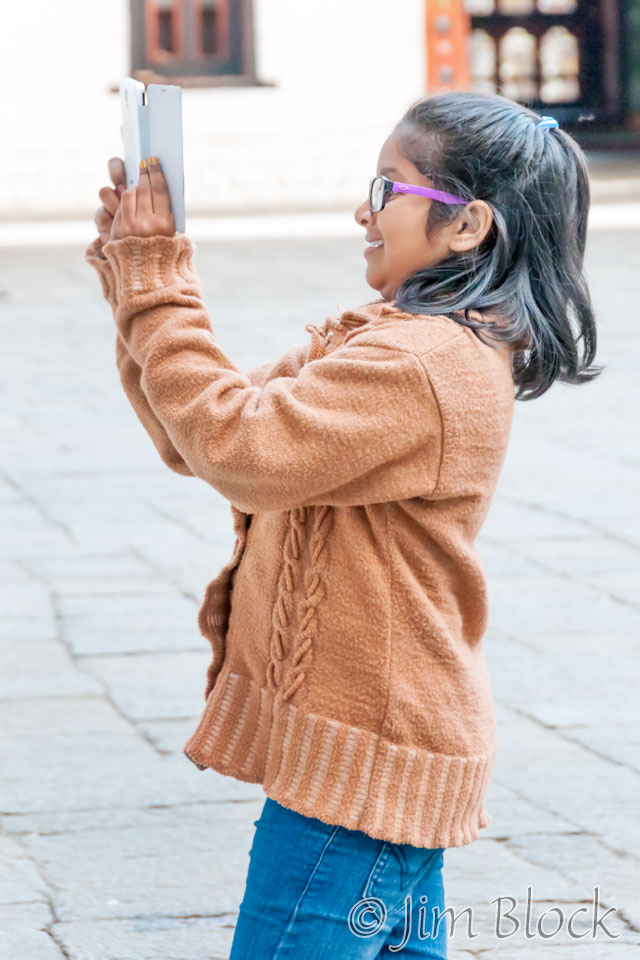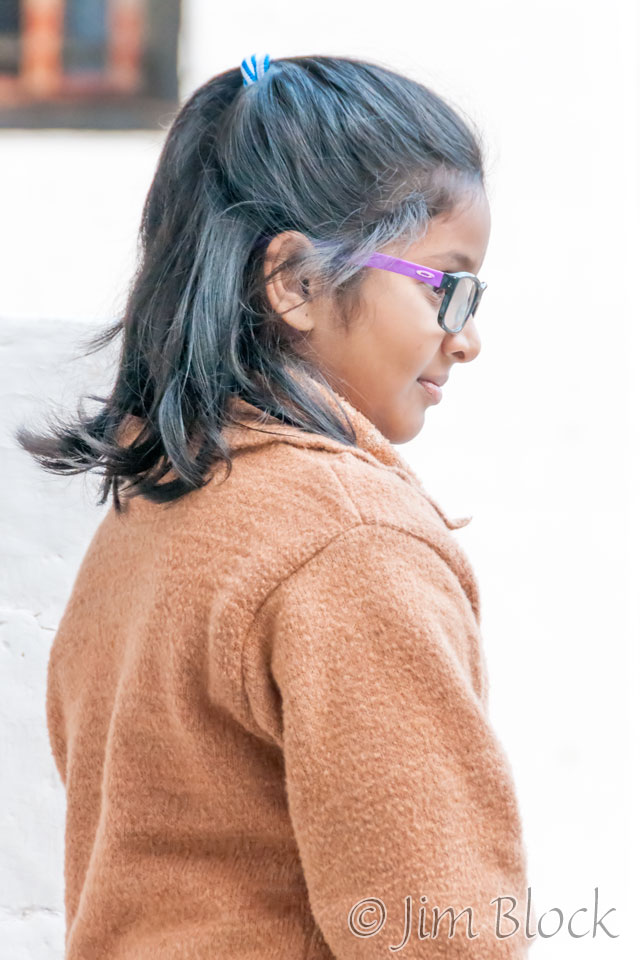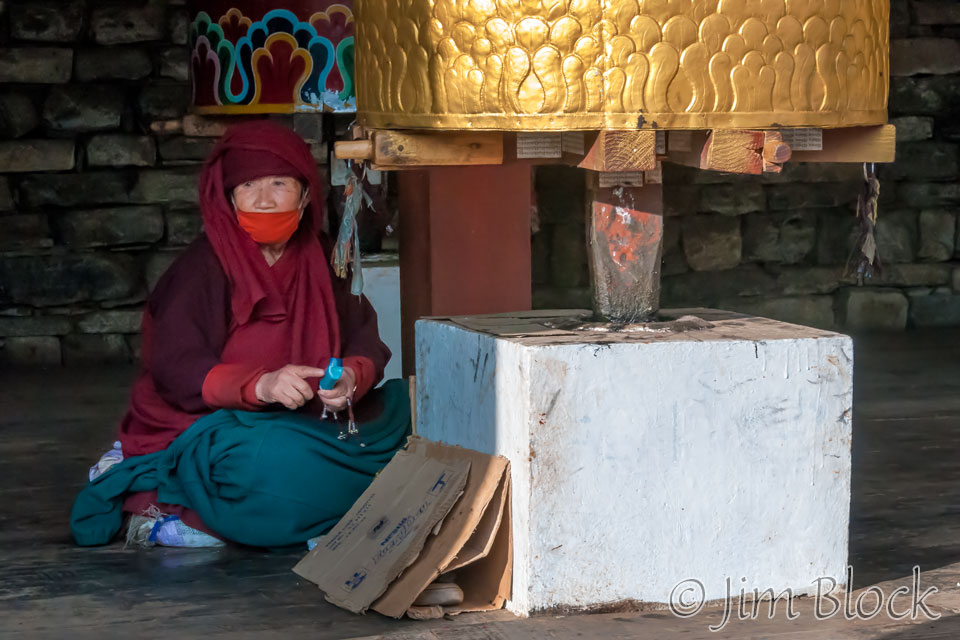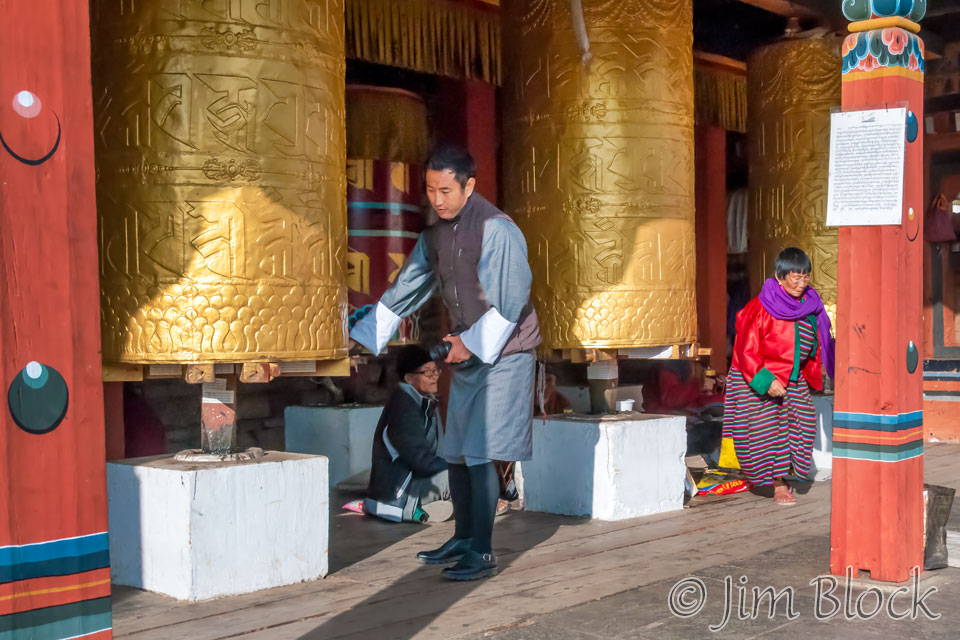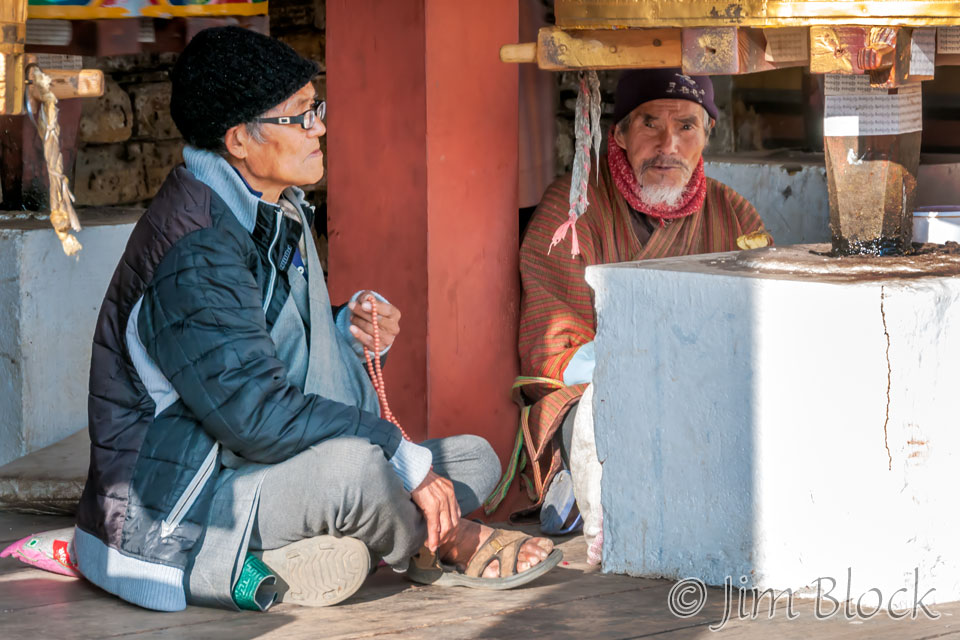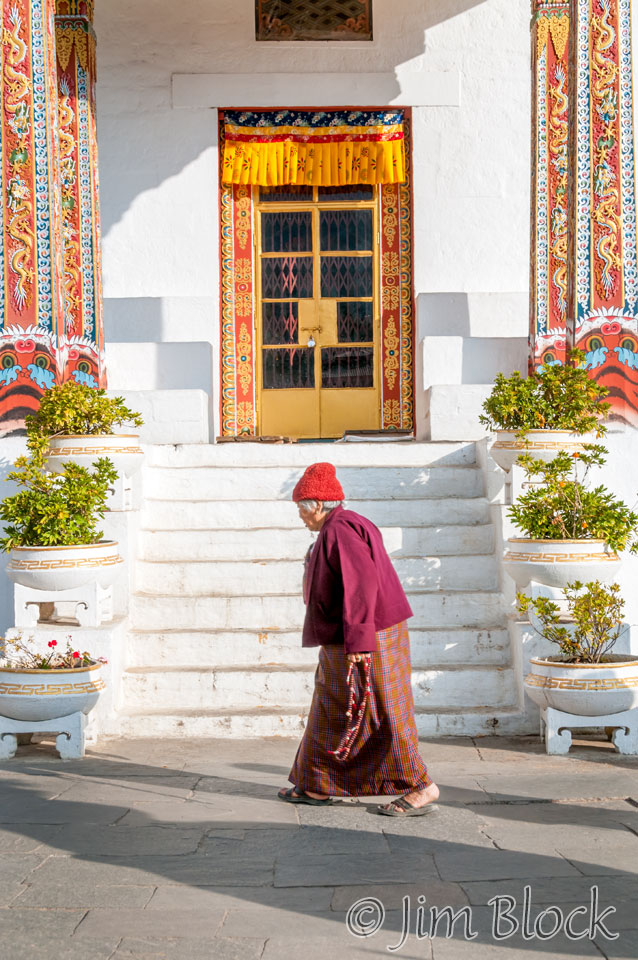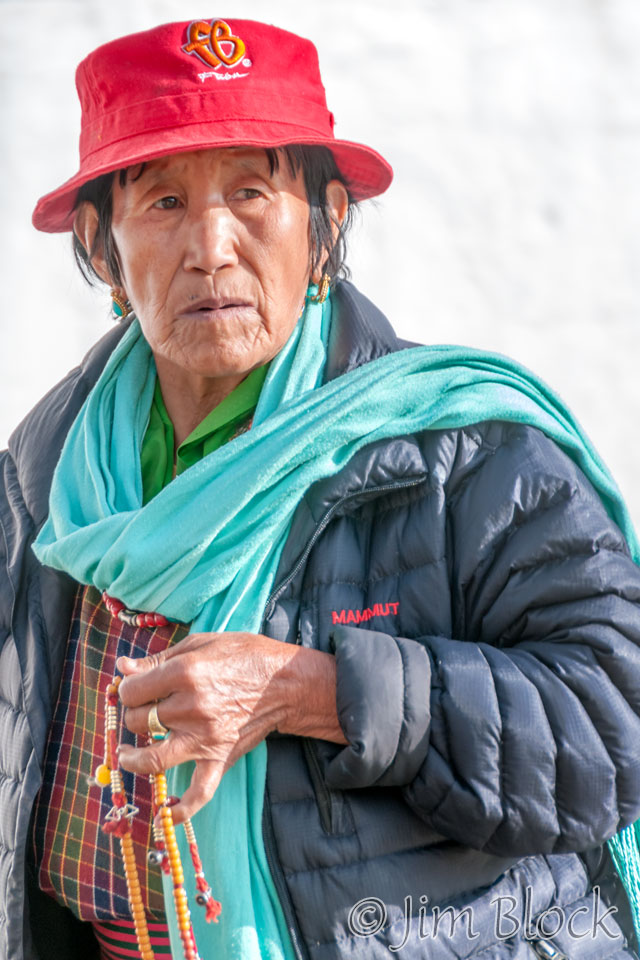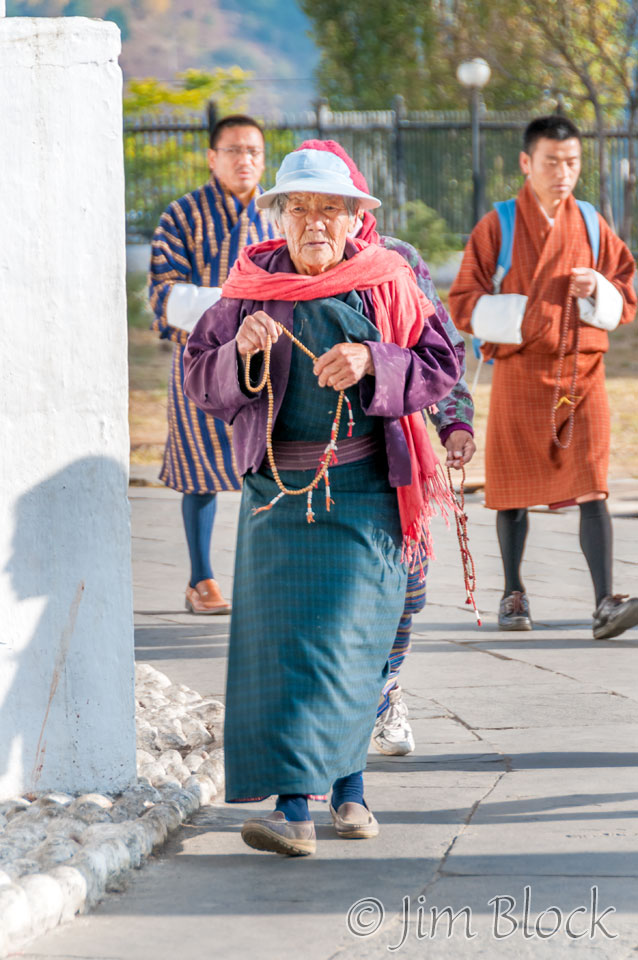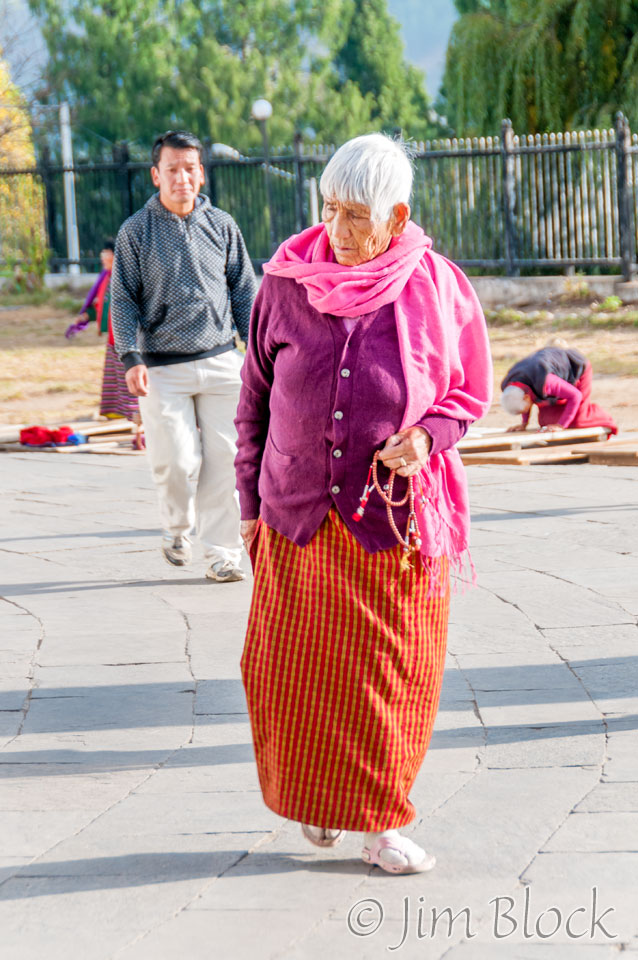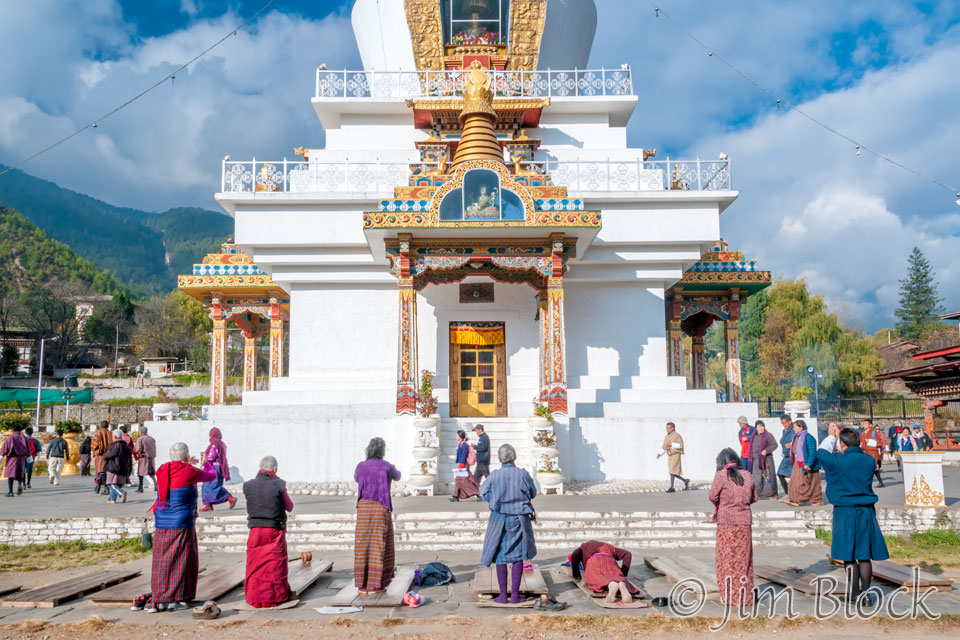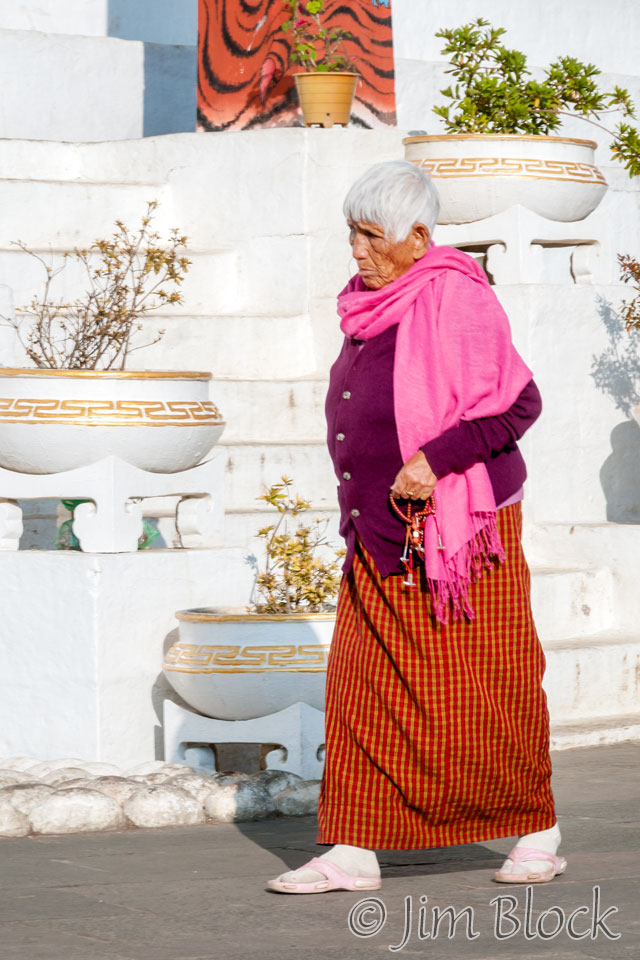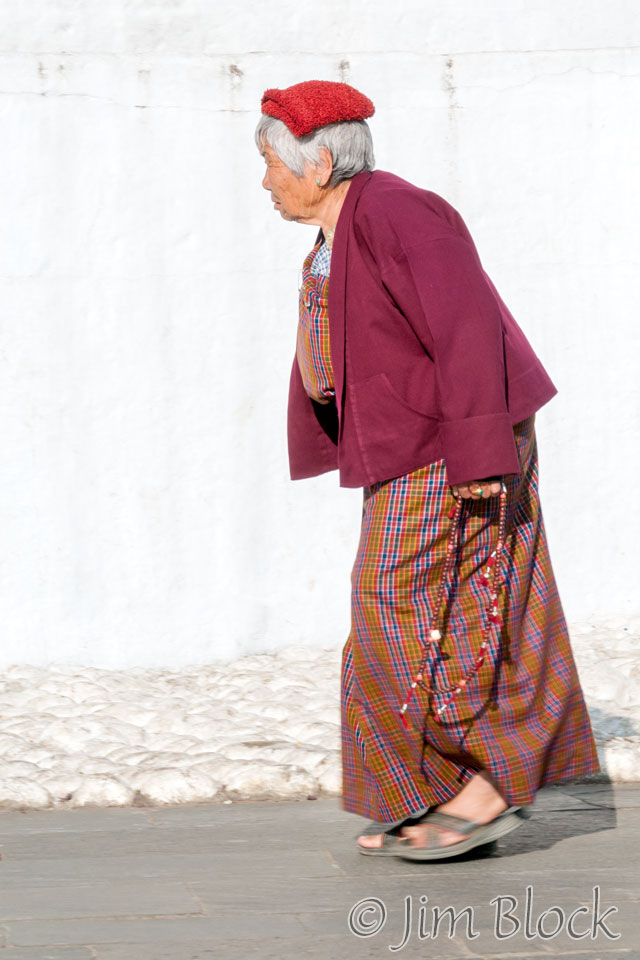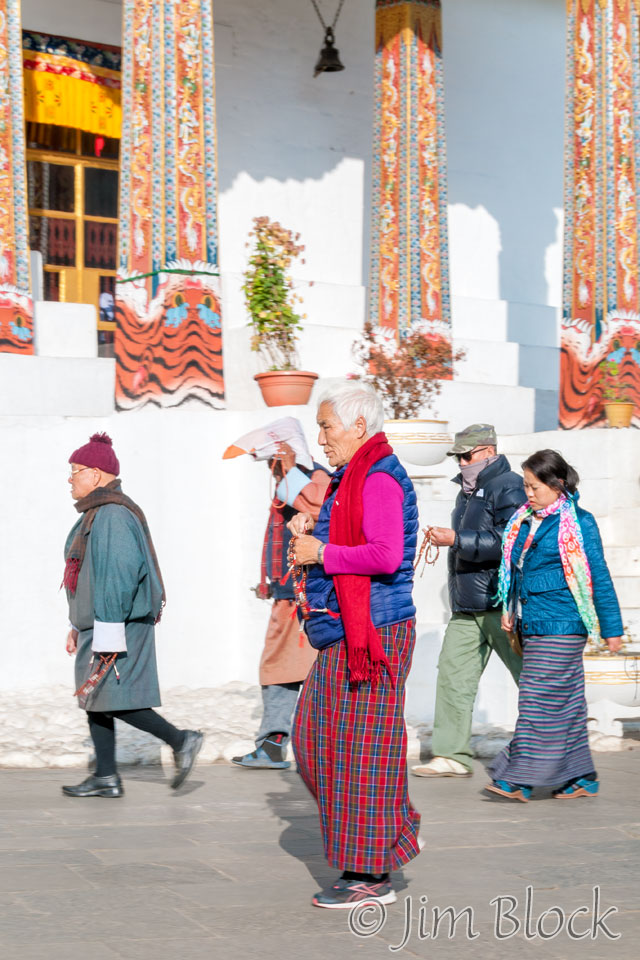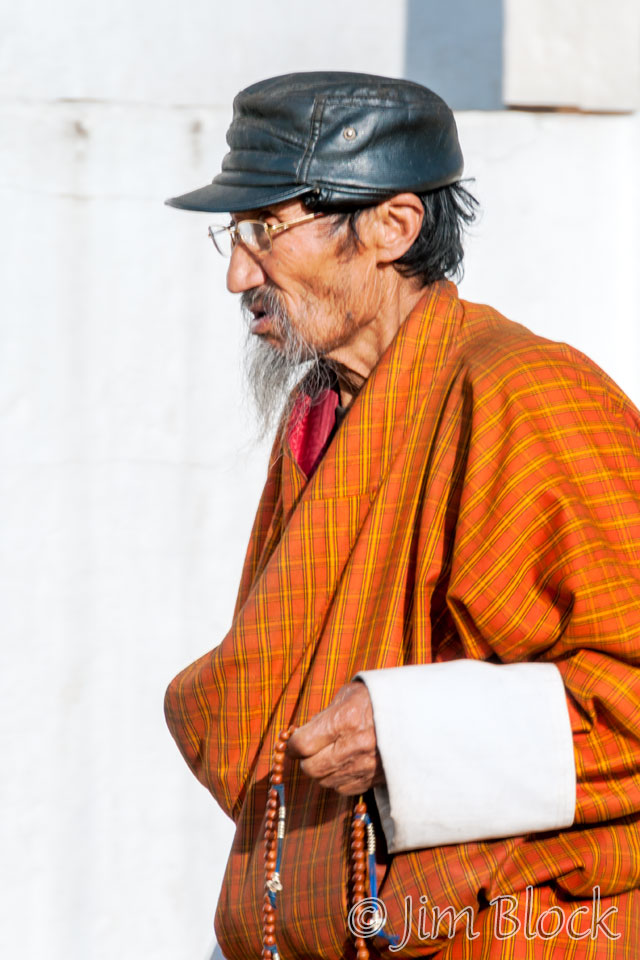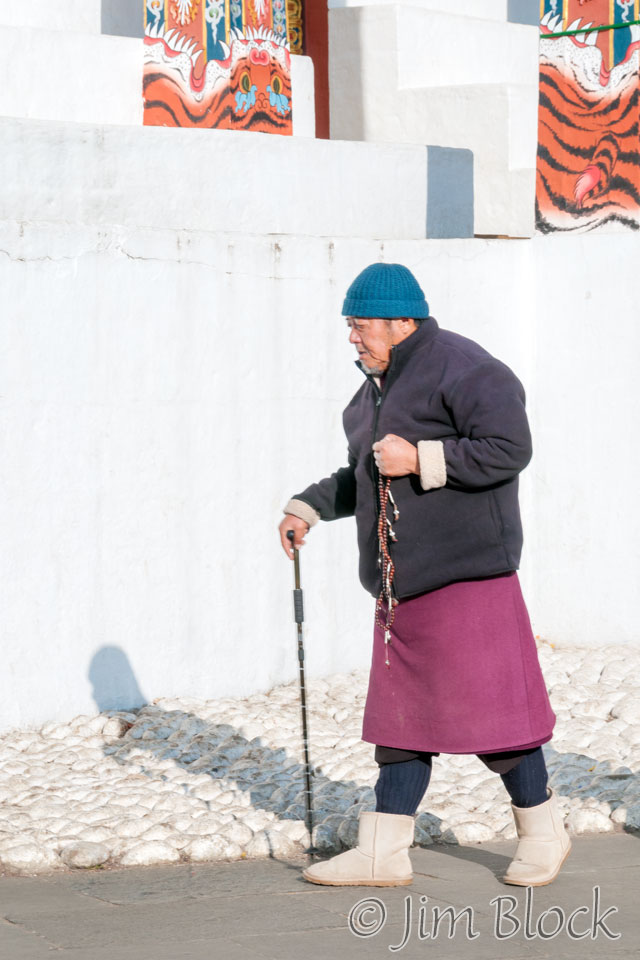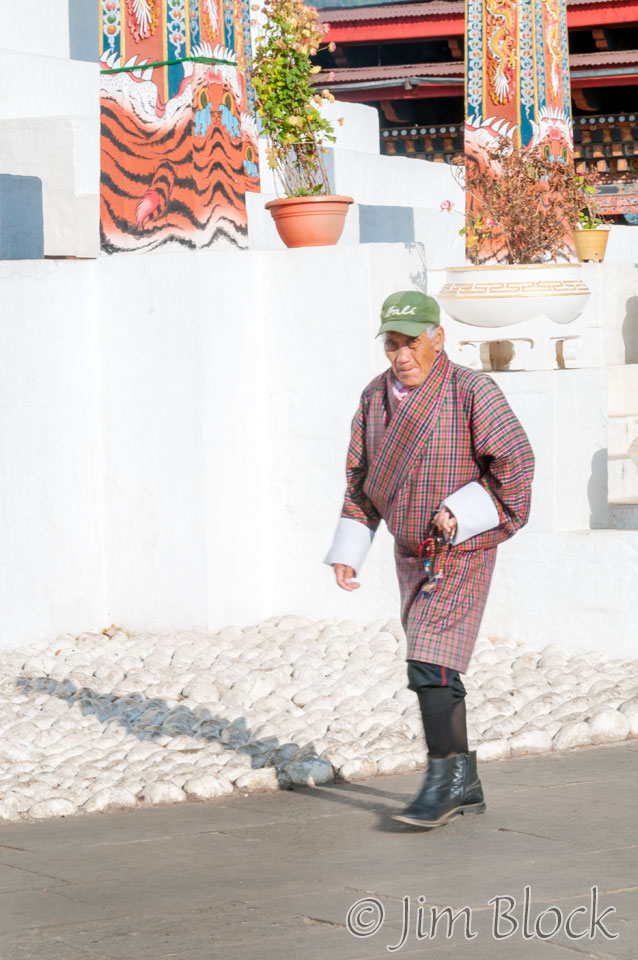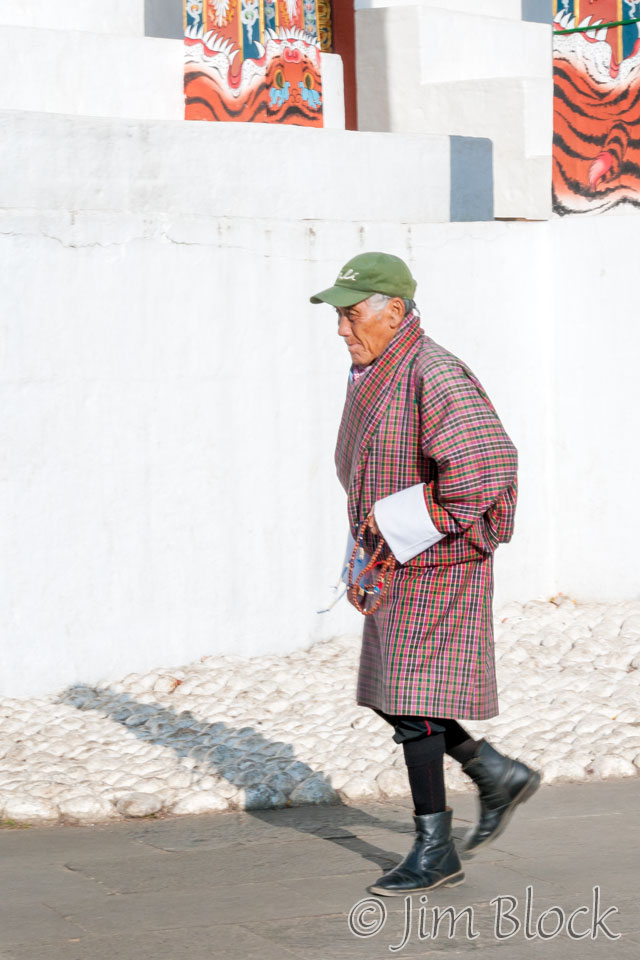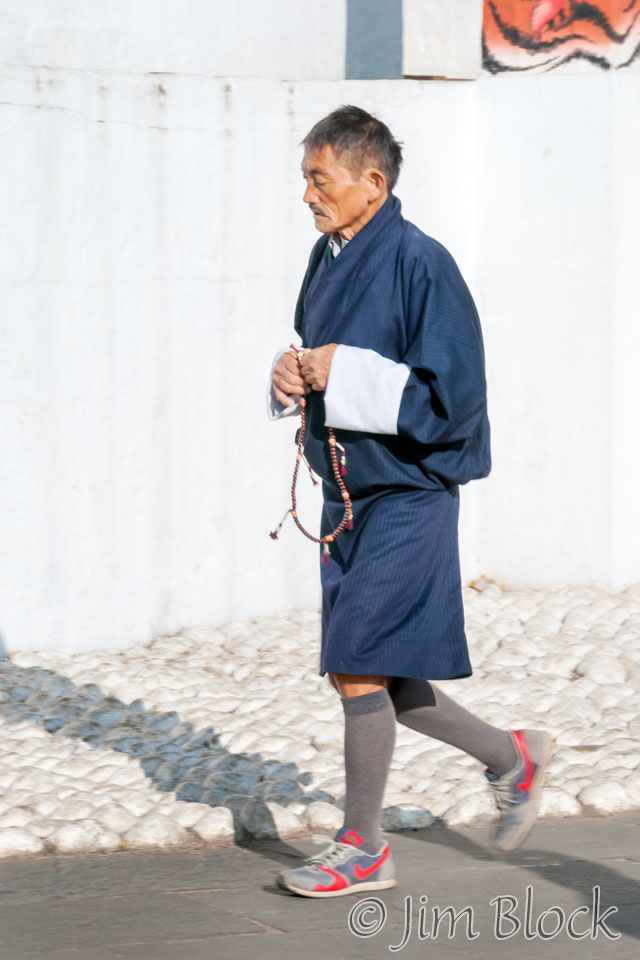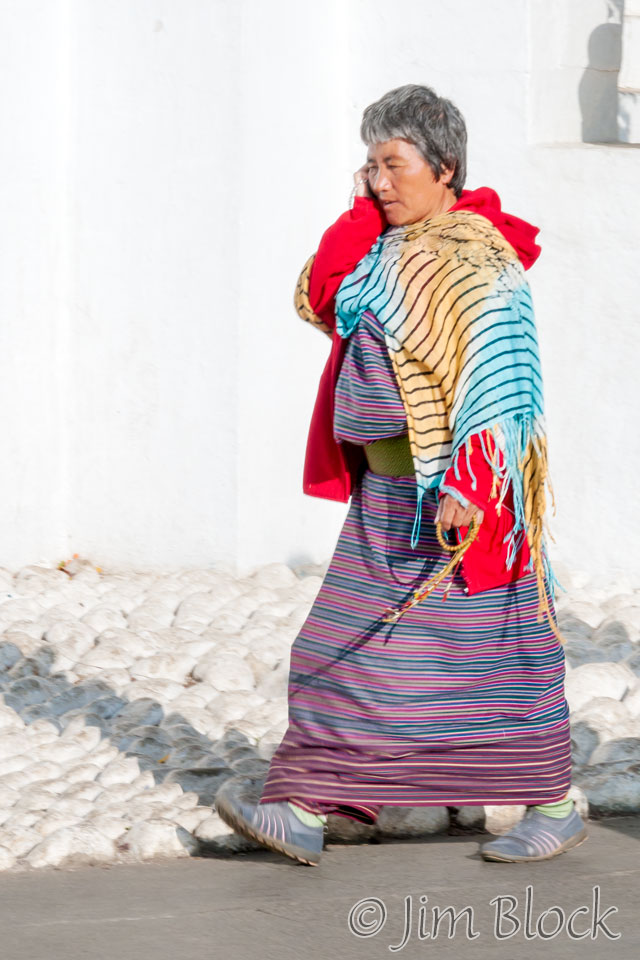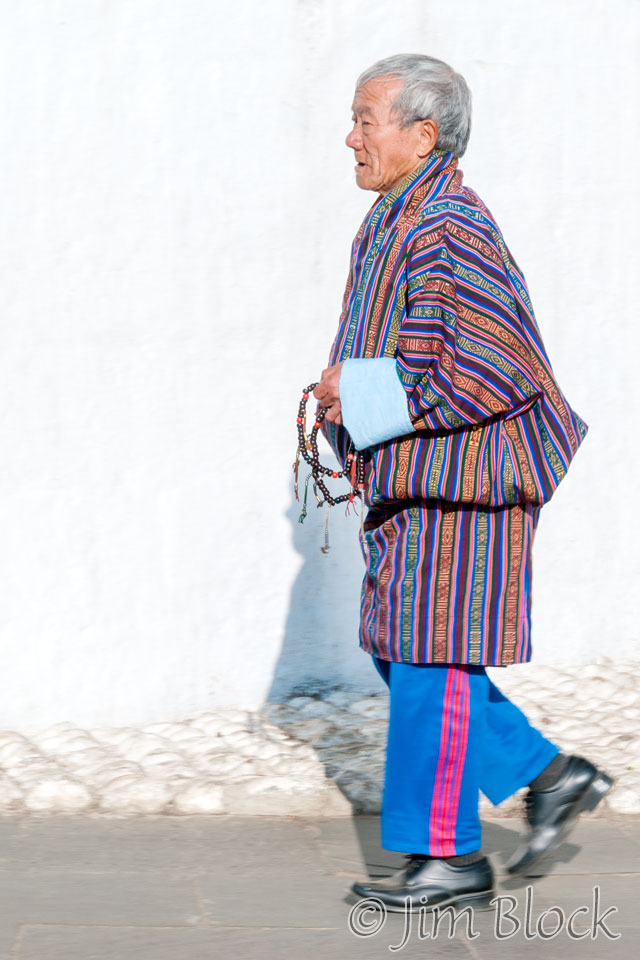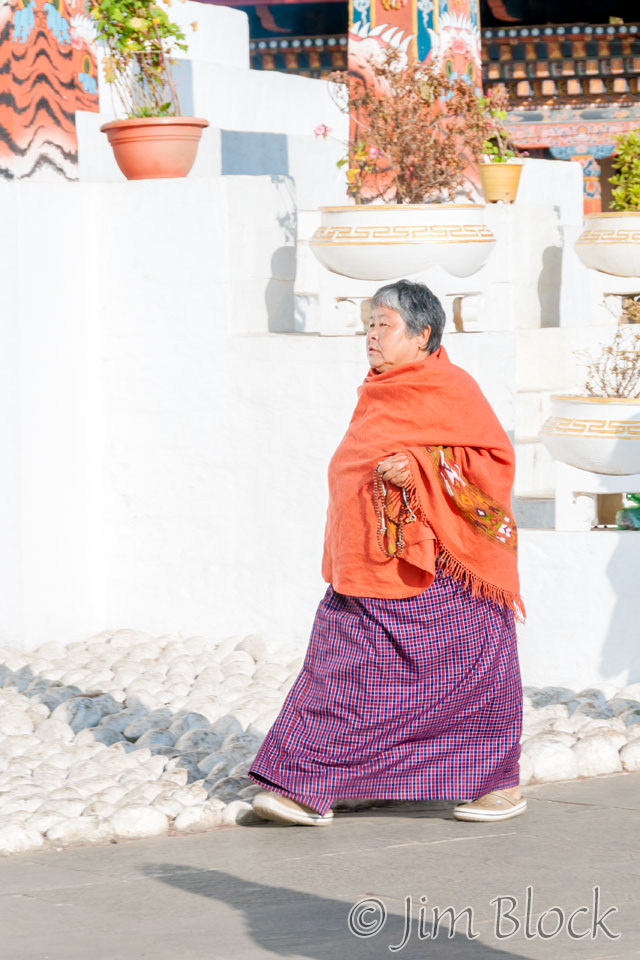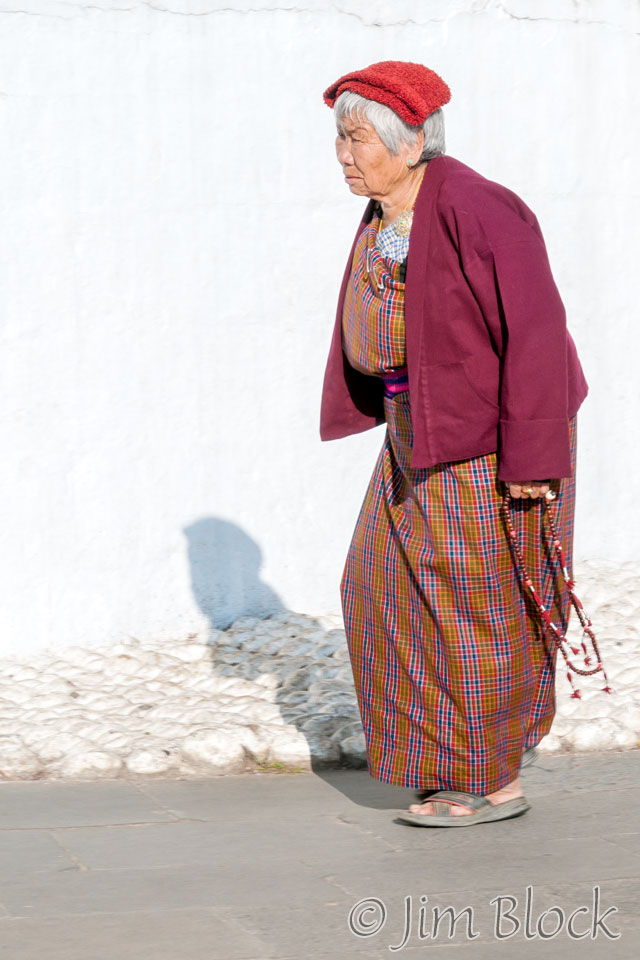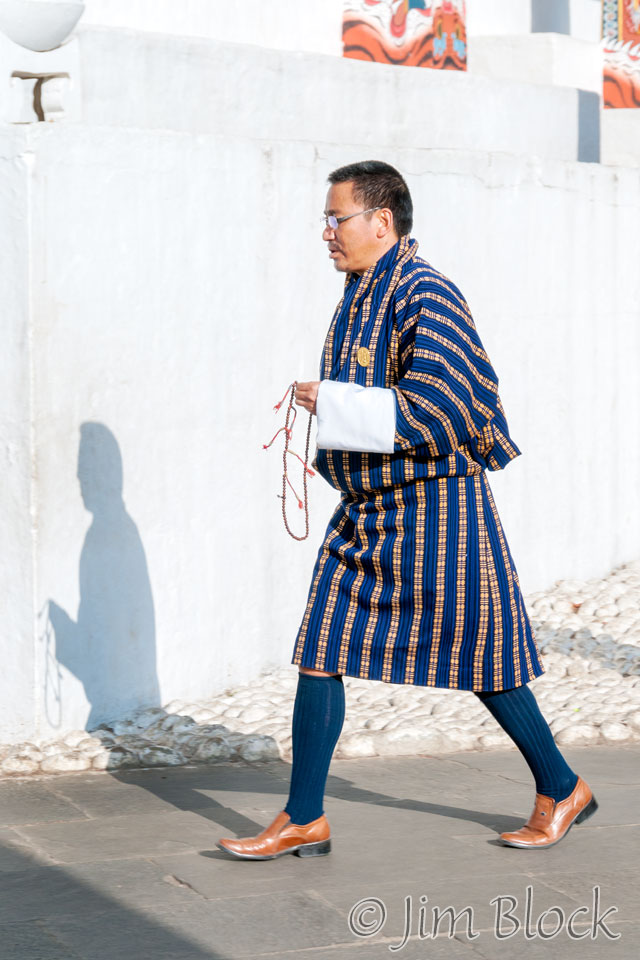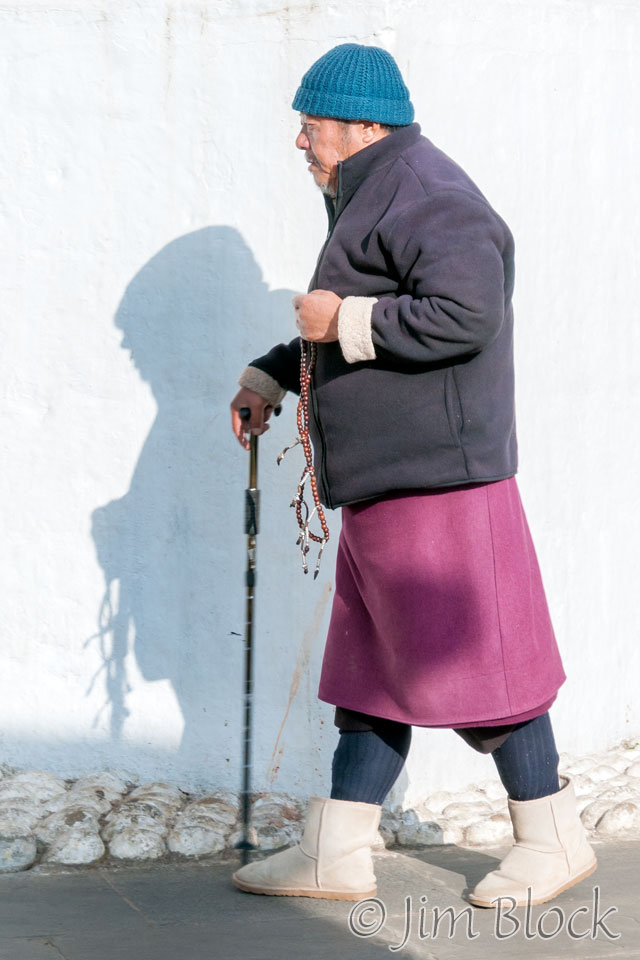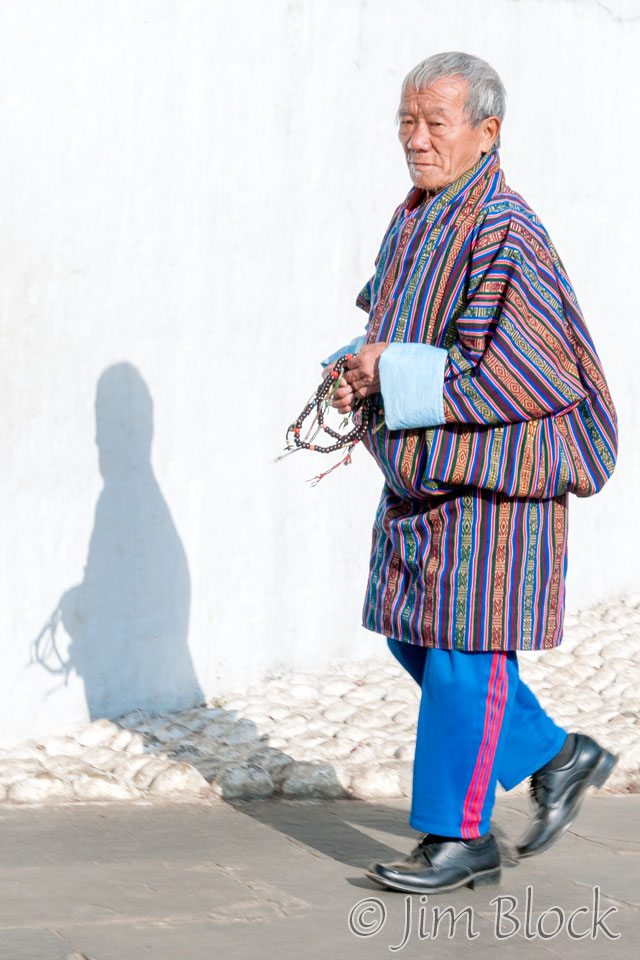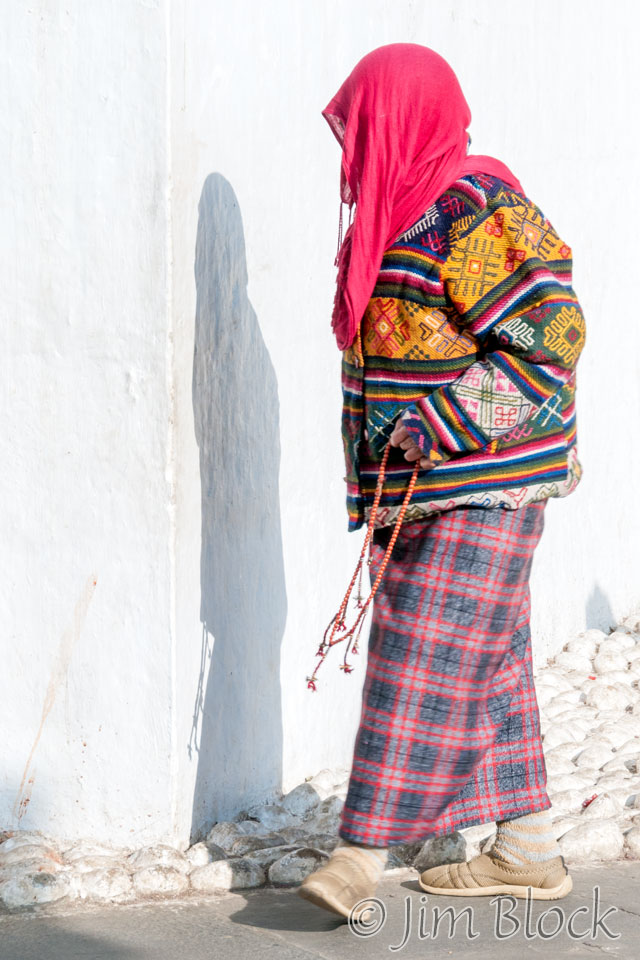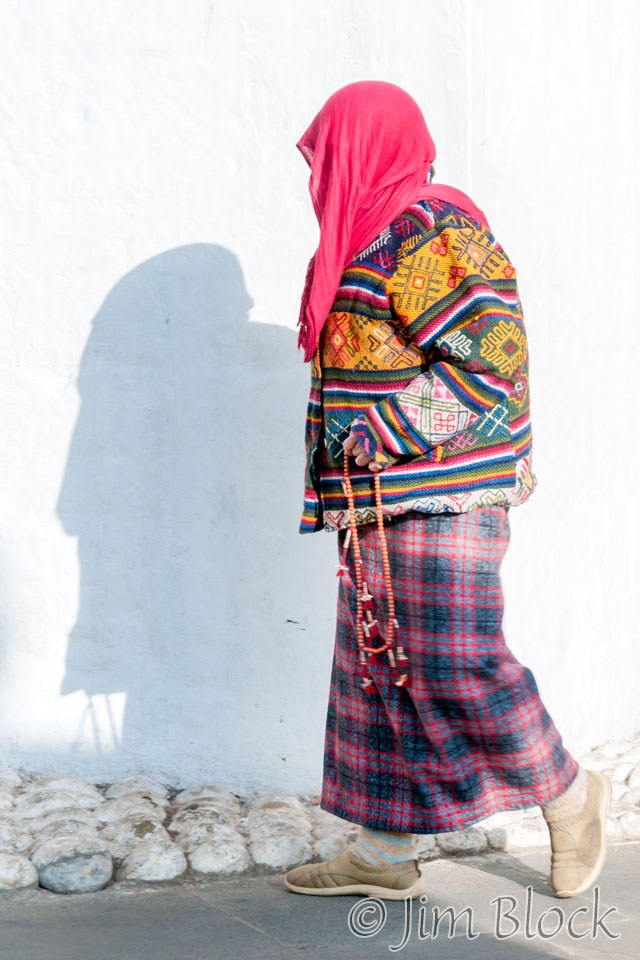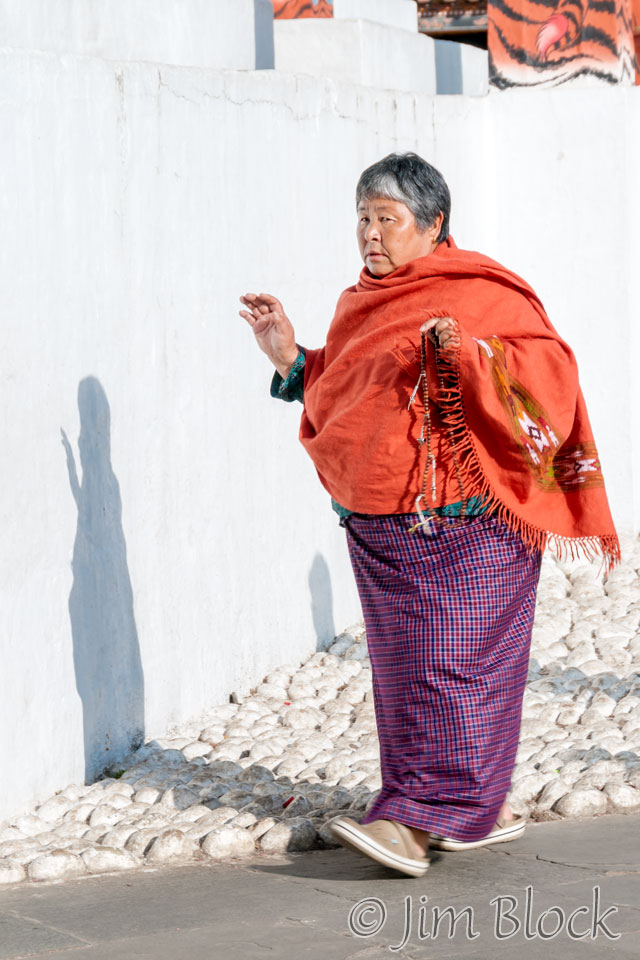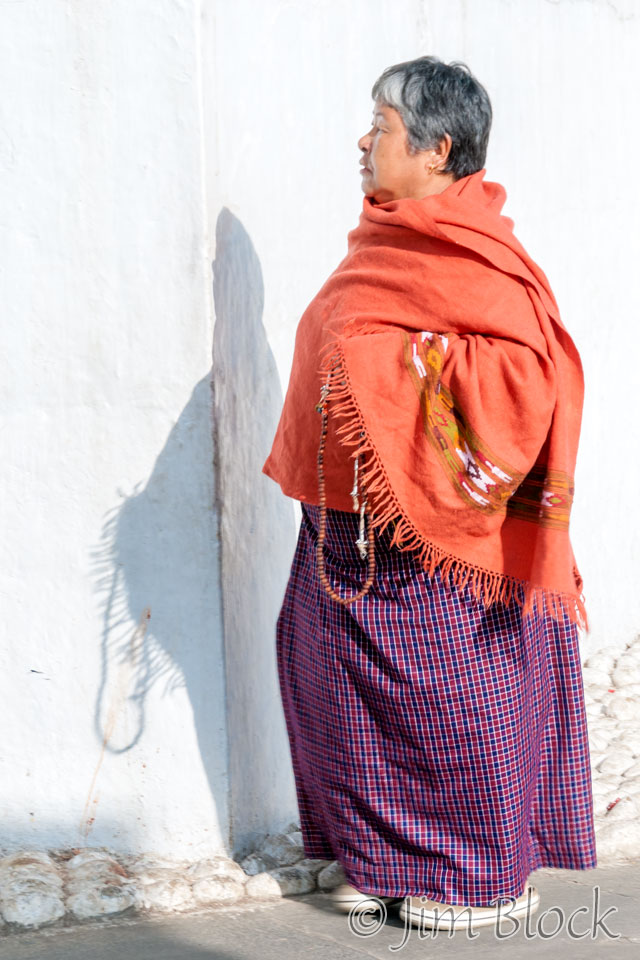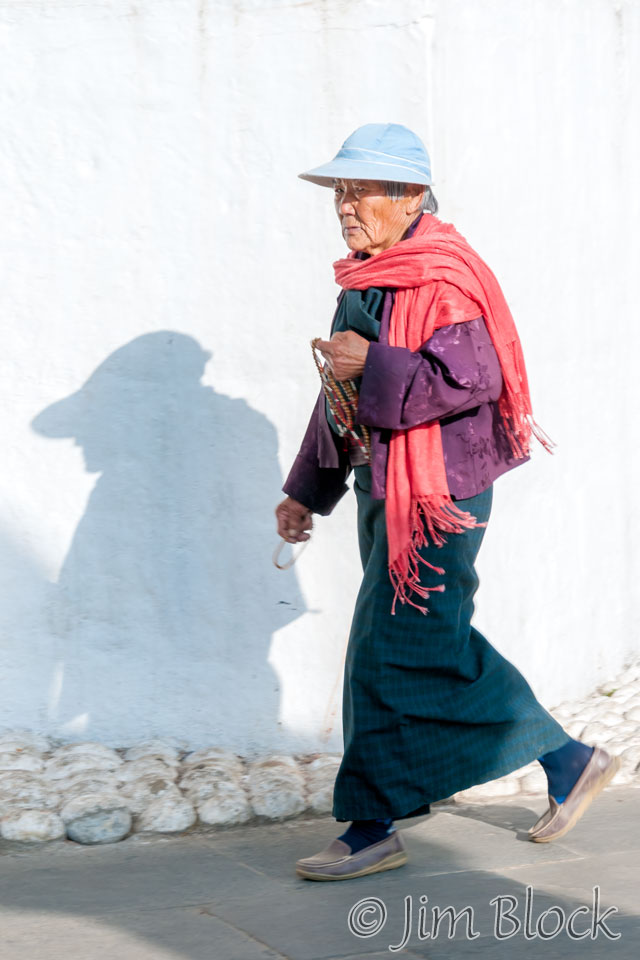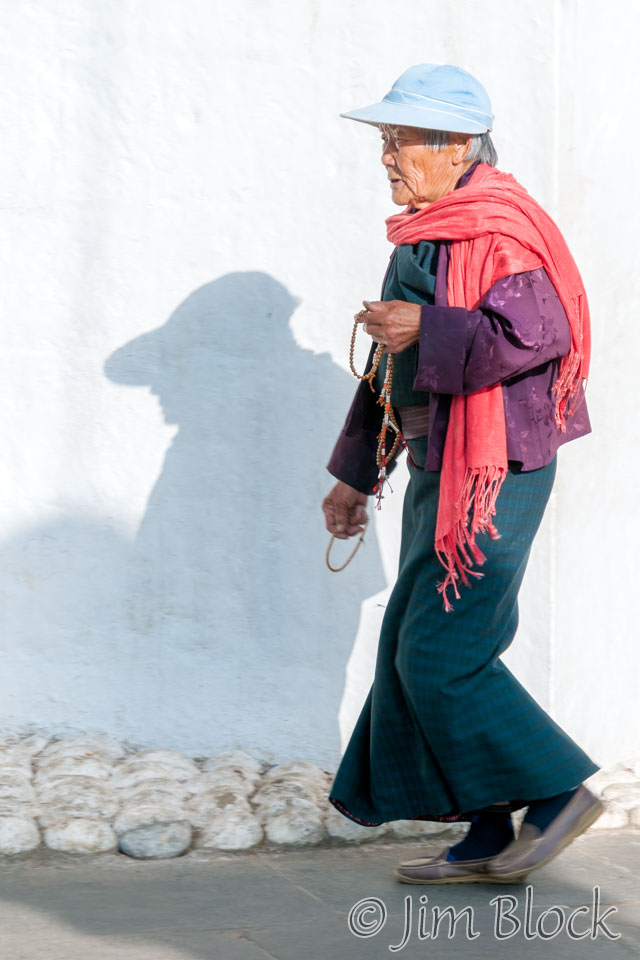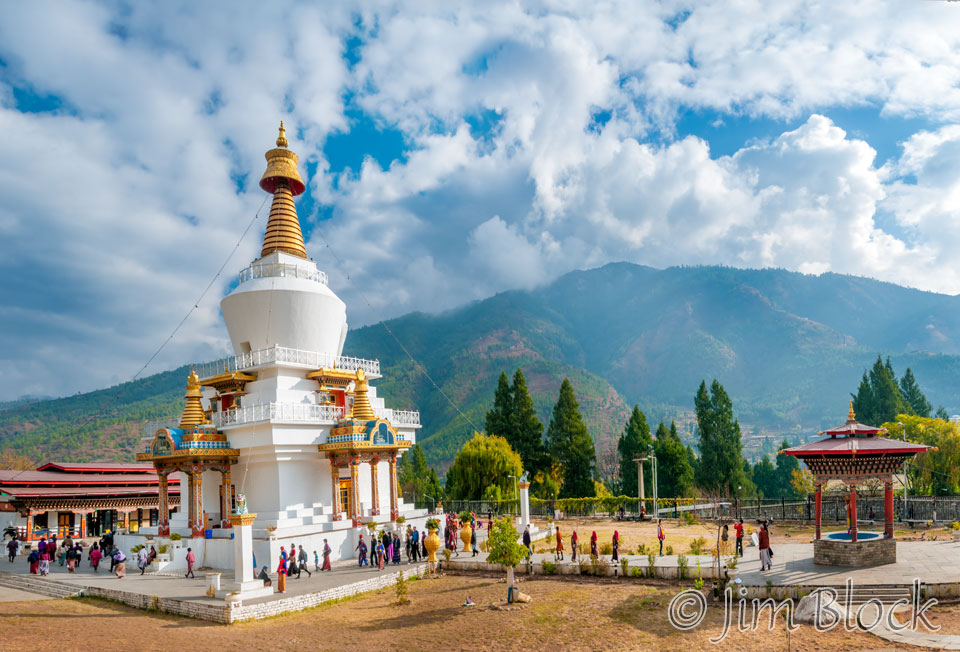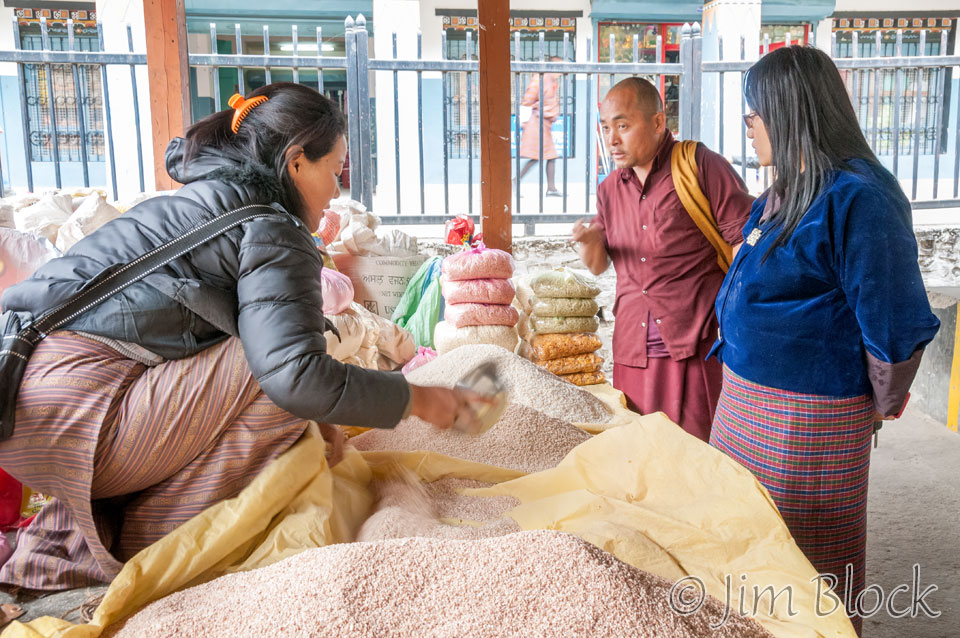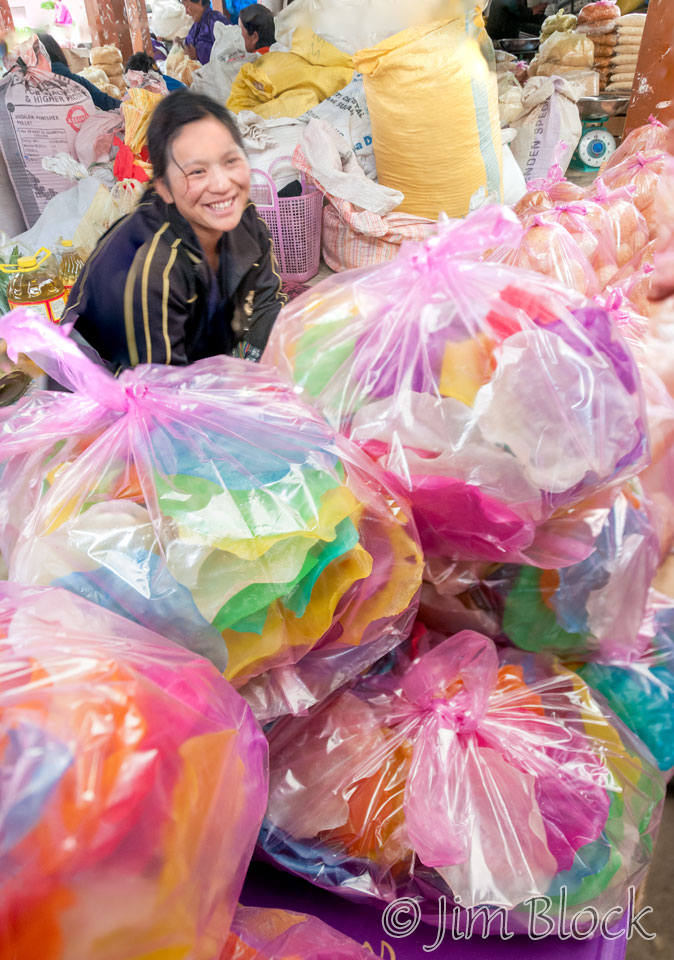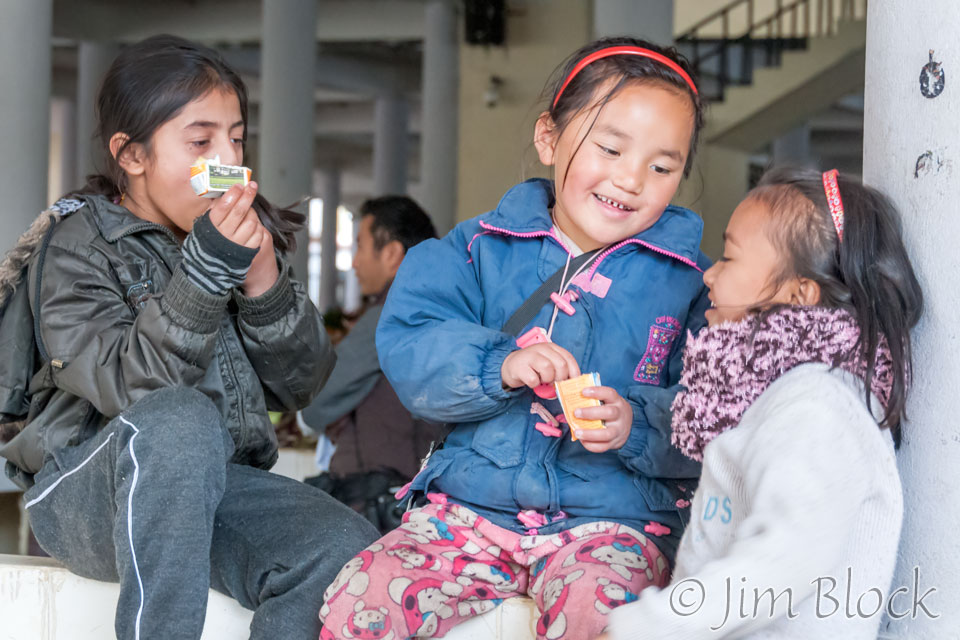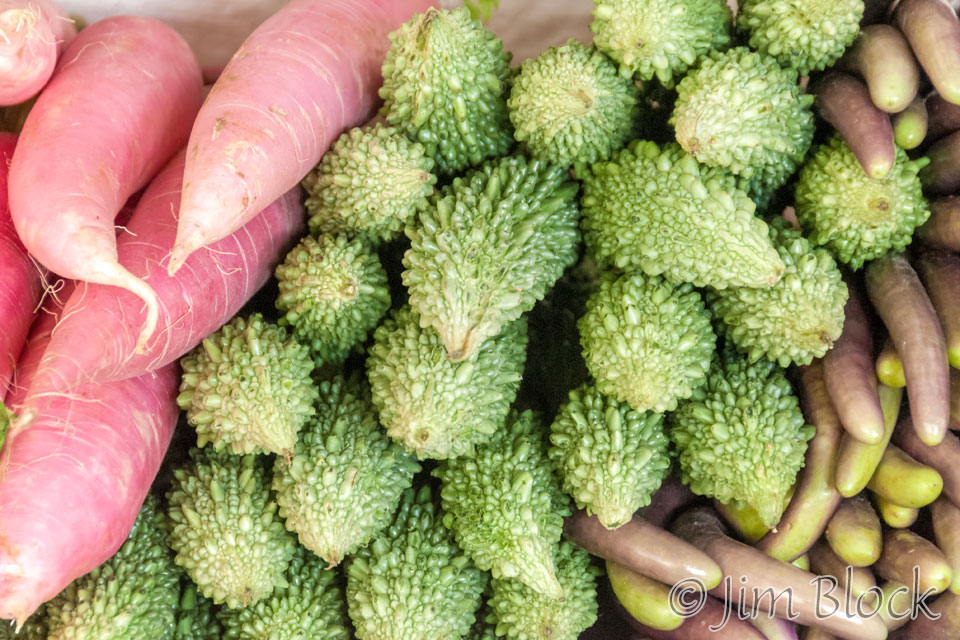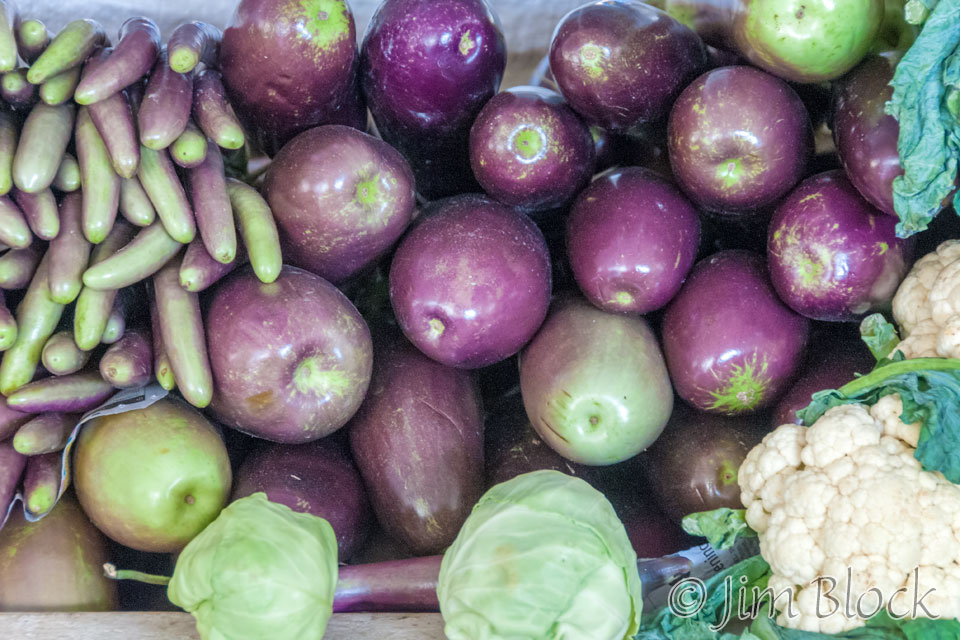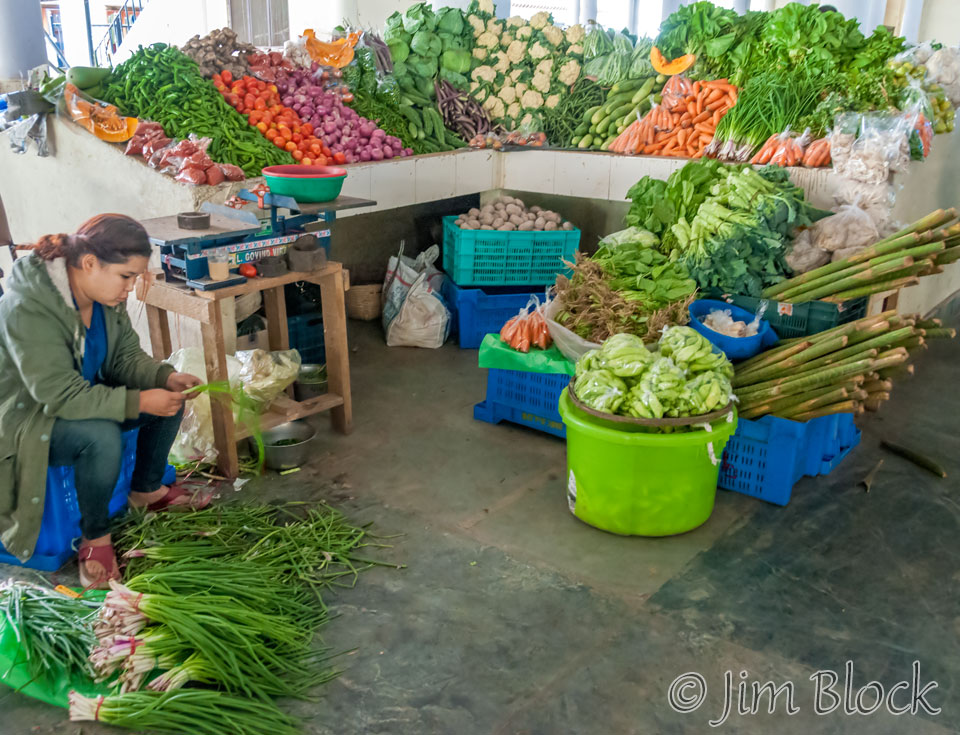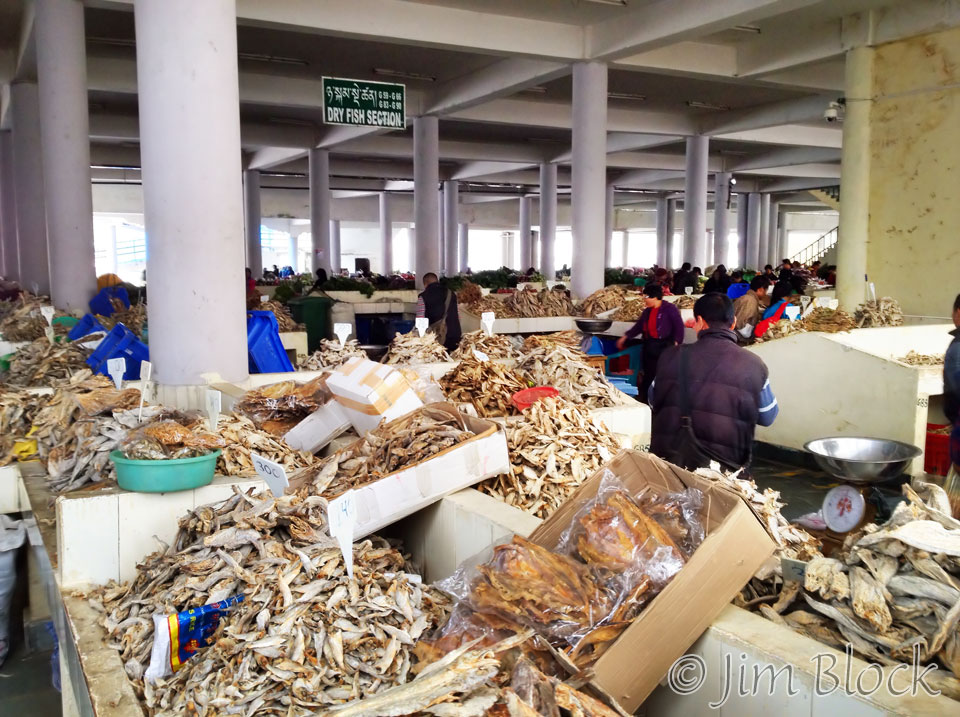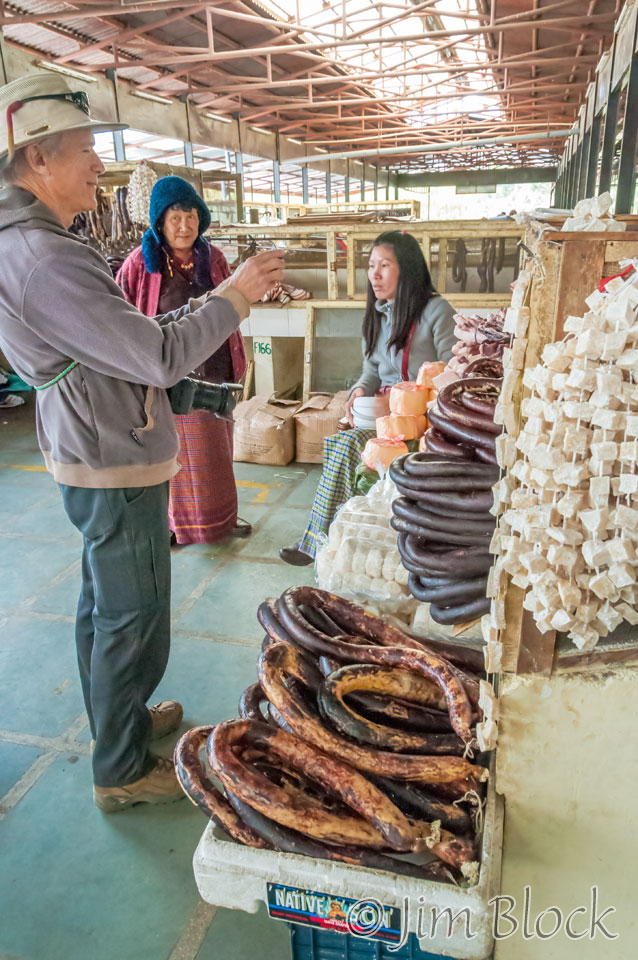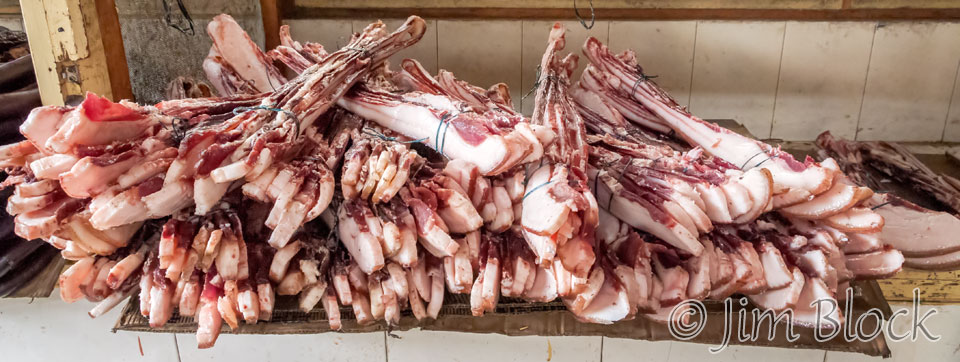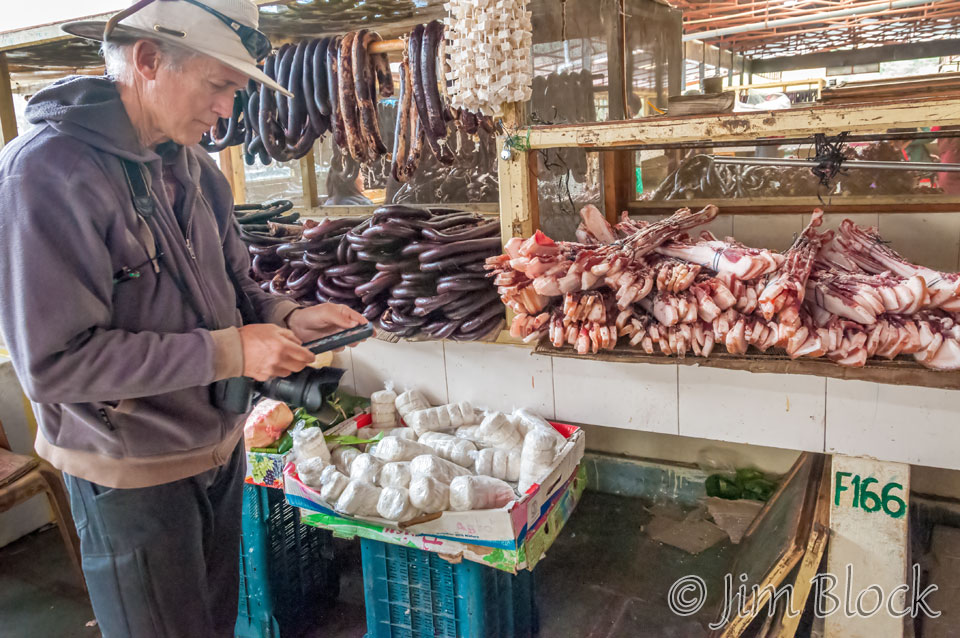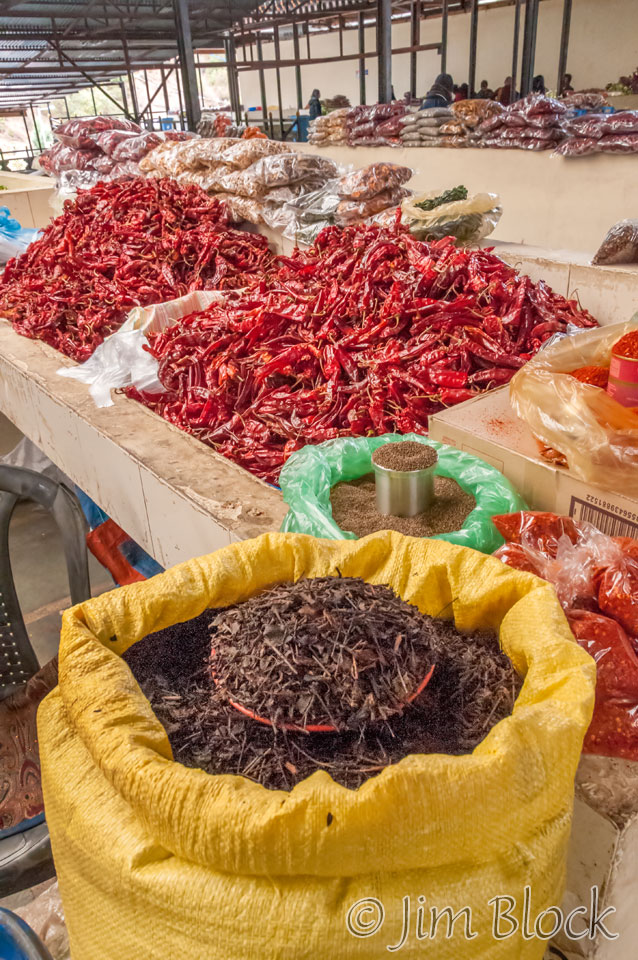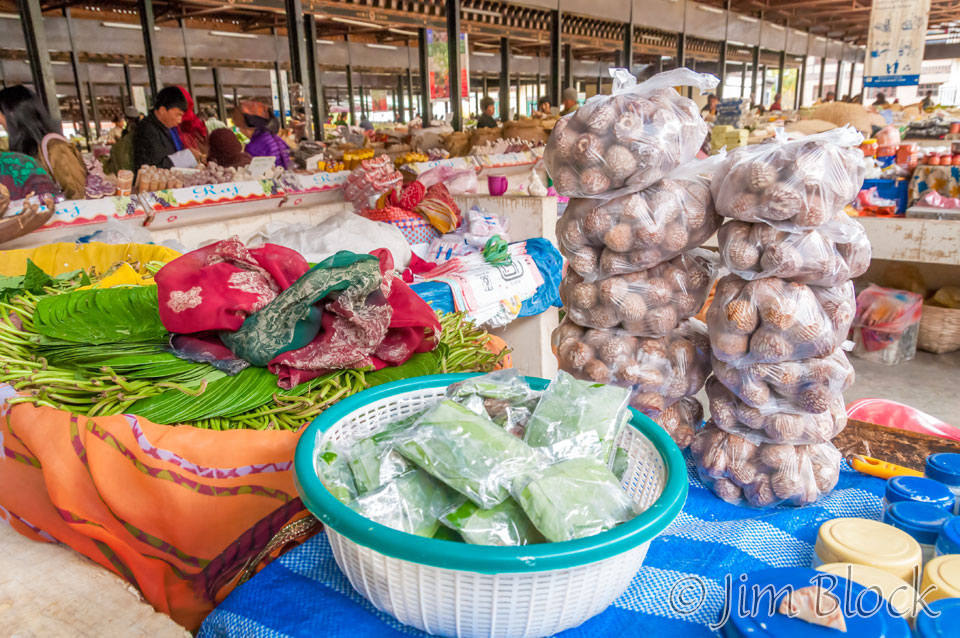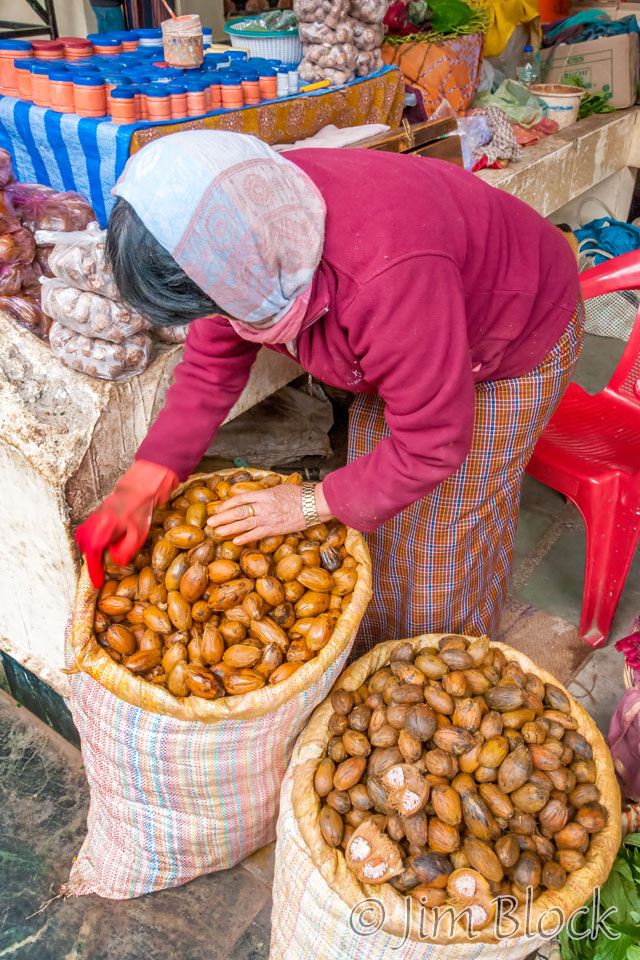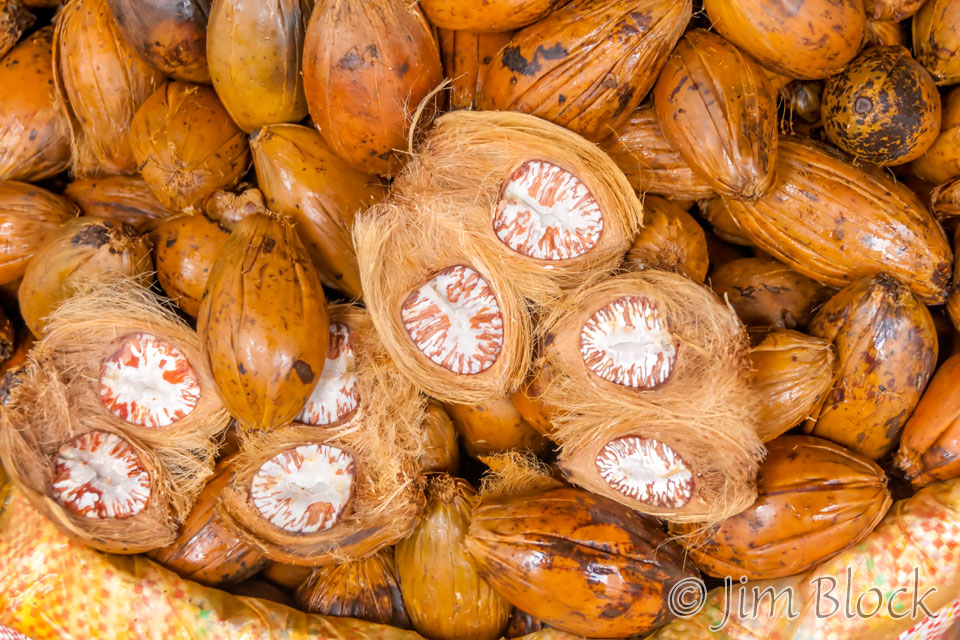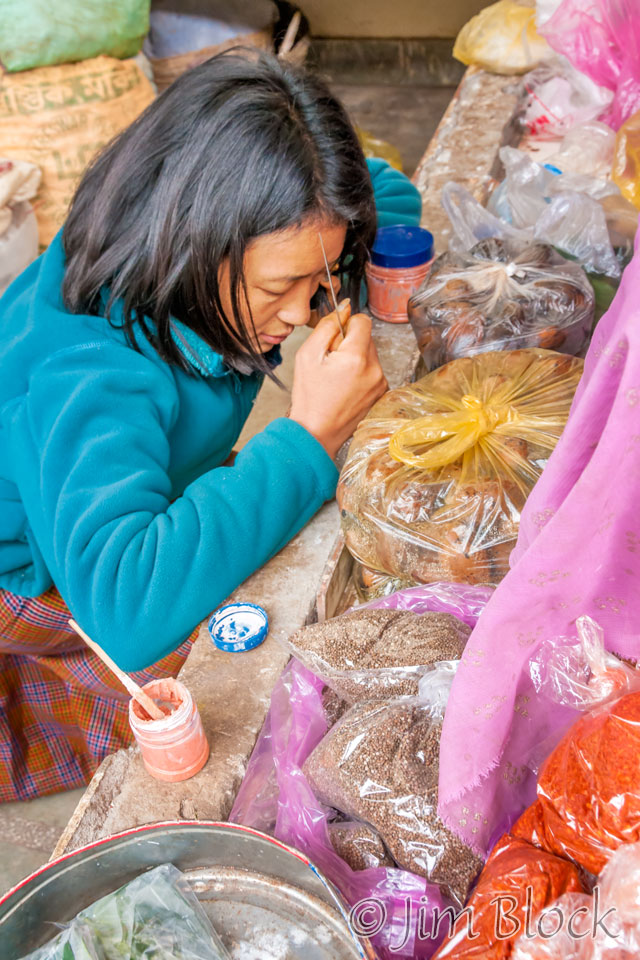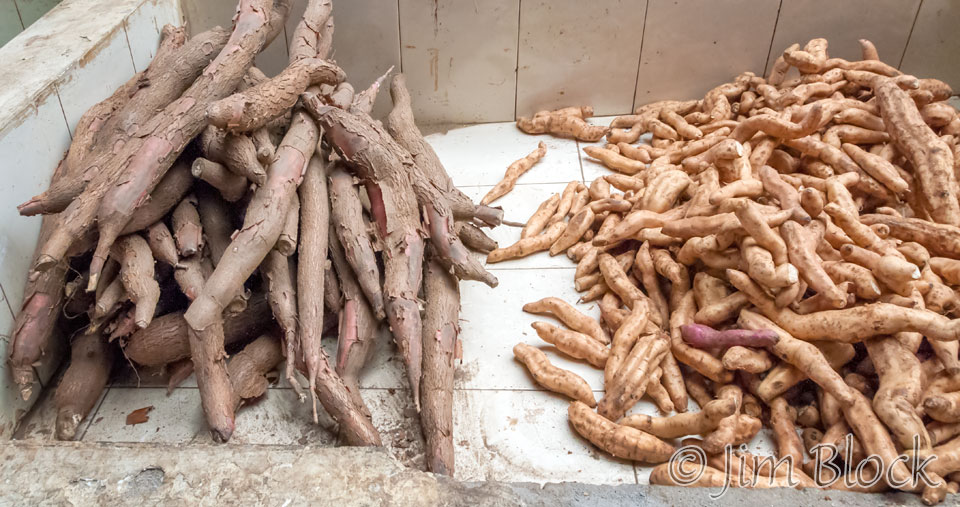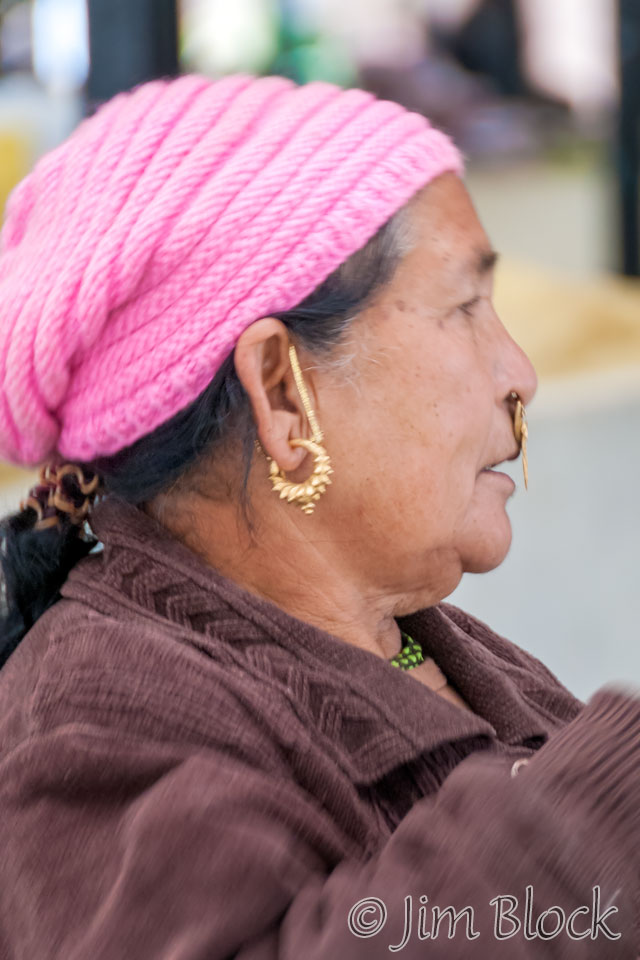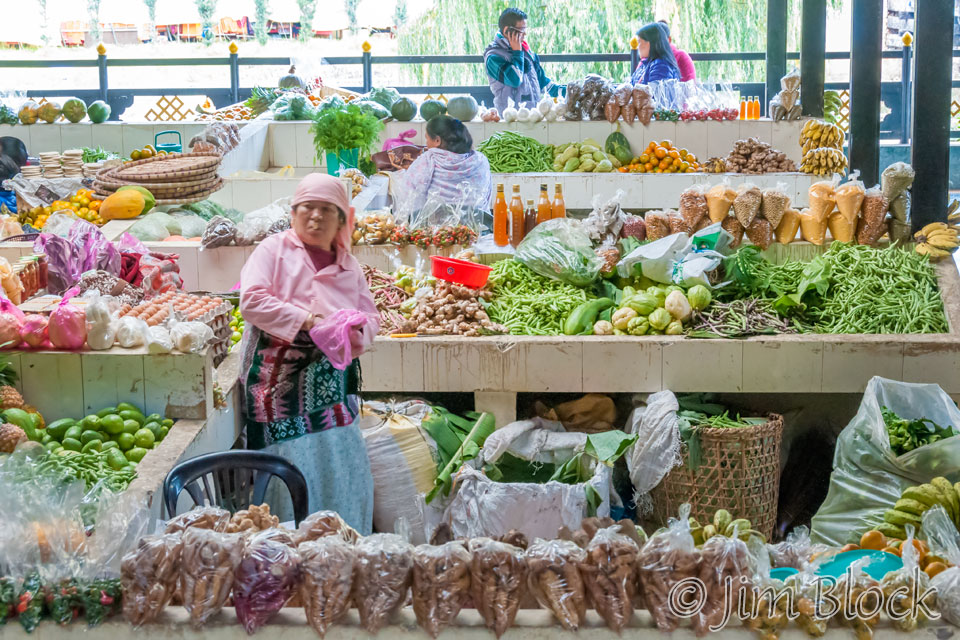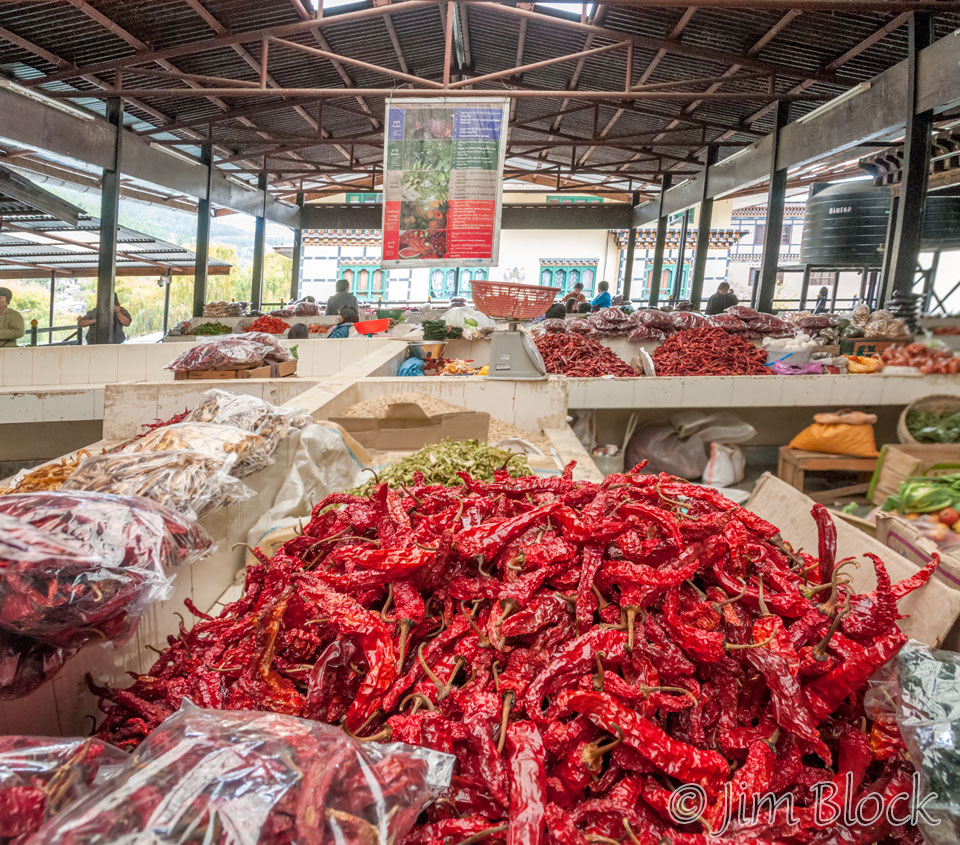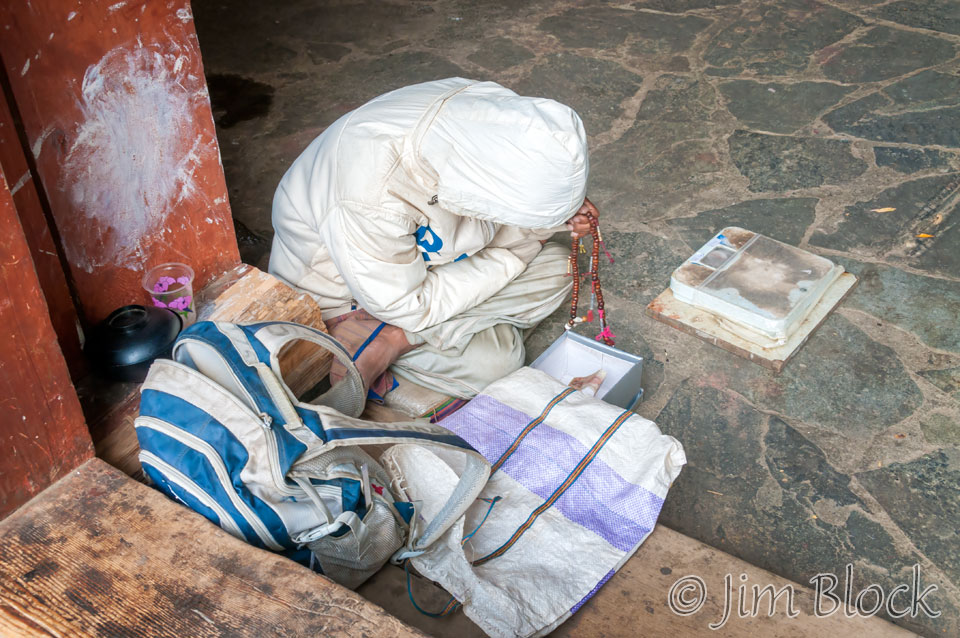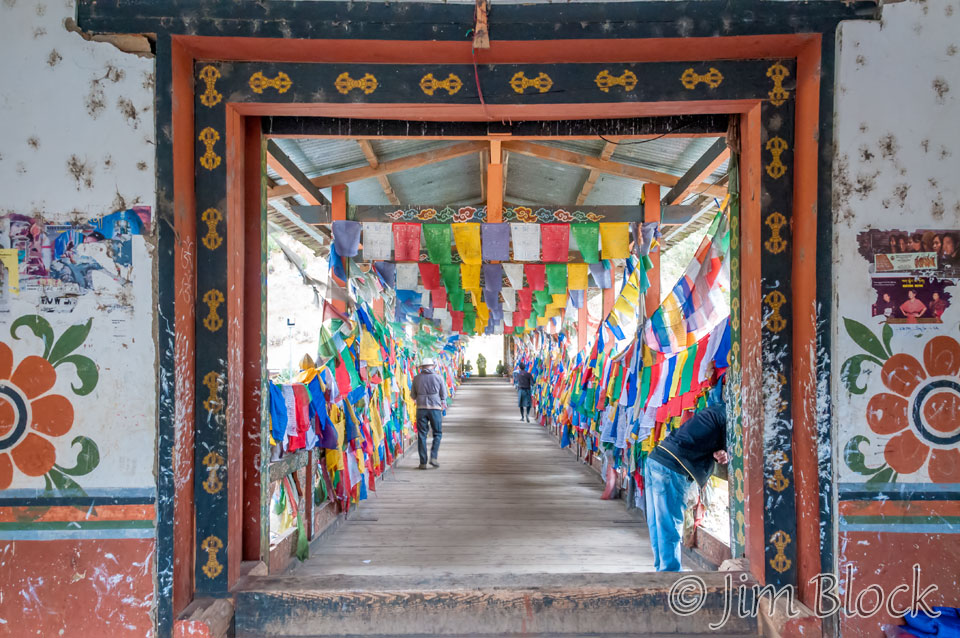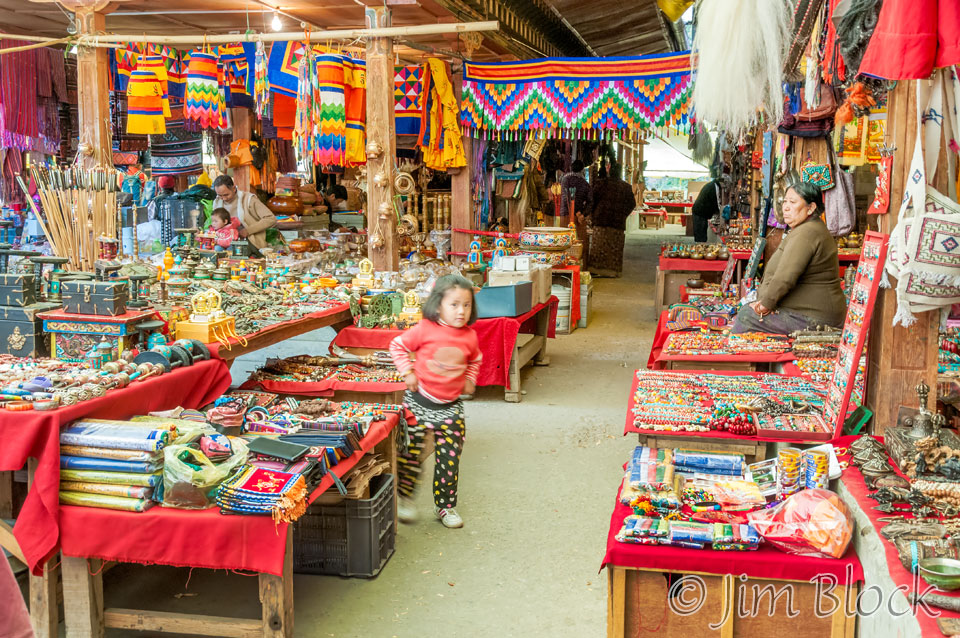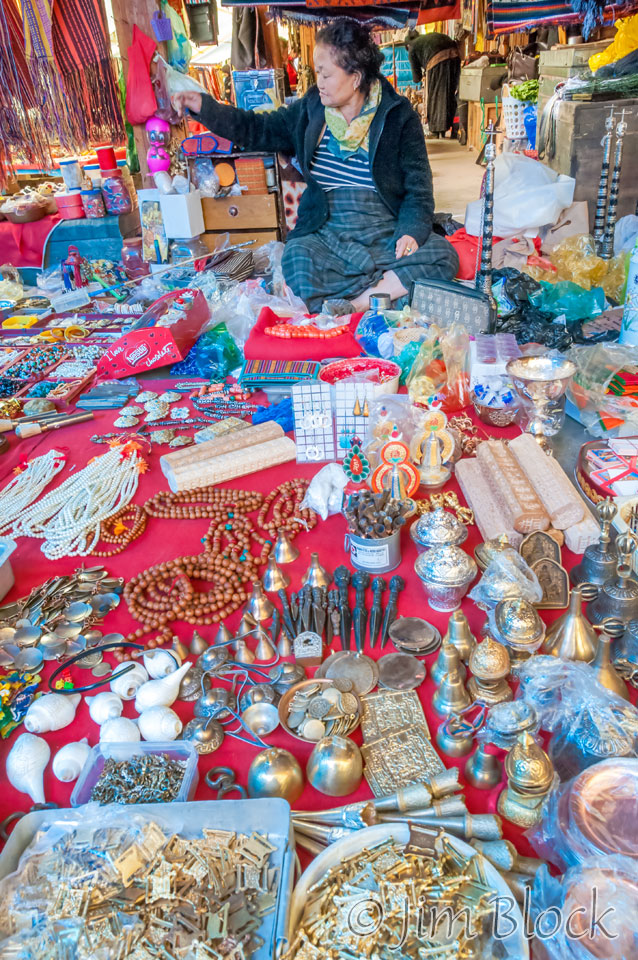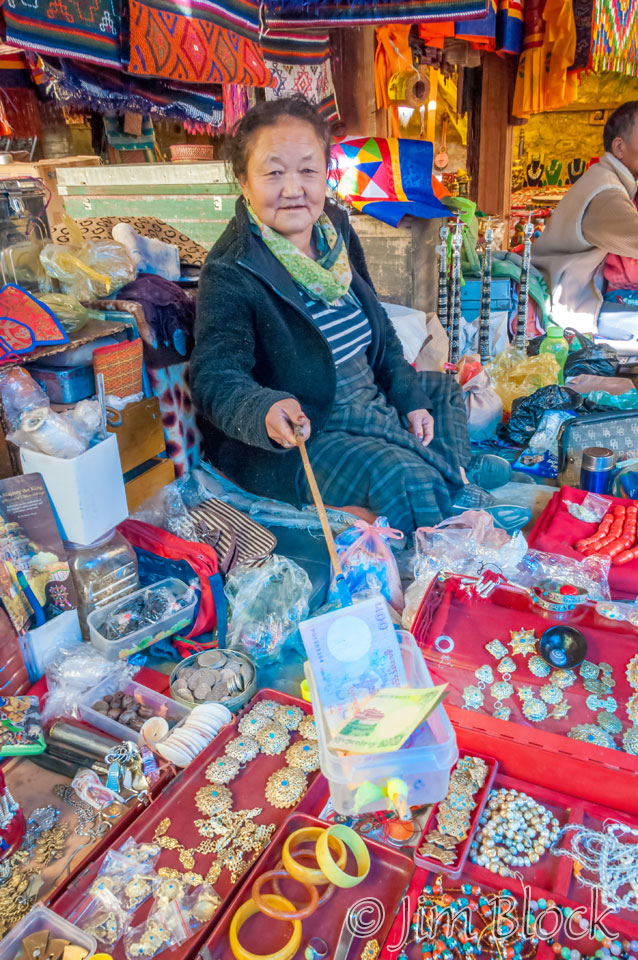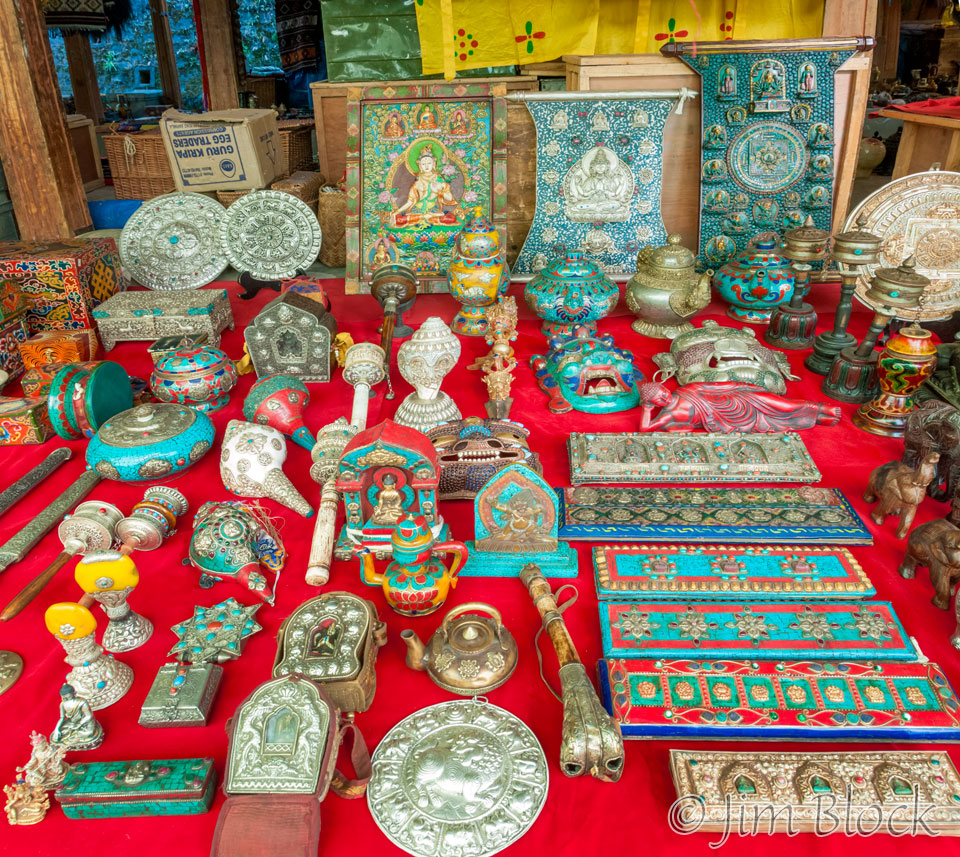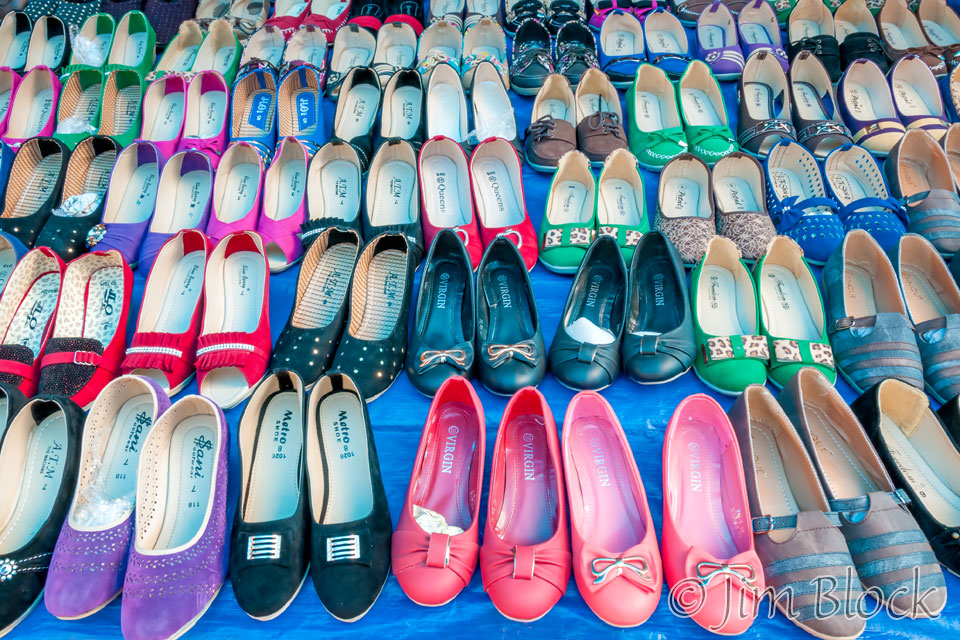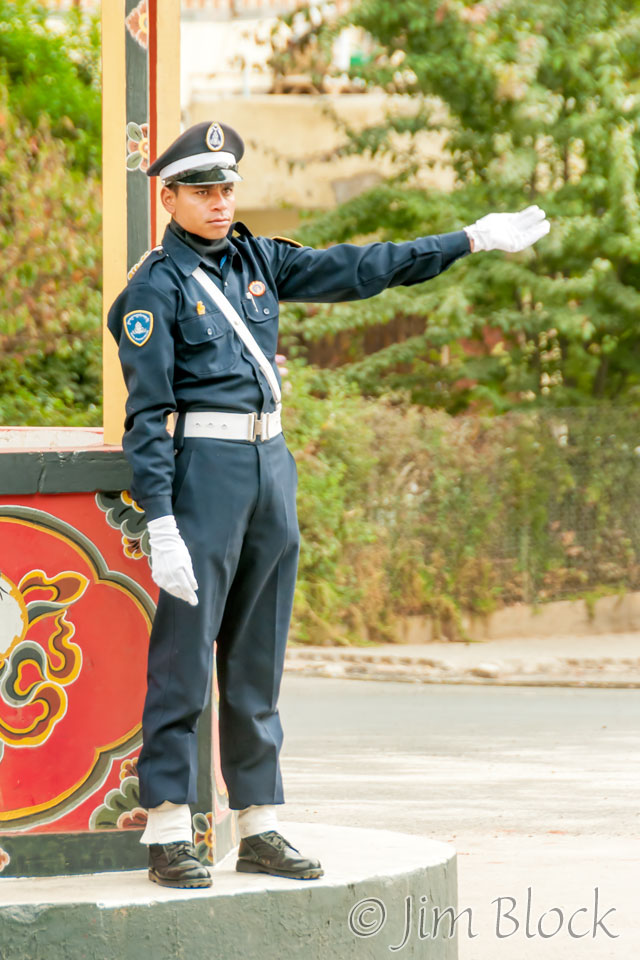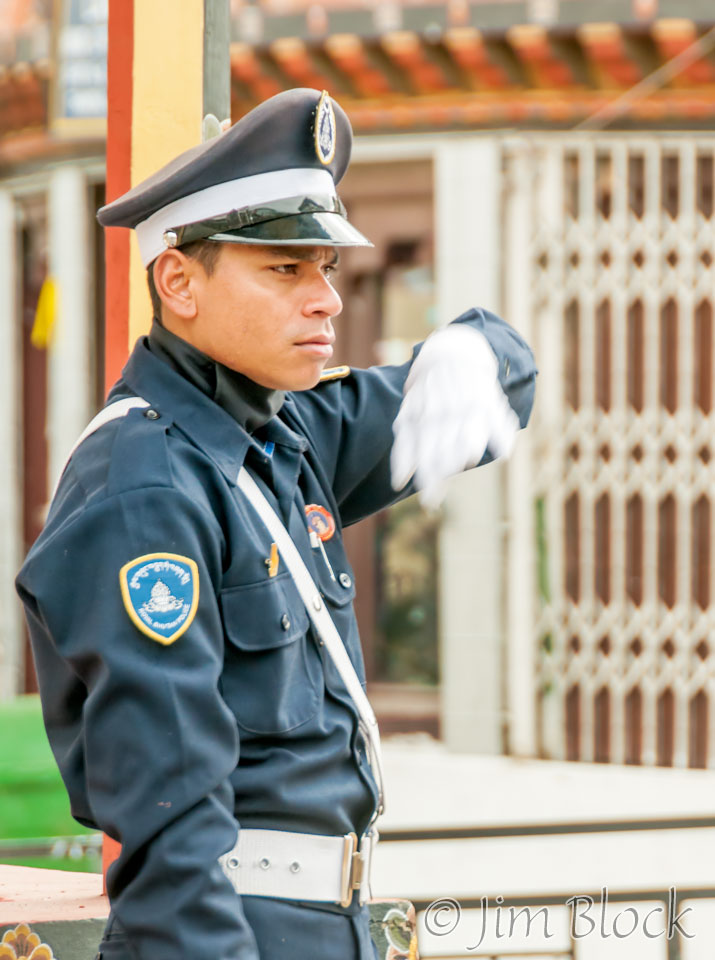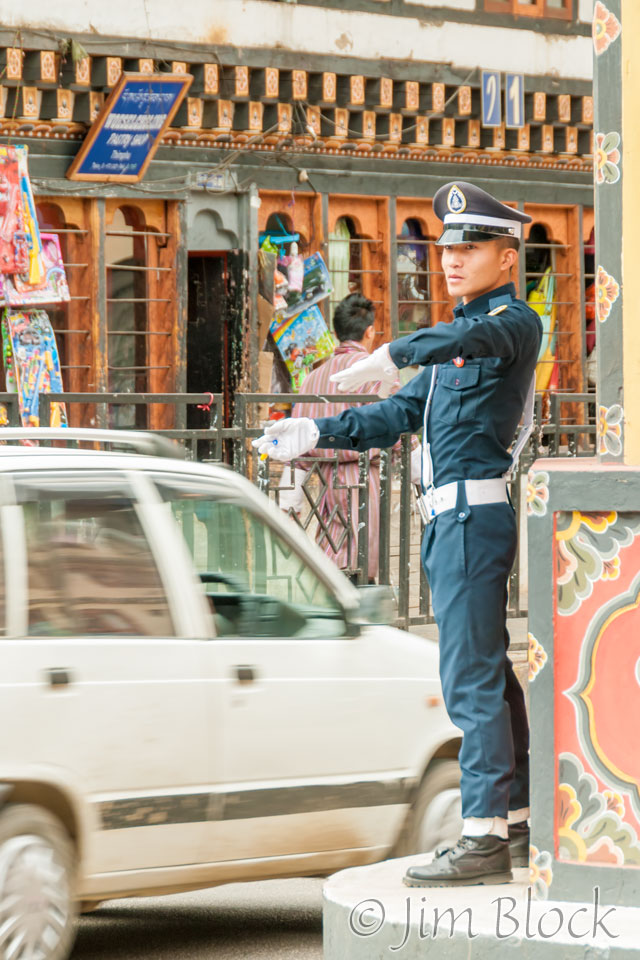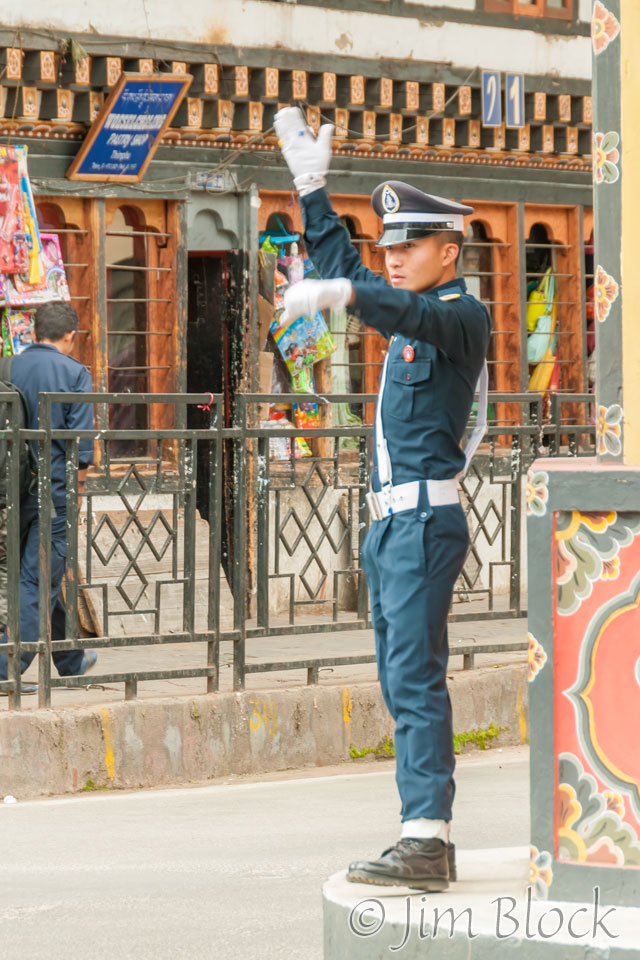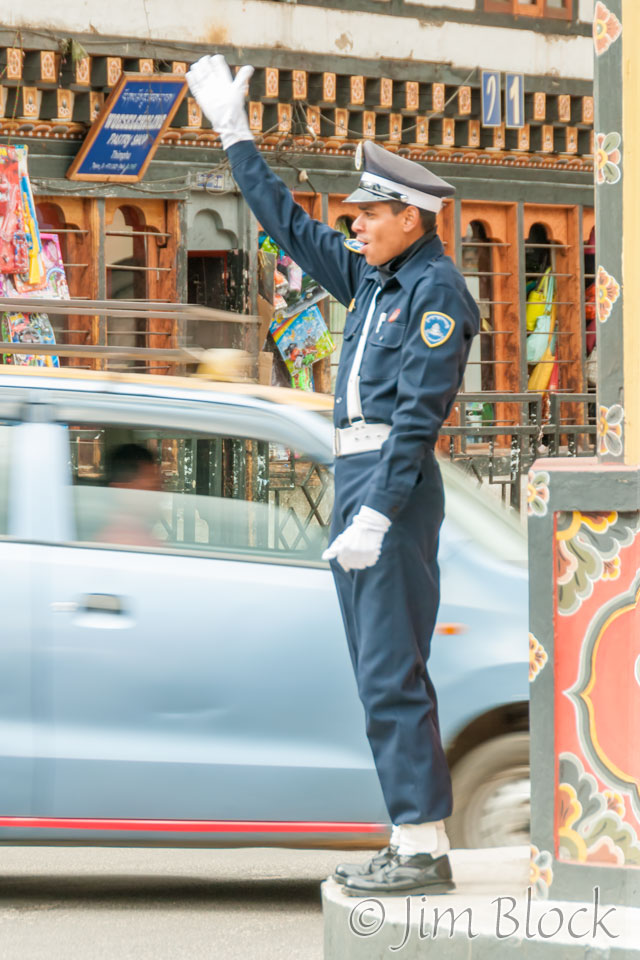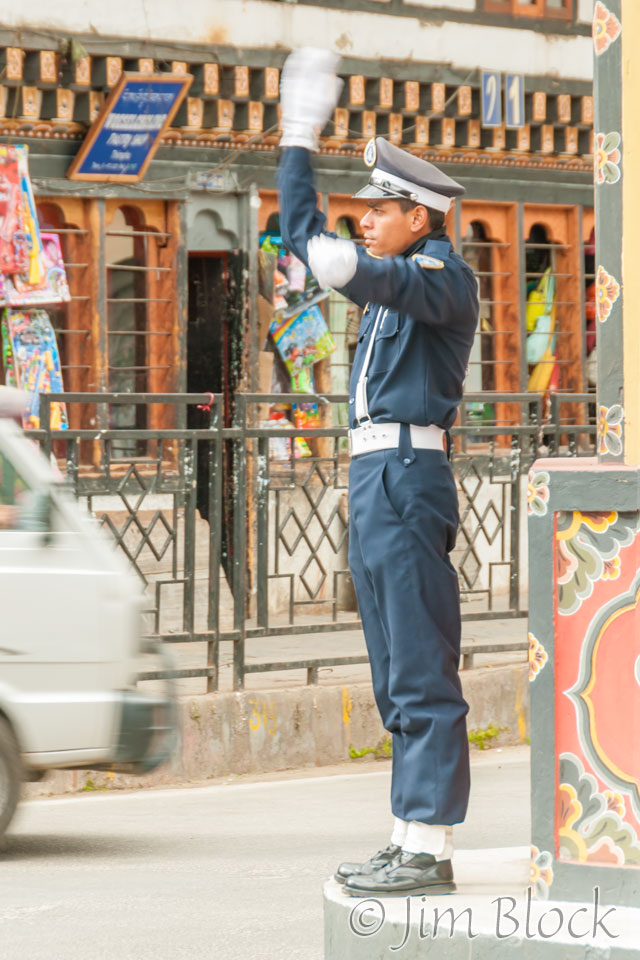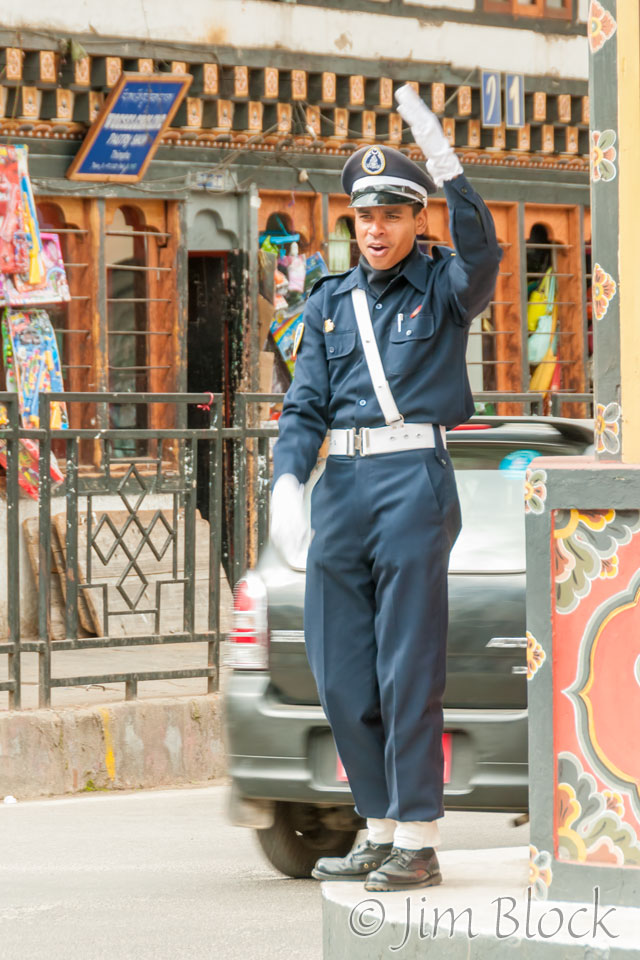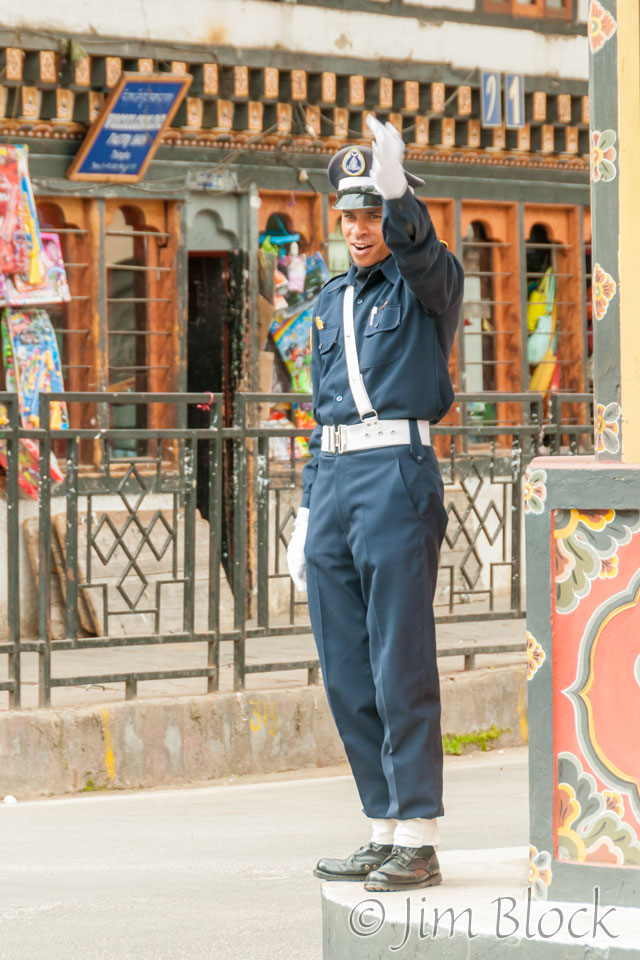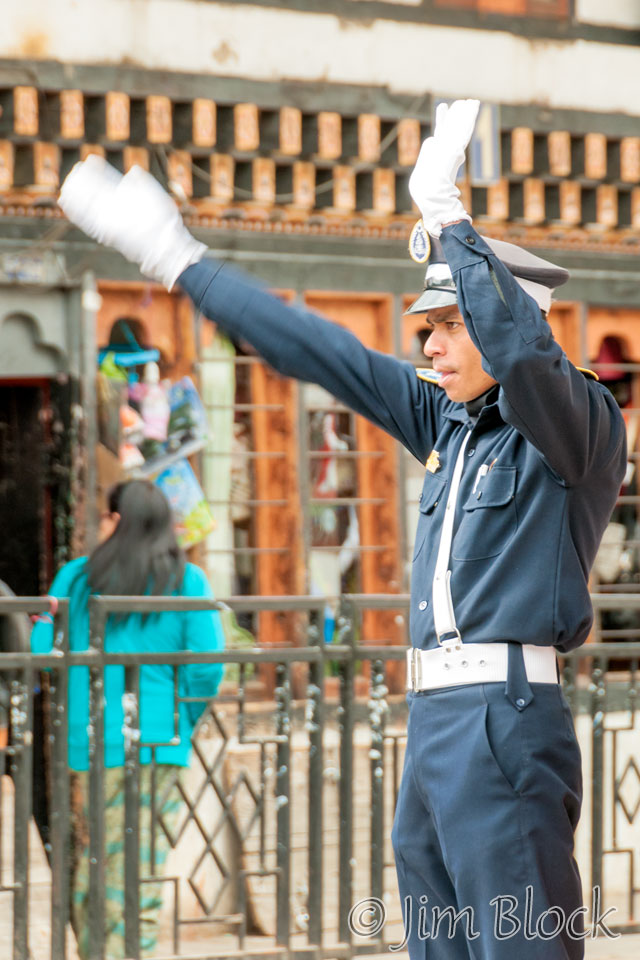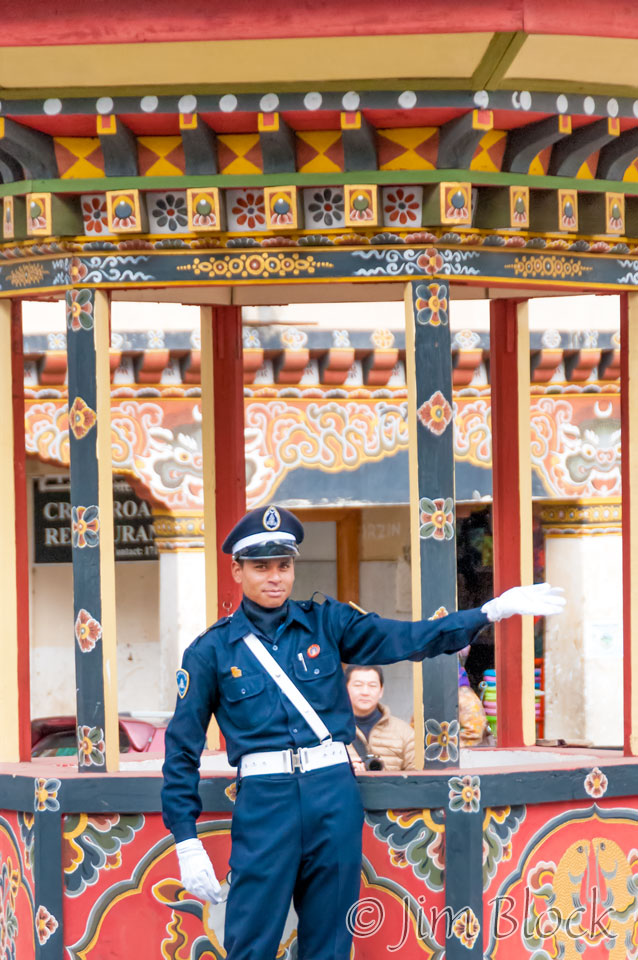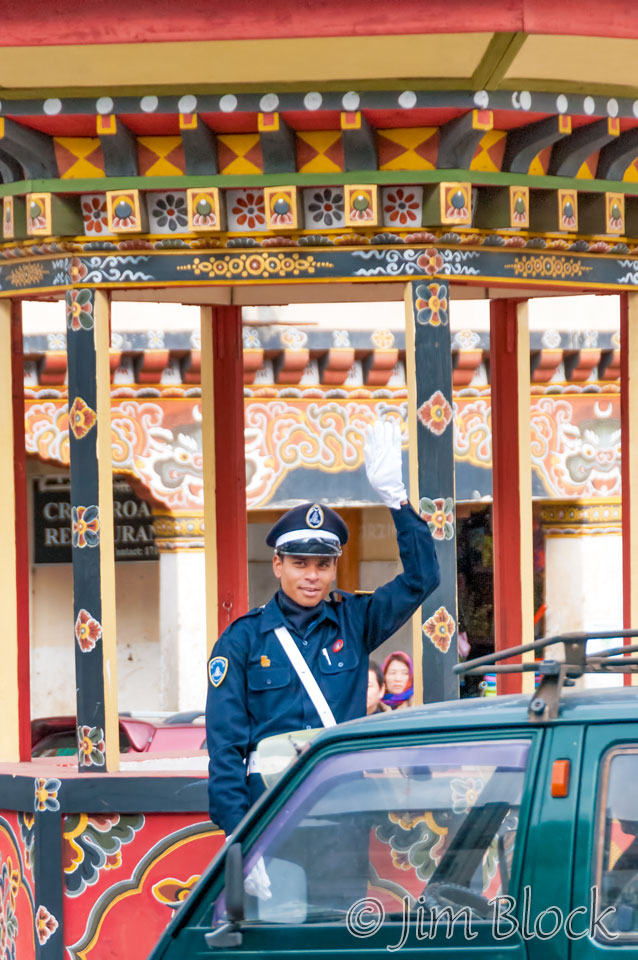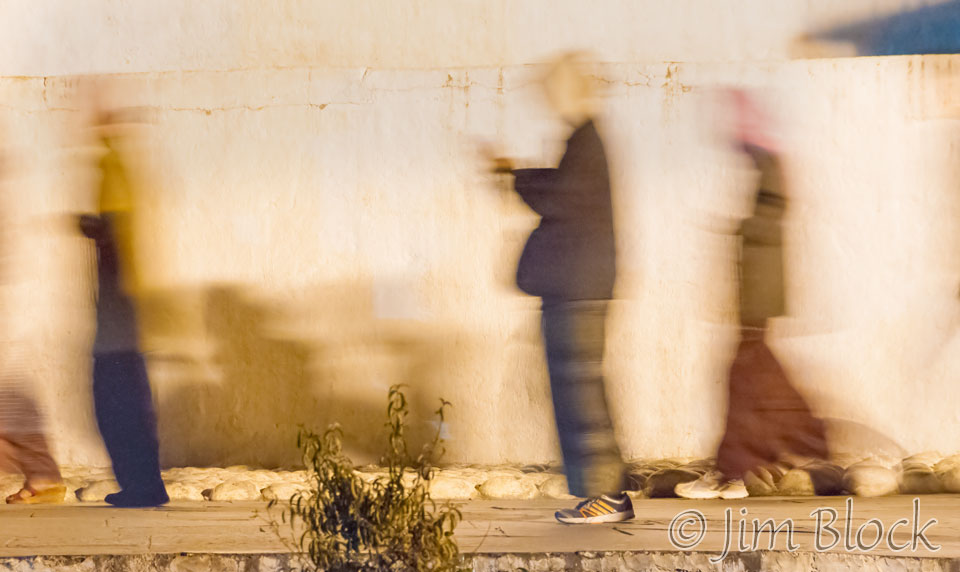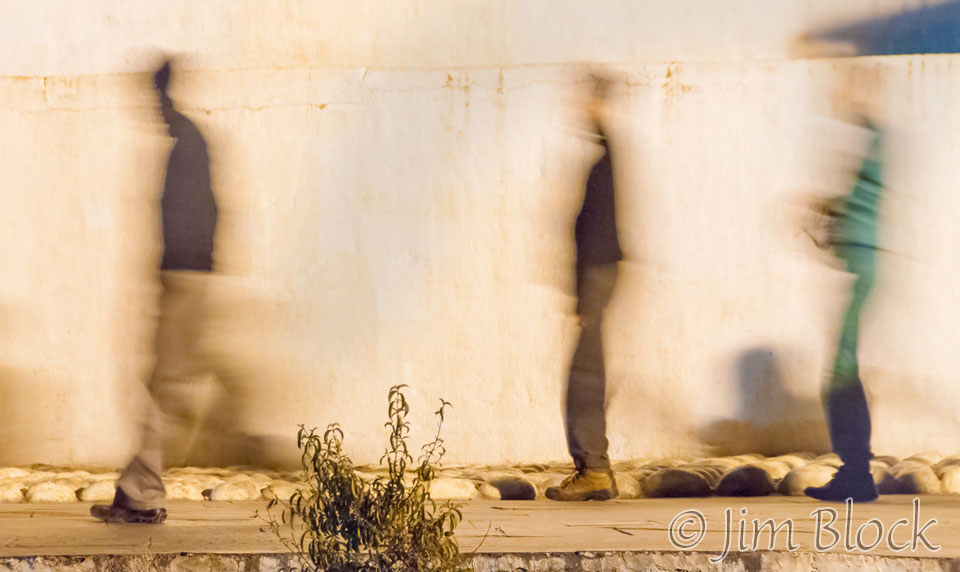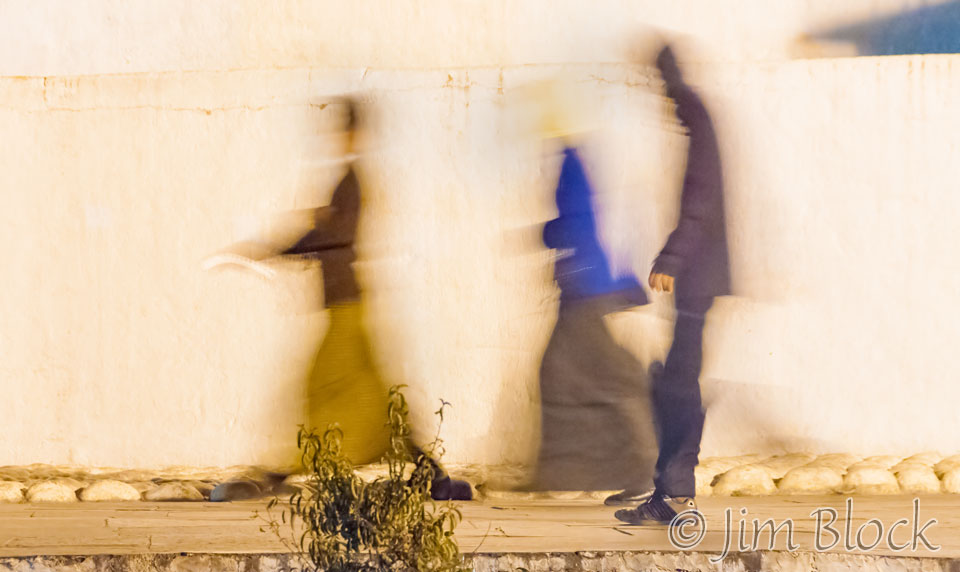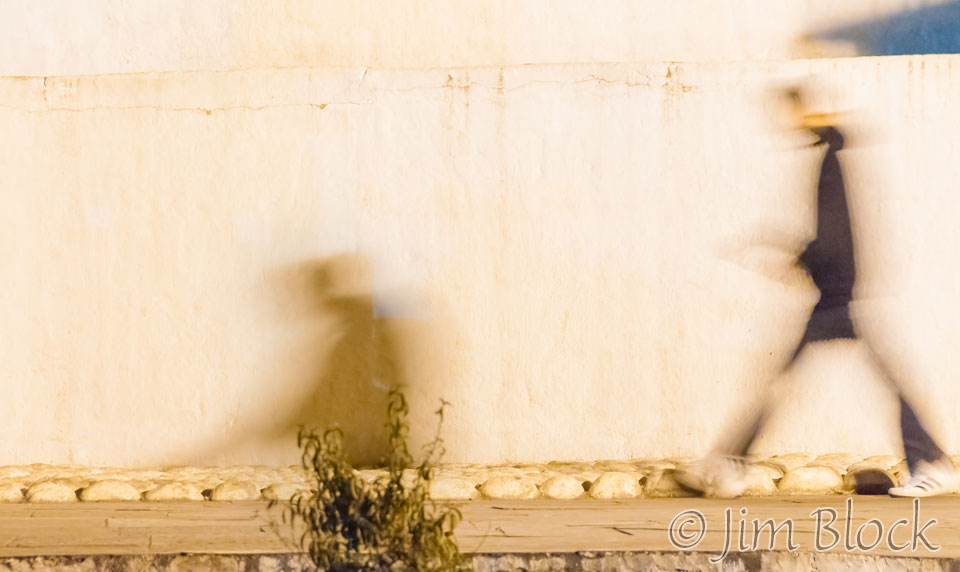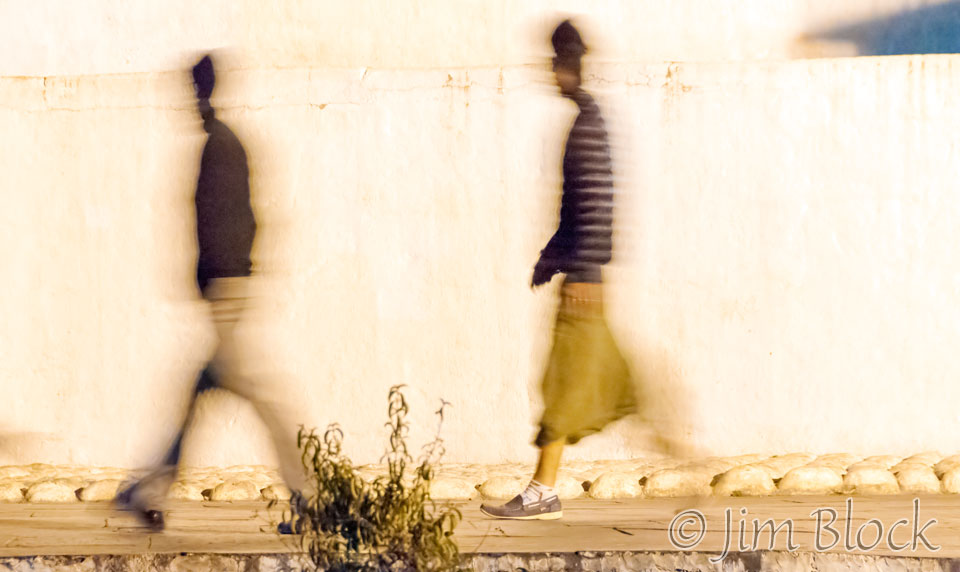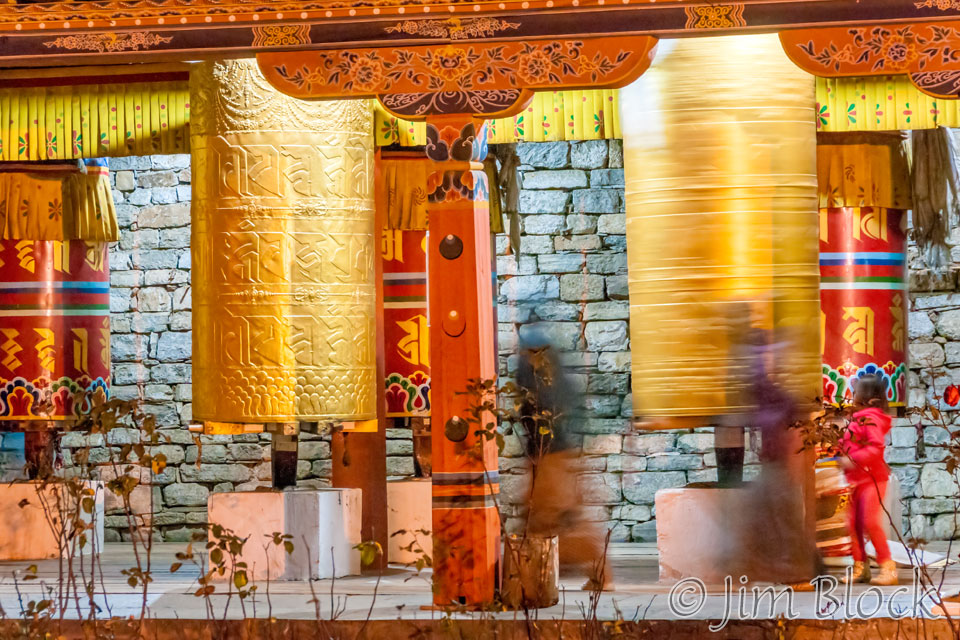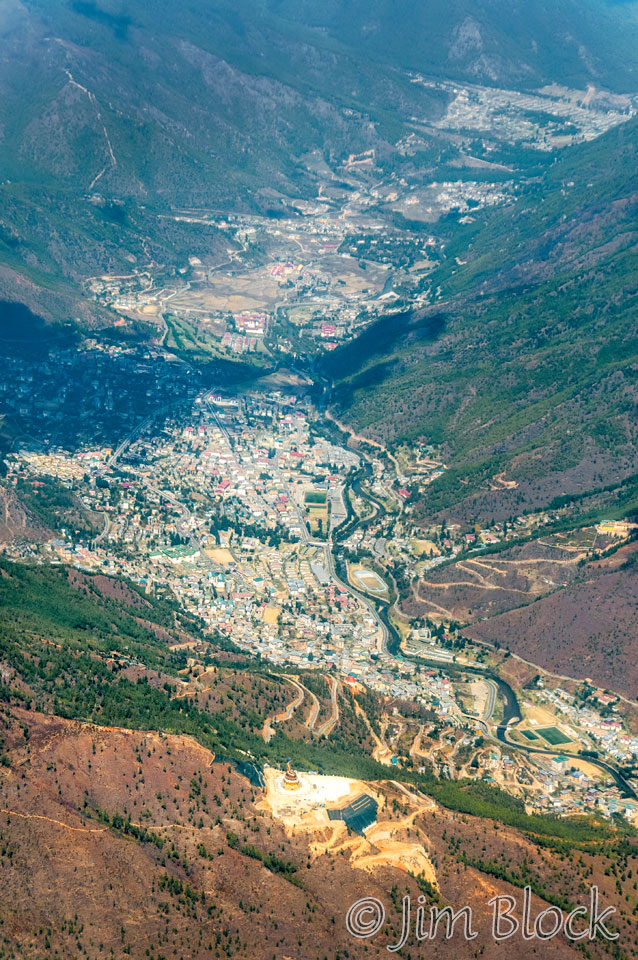
Our first view of Thimphu and its valley was from a Druk airplane during a flight from Paro to Bumthang. In the photos below you can see the still-under-construction Buddha Dordenma statue. It is surrounded by a large expanse of the white stone of the plaza in front of it. It is said that this statue can be seen from space.
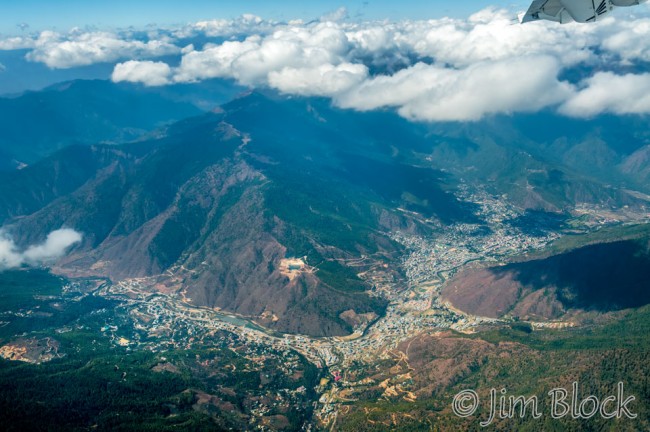
Our first visit to Thimphu was a short one. We were merely passing through from Punakha to Paro. We spent less than 90 minutes in the city but while there we had a very enjoyable visit with Dhamey Norgay, his charming wife Sonam Dorji, and our trekking guide Phub Tshering. Our six-day Jomolhari Trek would be starting the next day.
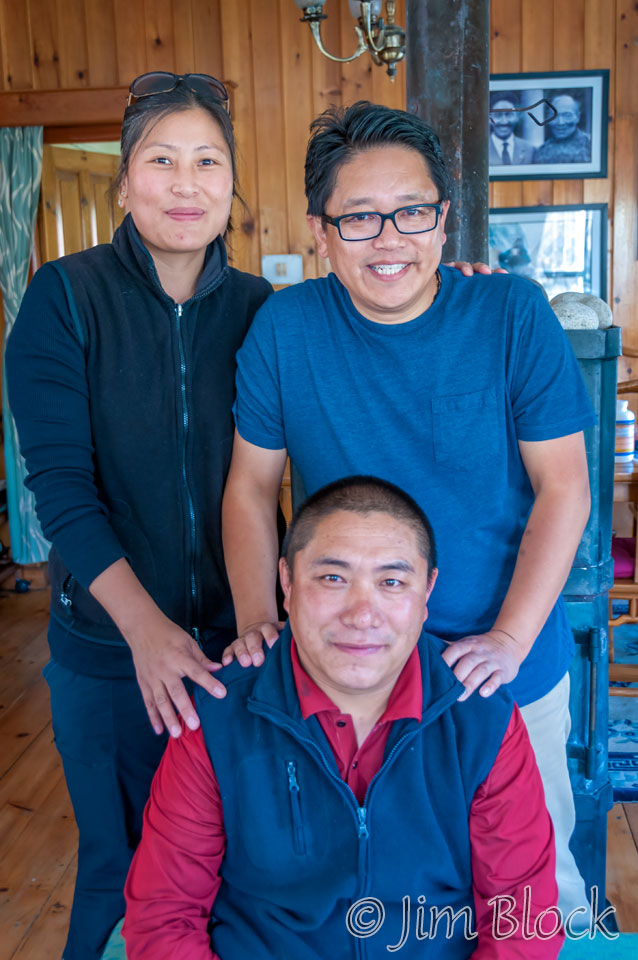
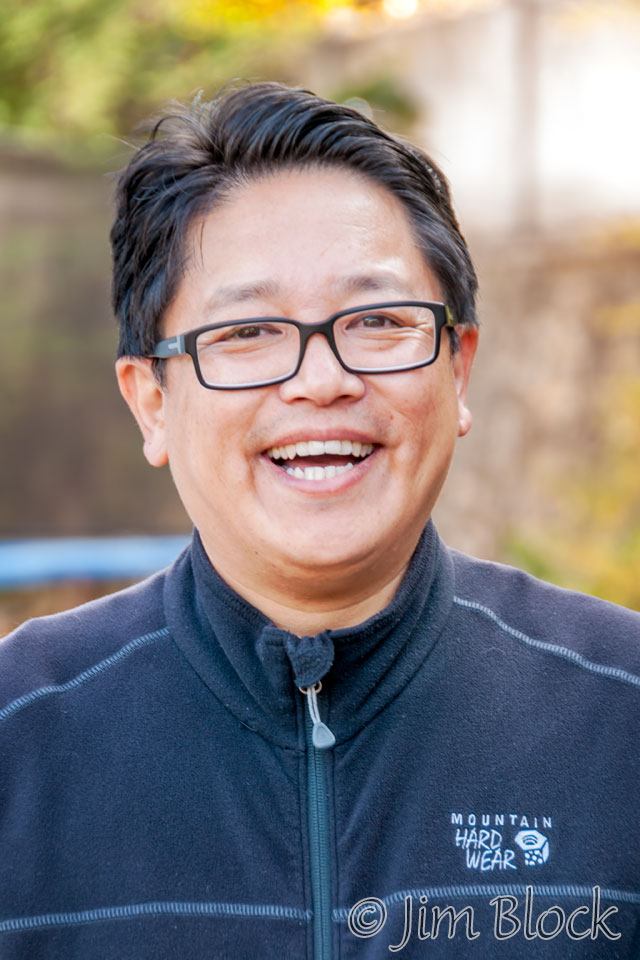
Our second arrival in Thimphu was the evening after our trek. We checked into our hotel, rested, had dinner, and went to bed. The trek had been a great experience, but we were tired from the very long downhill this day.
The next morning, before Lakey, our guide, and Kencho, our driver, arrived, I took some photos of the street in front of our hotel. The photo on the left below is a two-shot panorama taken with my iPhone.
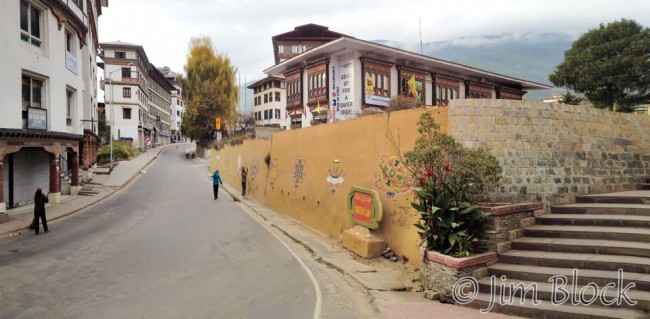
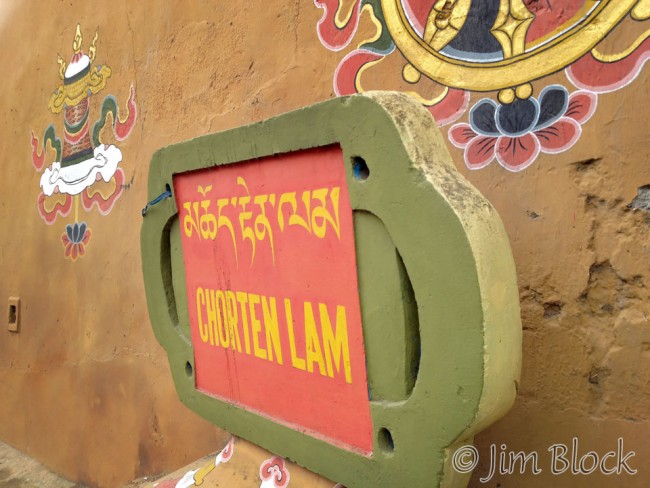
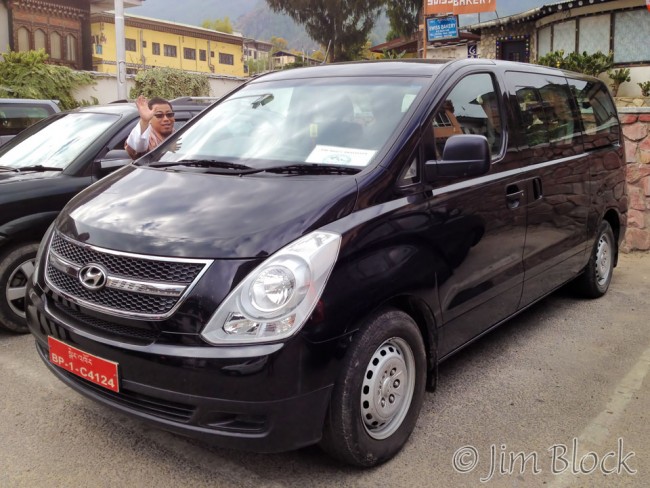
Lakey and Stephen discussed the plans for the morning and Kencho was waiting by the car.
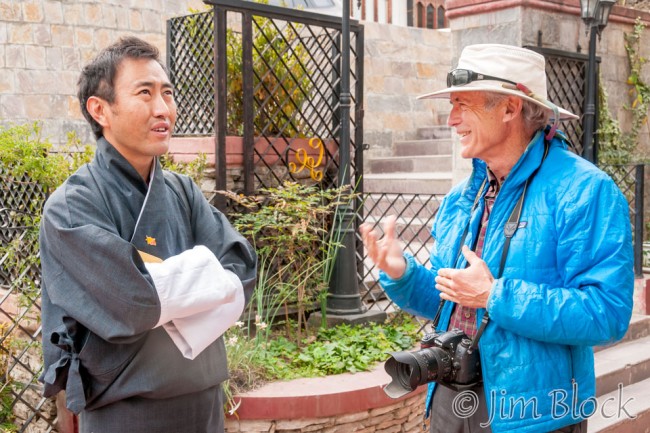
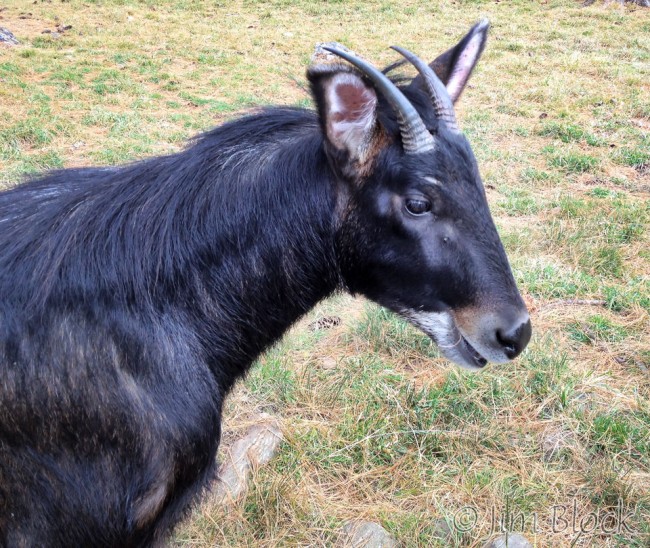
Our first stop was the Motithang Takin Preserve where we saw barking deer (L) and sambar deer (R).
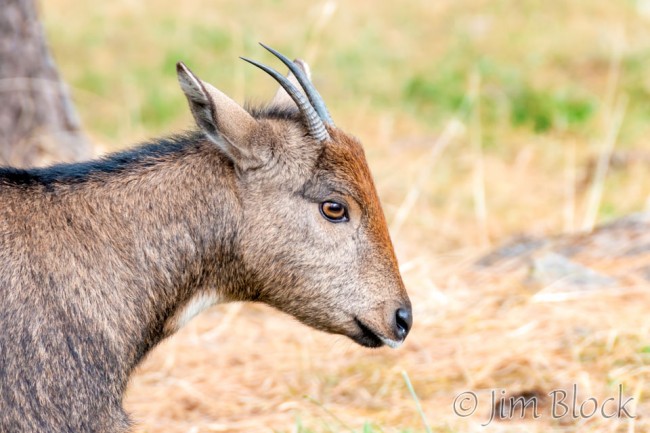
But the real star of the show was the takin, the national animal of Bhutan. The takin is said to have been created by the Divine Madman who combined the head of a goat with the body of a cow. In any case, the takin is certainly a strange looking animal.
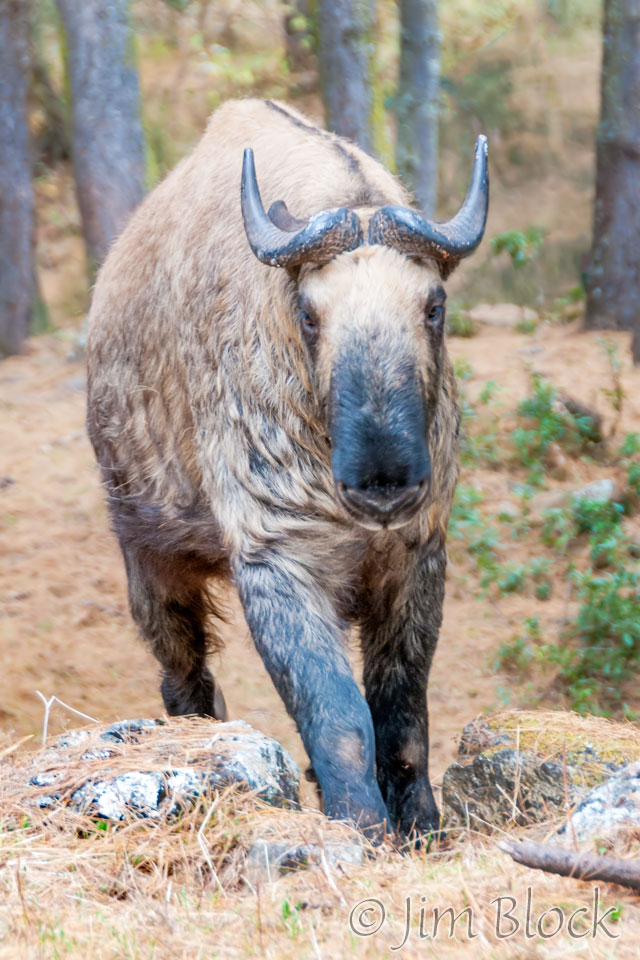
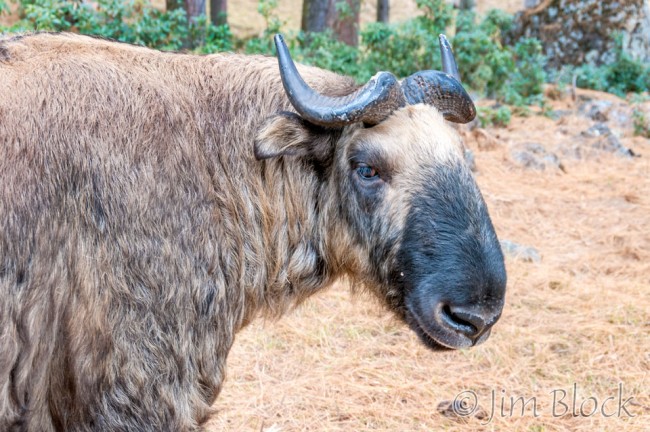
As we were leaving the Takin Preserve, a group of children arrived. One boy with a hat and an attitude attracted my attention.
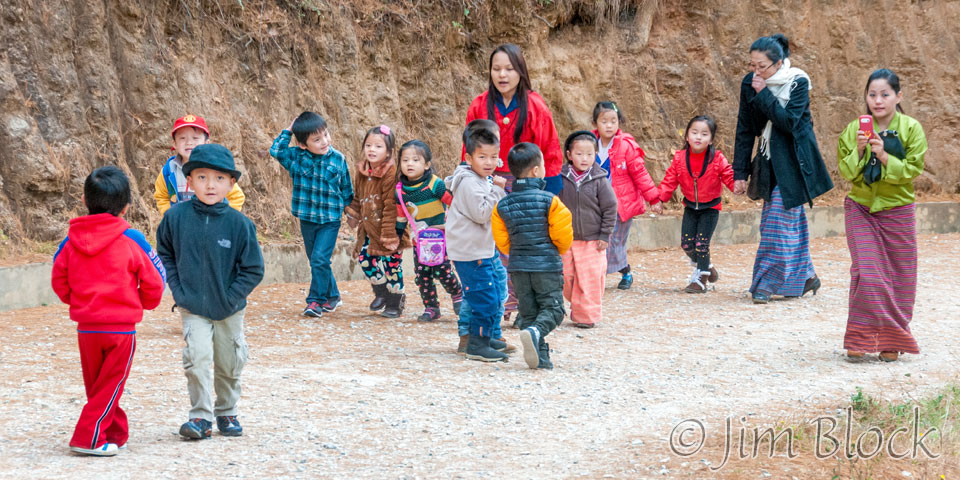
We drove up Gadem Lam for an overview of the city. The photo below was taken with my iPhone. We would return to the spot the next evening to do some photography of the city after dark.
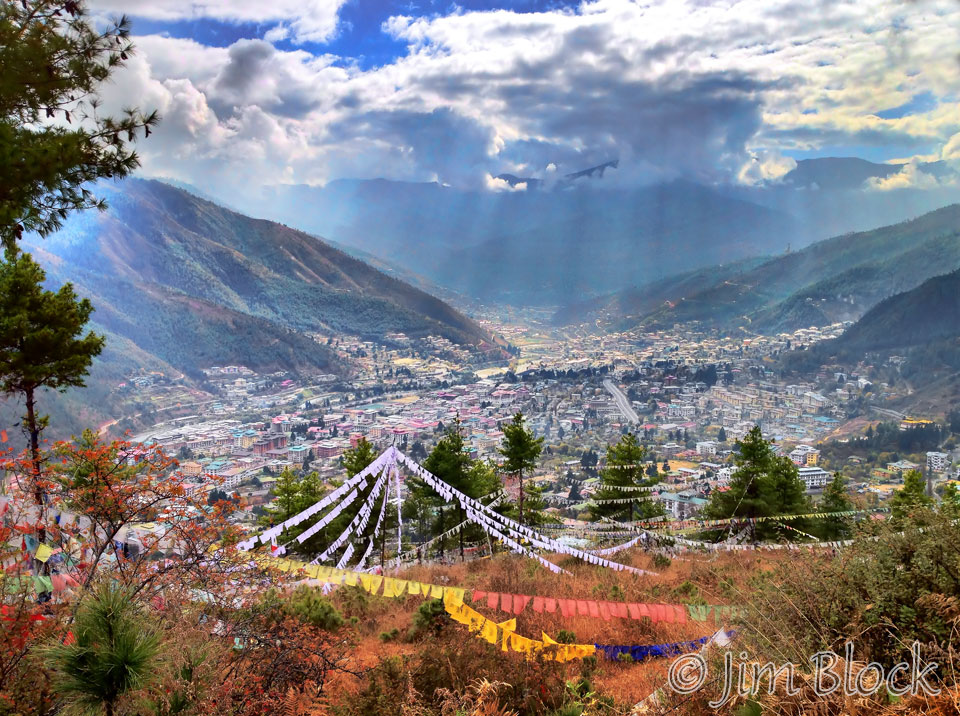
We hiked to the Wangditse Monastery which was being rebuilt. We met a woman doing her wash and got a look at her homemade loom.
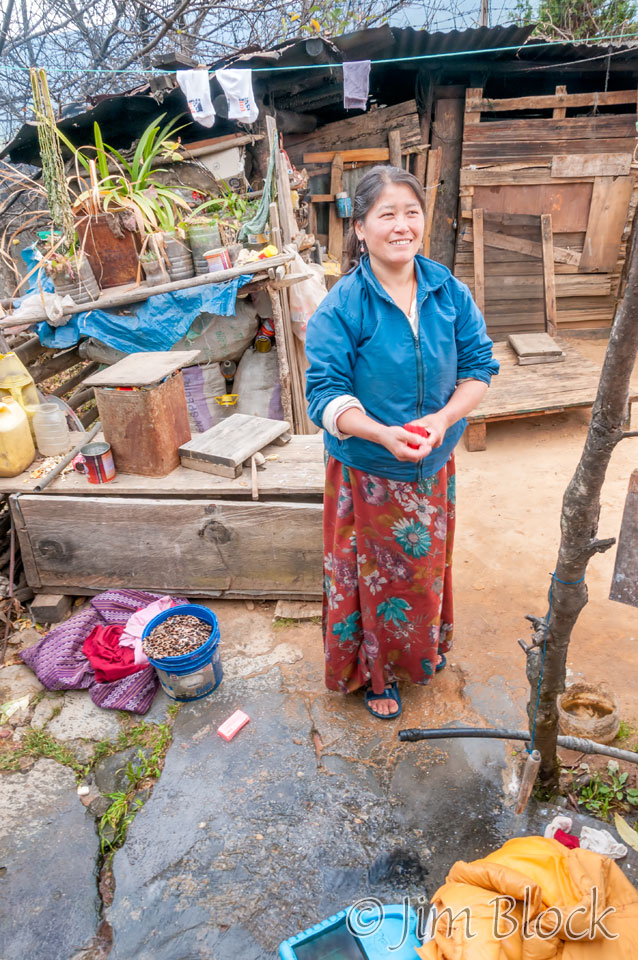
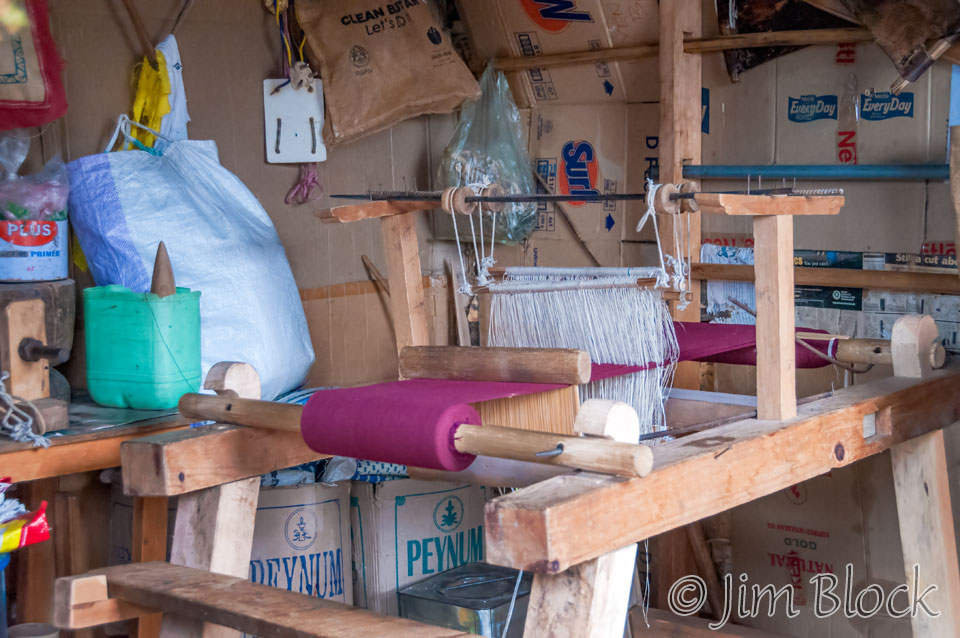
We saw a woman burning incense on a cliff above the Thimphu Dzong.
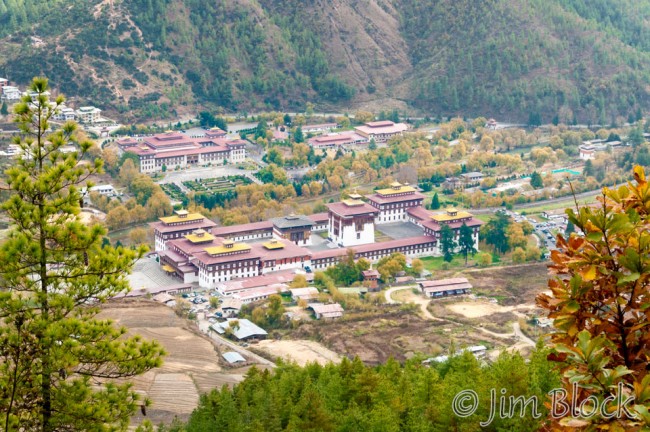
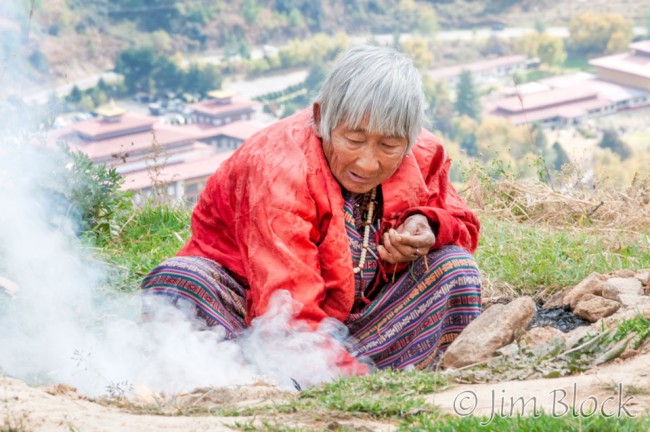
Below is a view of Thimphu from near the monastery.
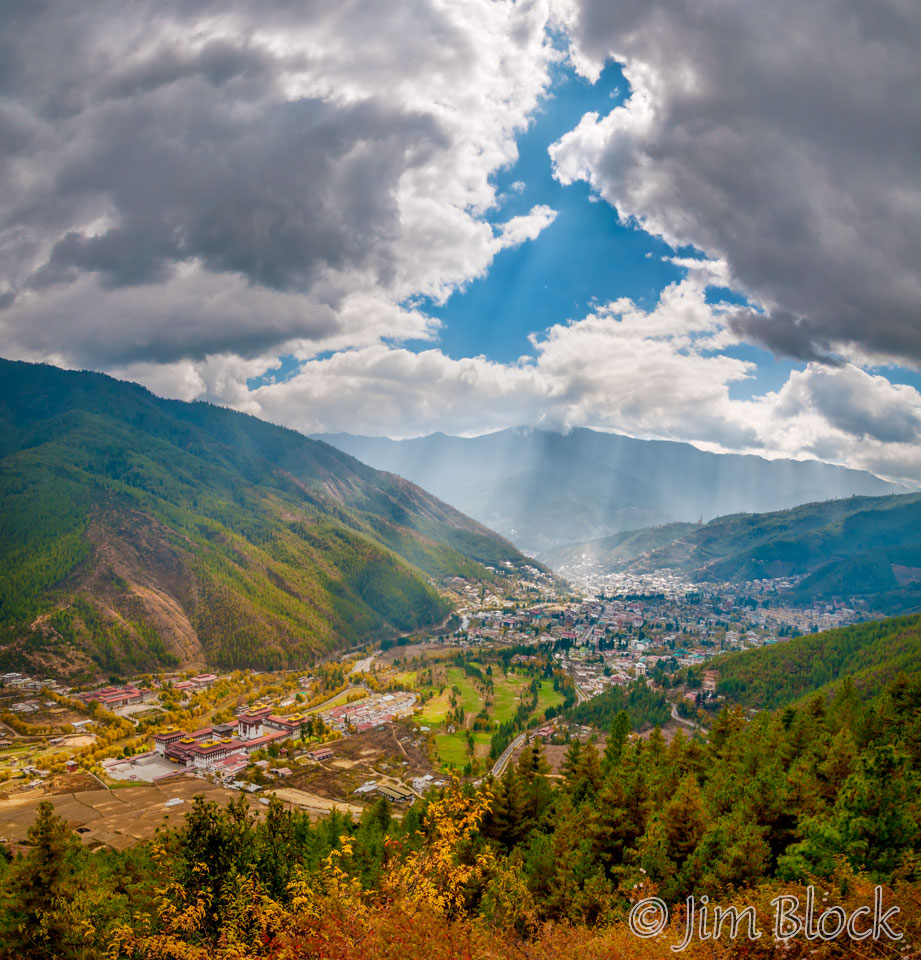
The “modern” methods that are used in both Bhutan and Nepal for construction were quite fascinating to me.
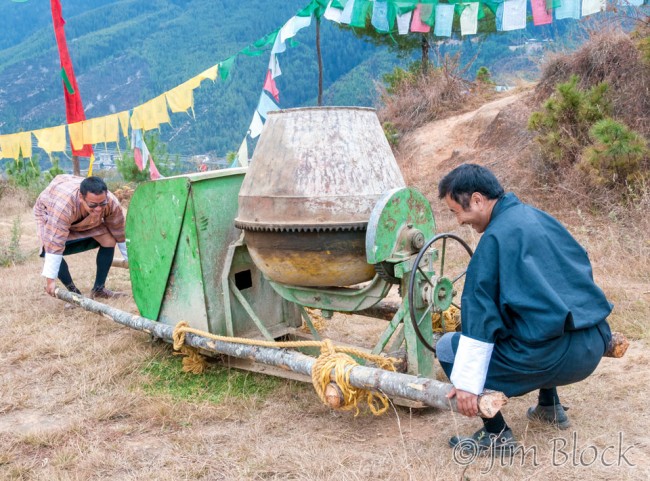
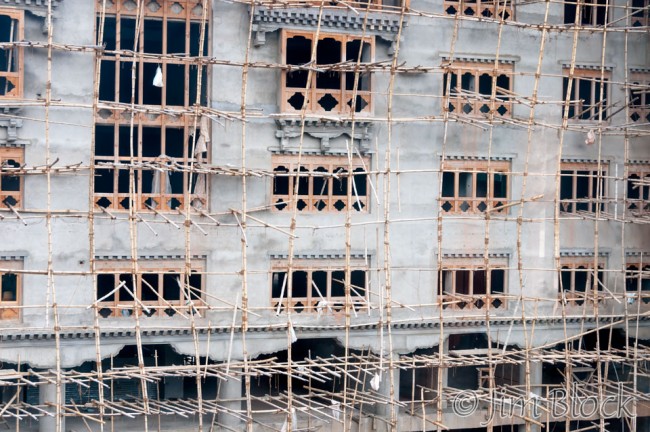
We had a great lunch at the Cousins Restaurant of steamed momos and fried dough. I took several photos out the restaurant window.
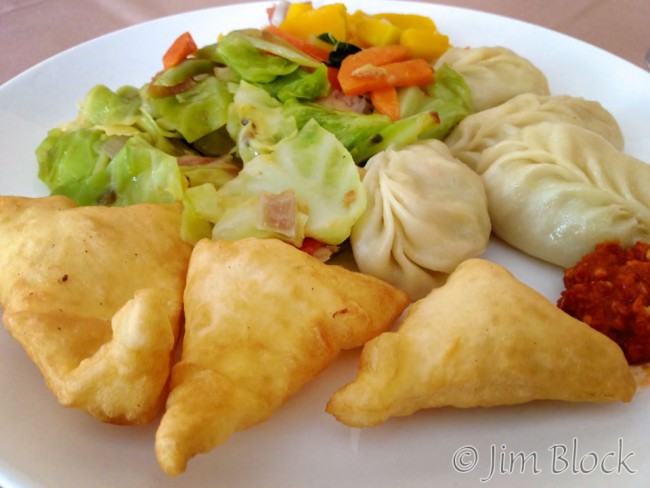
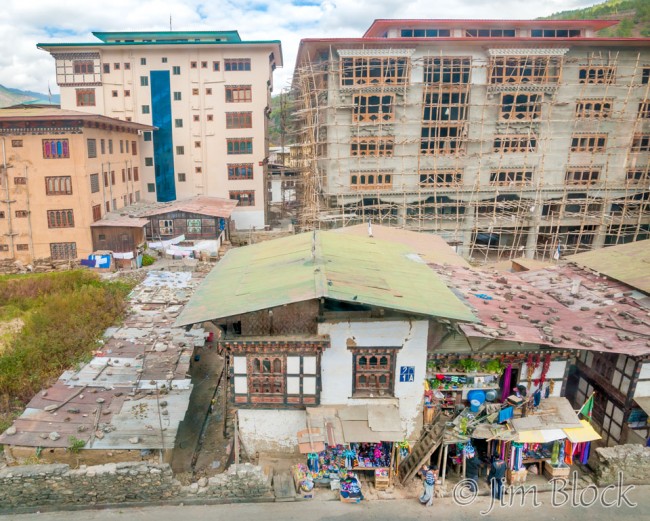
Leaving the restaurant I got a long distant shot of the huge Buddha statue we would hike to tomorrow.
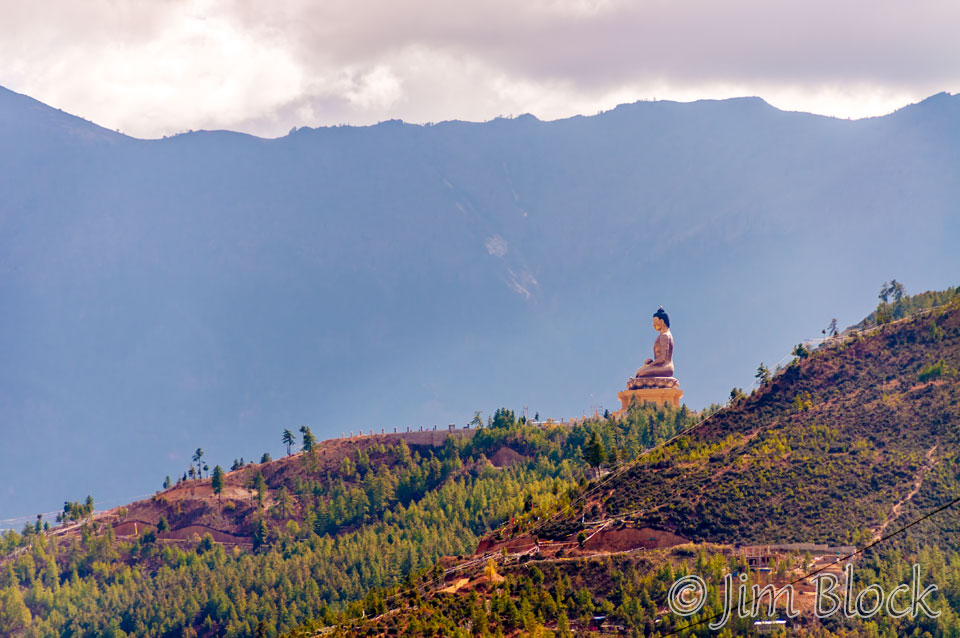
Below is a slideshow of other photos I took during the morning in Thimphu.
After lunch we visited the National Textile Museum. It is a beautiful building inside and out, and the textiles and exhibits there were fantastic. However photography was not permitted so I have nothing to show here.
As a photographer, I was frustrated with not being able to take photos in temples or government-owned museums in Bhutan. This contrasted sharply with Nepal where photography was permitted almost everywhere.
We visited Zorig Chusum Art School. It was wonderful to be able to walk among the students, take pictures, and observe their progress with sculpture, drawing, painting, and textiles at work. In the parking lot outside of the art school I photographed two young girls.
Below is a slideshow of the art school.
Our next stop was the Jungshi Handmade Paper Factory. We saw paper being made from the fibrous inner bark of daphne shrubs, a subspecies of laurel. This paper is also known as lokta paper in Nepal. In the slideshow below one can see a worker in the early stages of fiber preparation, some of the pulp fiber, screening of the fibers to make sheets, and an overview of the area.
As we left the paper factory the light on the city was fascinating. I created an artistic rendering of it as seen below.
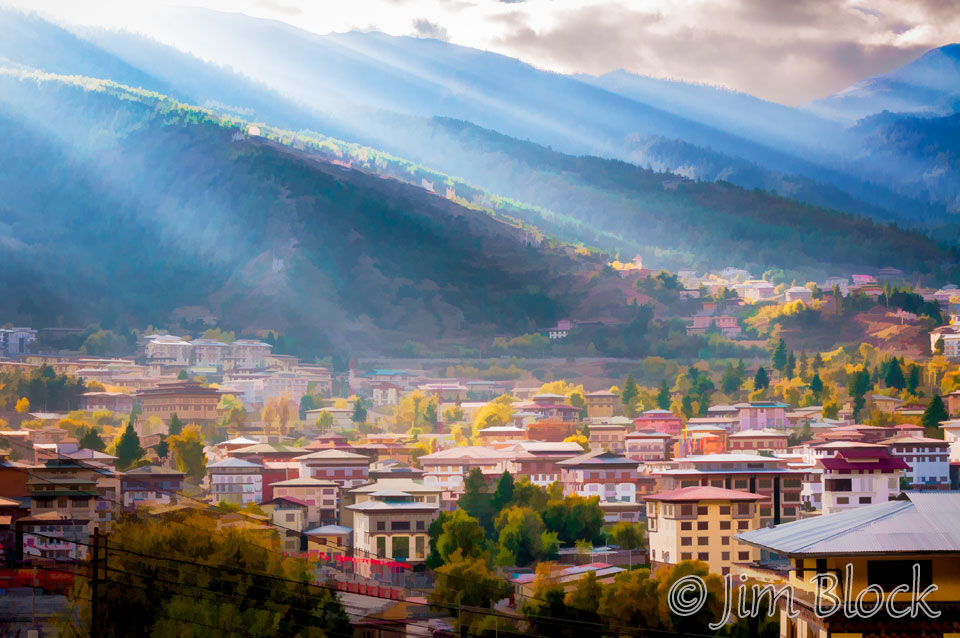
Our final stop for the afternoon was the Thimphu Dzong. Frankly, I was much more impressed by the beautiful dzongs in Punakha and Trongsa. Perhaps my feelings were somewhat tempered by the fact that we had to stand outside late into the afternoon while the flag was lowered and all the workers paraded past heading home. But I got some photos of the roses in the garden outside. The slideshow below shows photos from outside and inside this dzong.
Dhamey took us to dinner at the Seasons Restaurant, a short walk from our hotel. This was definitely not a typical Bhutanese restaurant. We had a wonderful French onion soup followed by pizza.
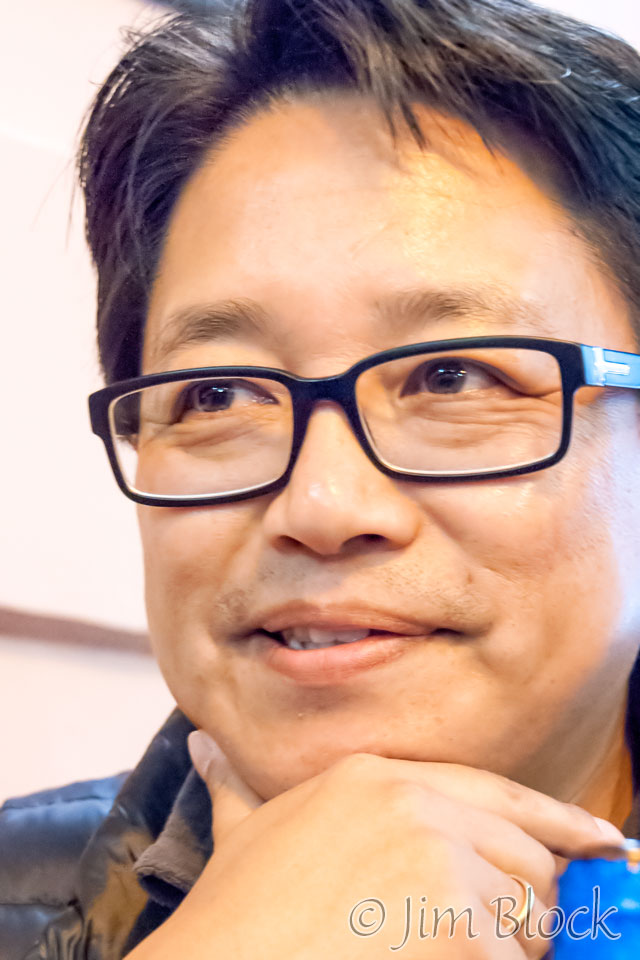
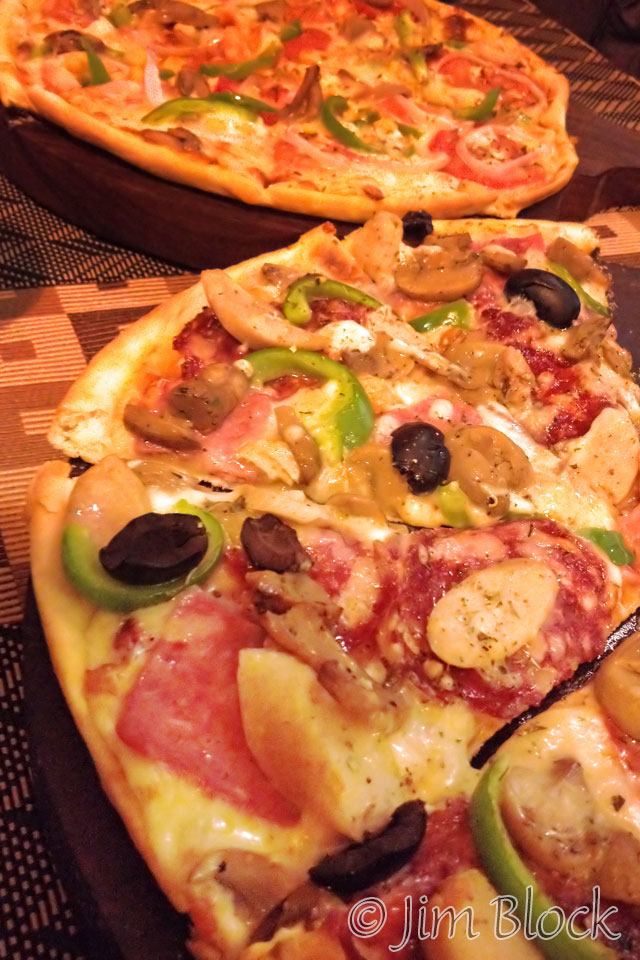
The next morning I made a few photos near our hotel before breakfast. In the left photo below you can see the floors above the Seasons Restaurant filled with lines of pigeons. The photo below right is very typical; there were many pictures of the king and his beautiful wife all around Thimphu.
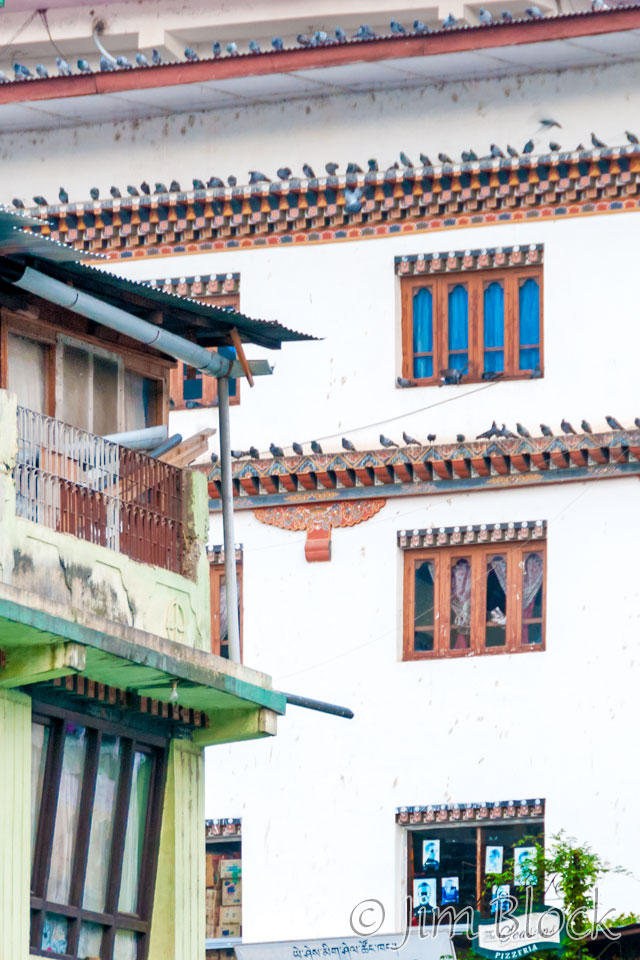
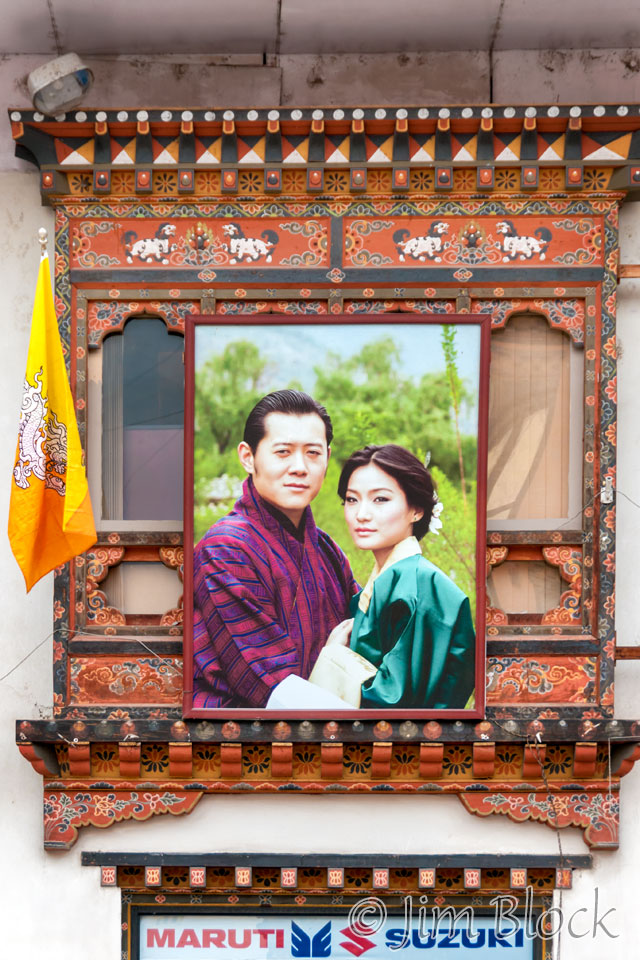
There were many dogs in the city. Buddhists will not euthanize dogs, so they are left with capture and sterilization to try to control their population. But apparently the dogs are pretty savvy at alluding capture. They sleep everywhere during the day and roam in packs at night. More on this at the bottom of this page.
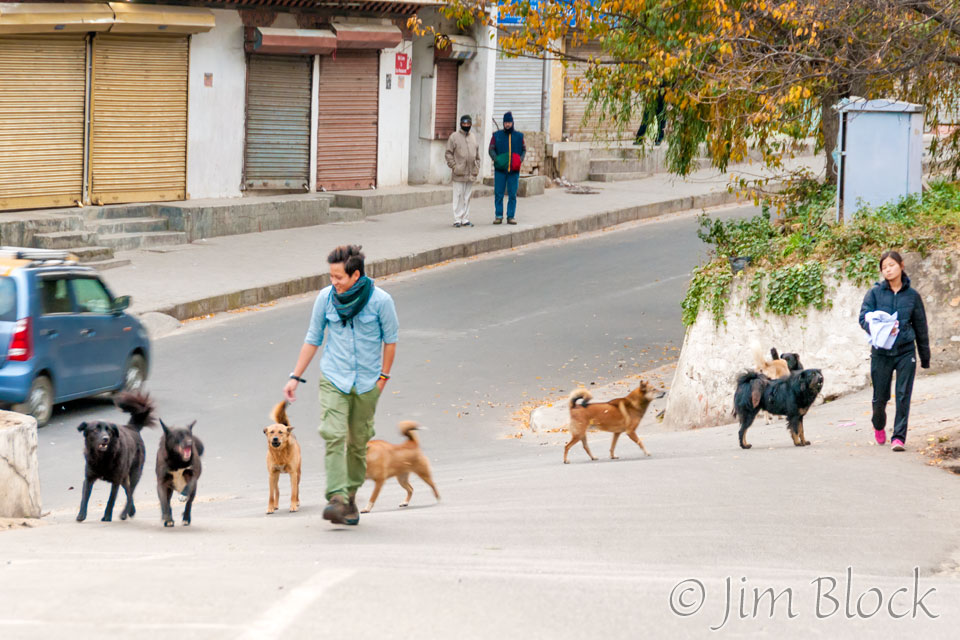
Our first stop for the morning was the National Memorial Chorten. This Tibetan-style chorten (stupa) was built in 1974 as a memorial to the third king.
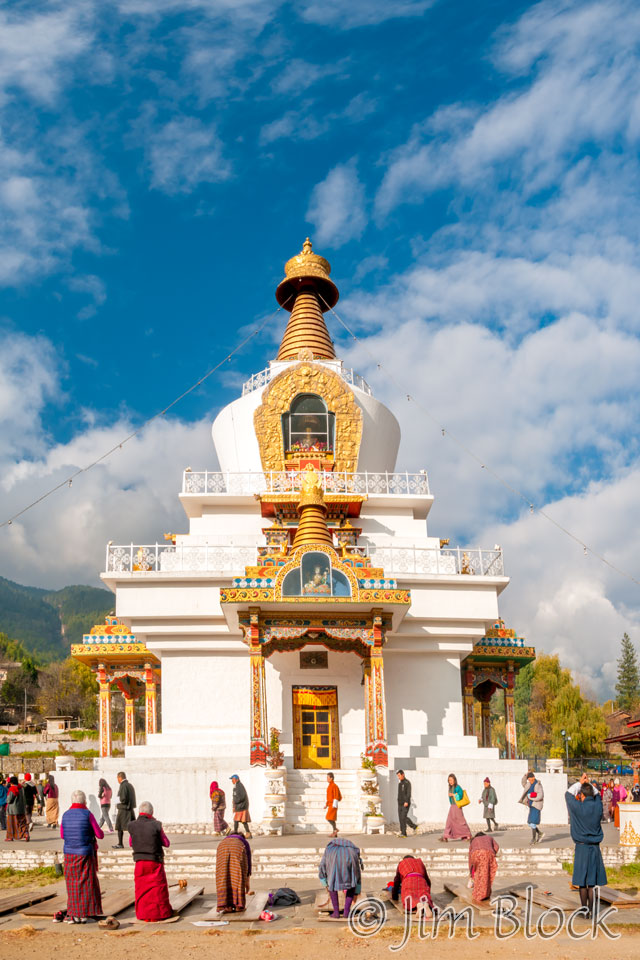
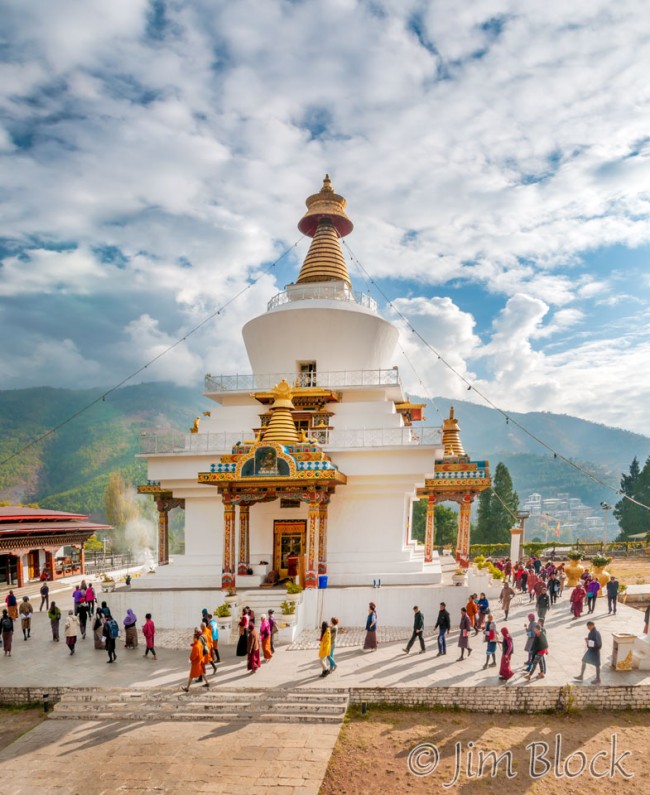
We watched the morning worshipers walk around the chorten praying. I found the shadow patterns on the chorten walls fascinating. Below is a slideshow from the Memorial Chorten.
The remainder of the morning was spent taking a long uphill hike to the Buddha Dordenma Statue. Along the way Lakey picked up trash that had been carelessly discarded. Lakey took the cleanliness of Bhutan very seriously. He realizes that the vast majority of the litter is generated by Bhutanese rather than by visitors who are generally very conscious about not littering.
On the way up we could see a mixture of modern apartments interspersed with shacks of people living on the land.
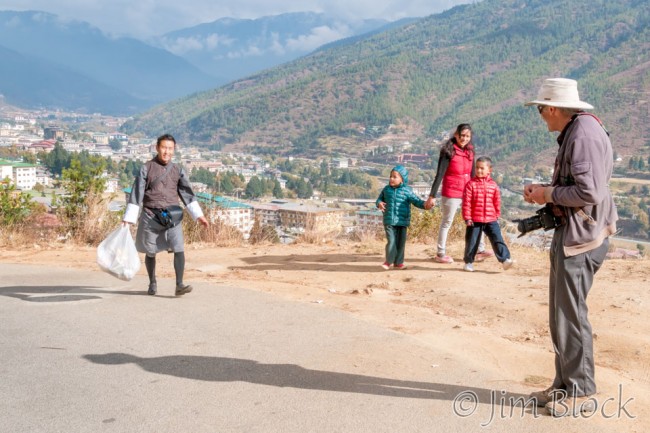
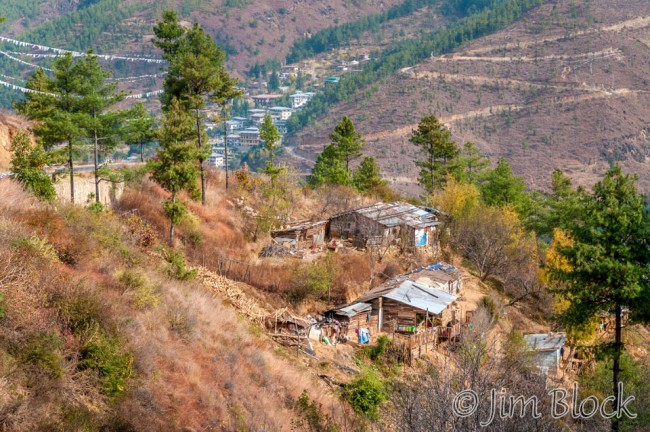
There were many green recycling containers along the road that had been put out by local schools. Unfortunately it appears that these rarely get emptied. Many were overflowing onto the surrounding ground.
As we neared the top Lakey handed his bag of trash to a worker who put it in a special container for later pick up.
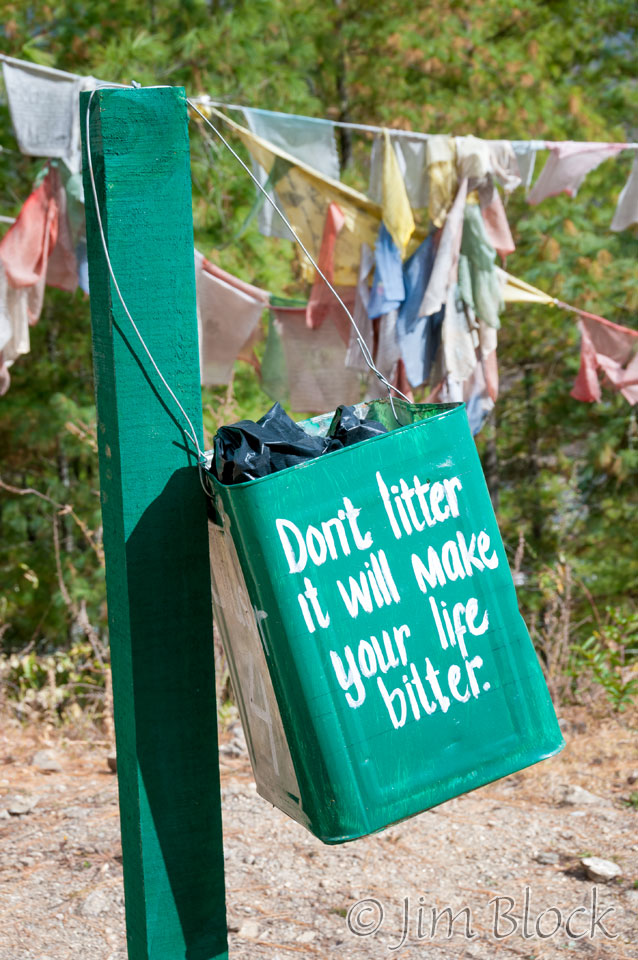
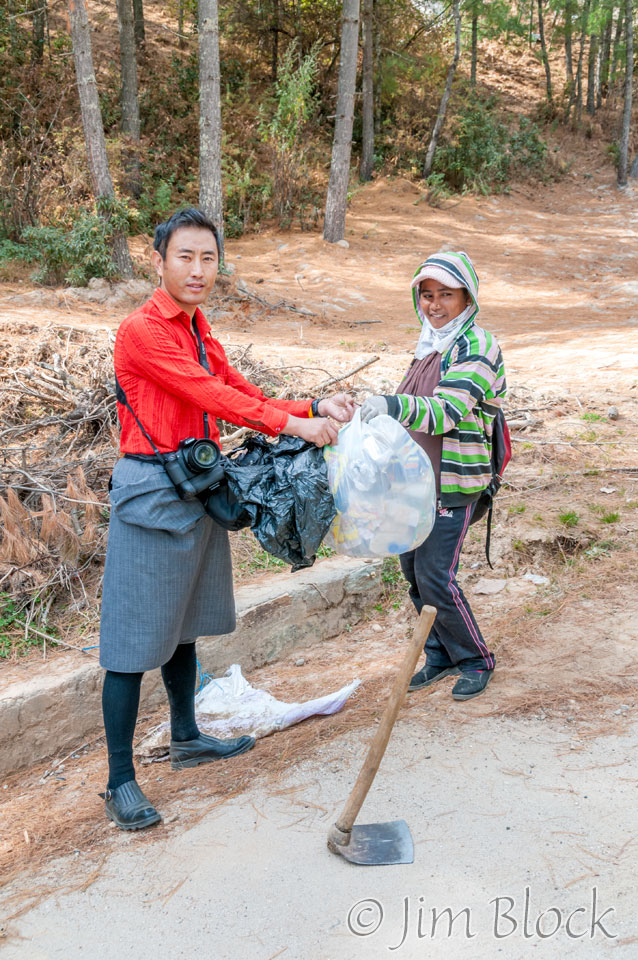
On the way up we got some great views of the city.
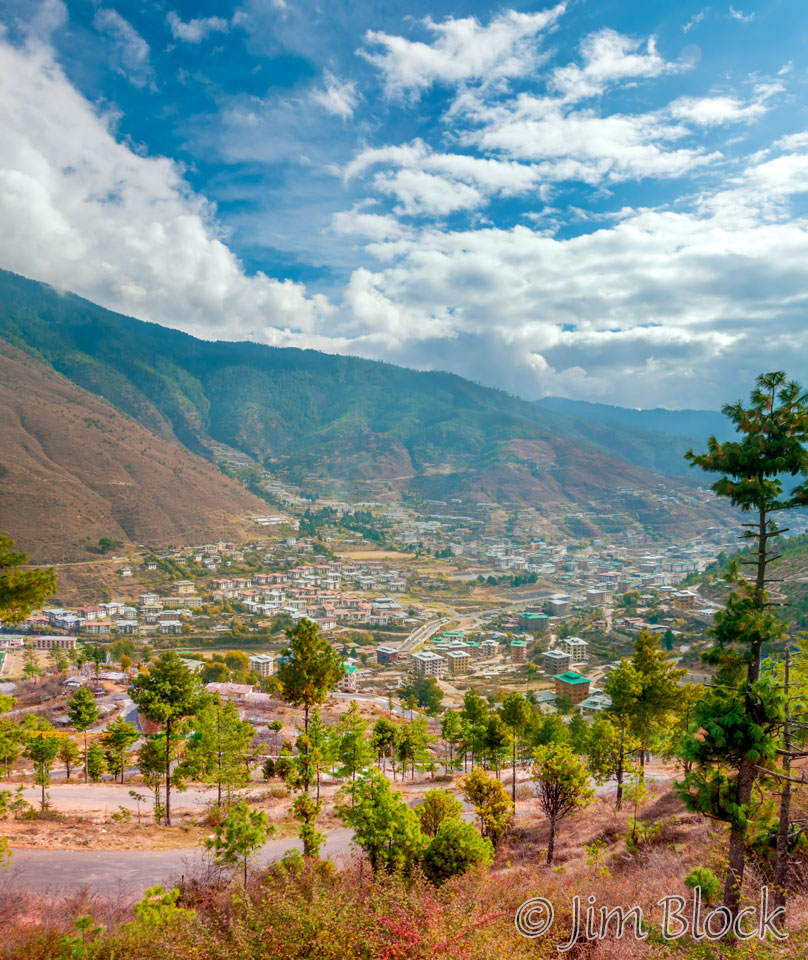
Approaching the Buddha statue from below, it did not look all that large.
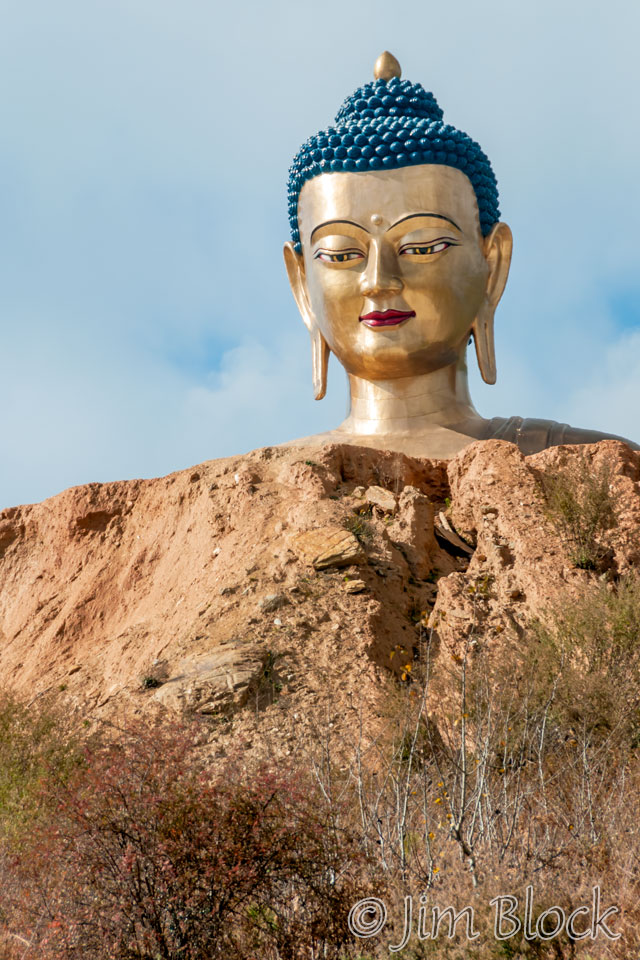
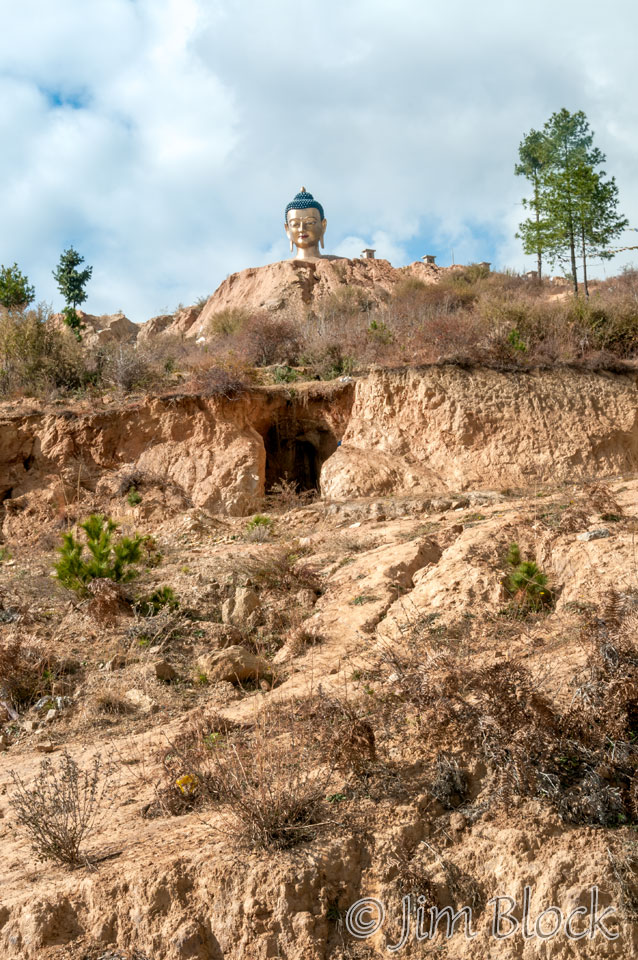
But the statue is huge as can be seen in the photo below left in comparison with the people.
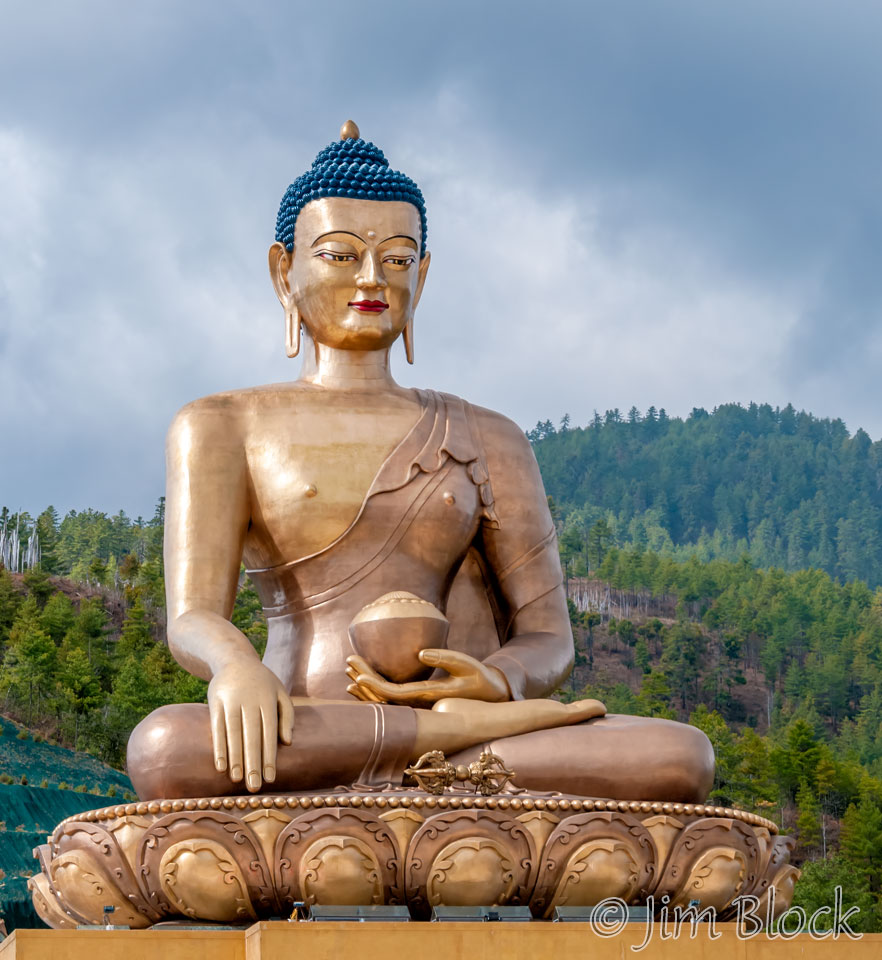
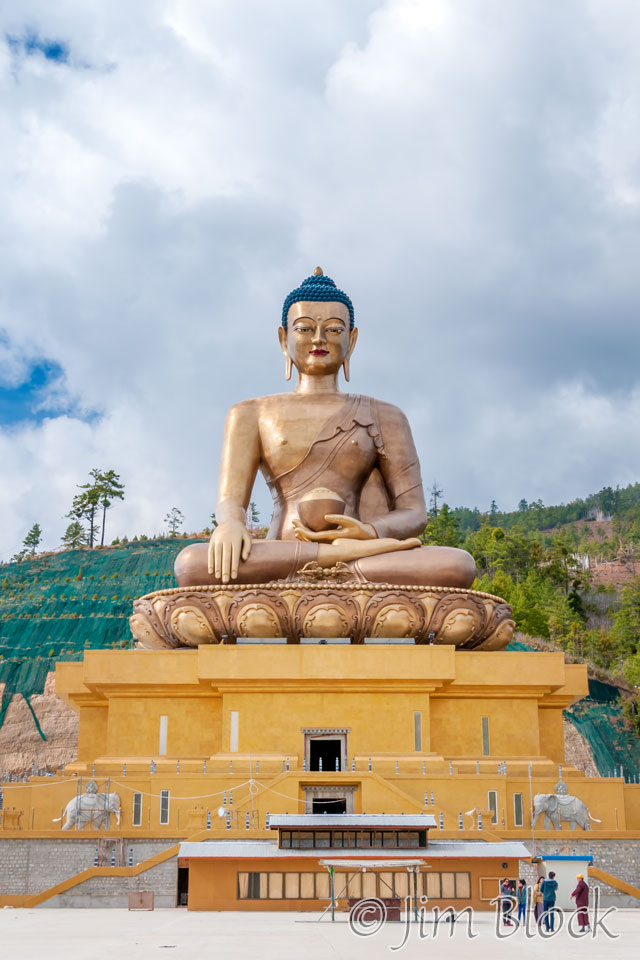
The Buddha Dordenma statue is 169 feet high, making it one of the largest statues of Buddha in the world. It is made of bronze and is gilded in gold. 125,000 smaller Buddha statues have been placed within the statue, each cast in bronze and gilded. The throne that the Buddha sits upon is a large meditation hall.
There was an international soccer tournament happening in Thimphu, and a TV crew from Bangladesh was doing local scenes to supplement their coverage. They interviewed Stephen and Lakey. I declined to be interviewed – I know that I’m pretty terrible on television.
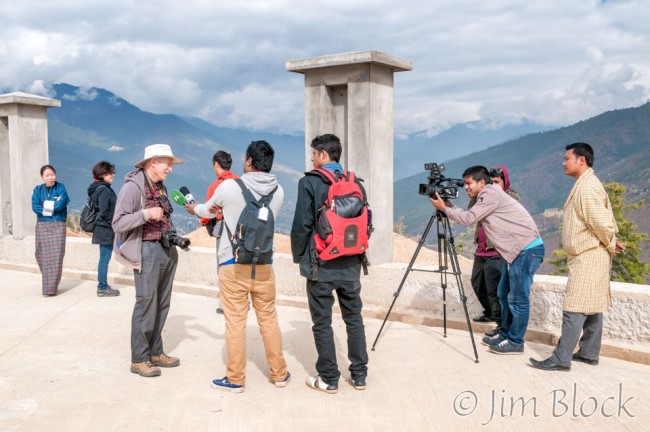
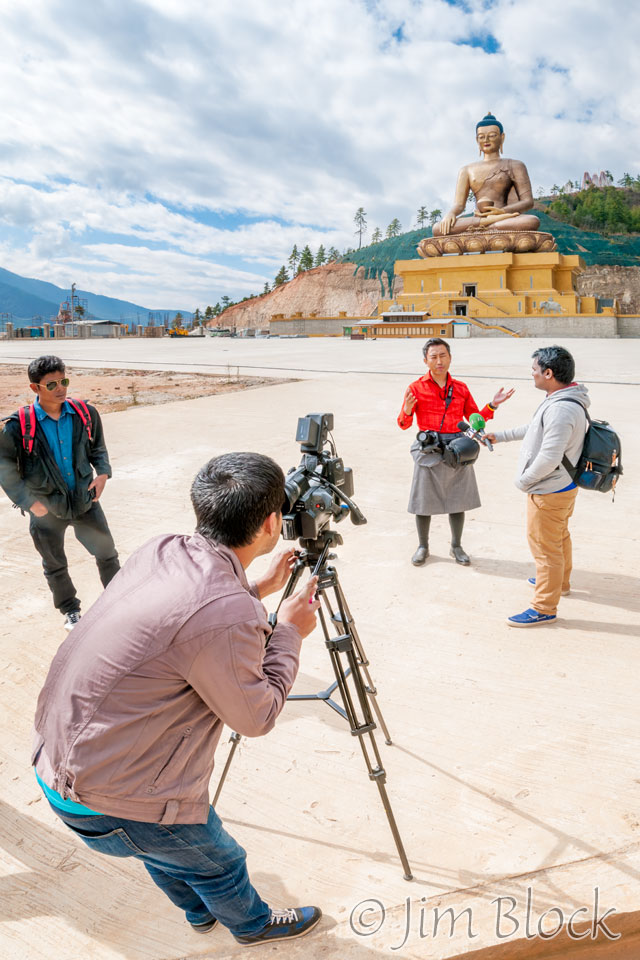
We walked to the nearby Kuenselphodrang Nature Park where we got a great view of Thimphu. Below is a five-shot panorama of the valley.

After a great lunch which included buckwheat momos, I photographed some prayer flags on a vehicle outside. As Chhongba Sherpa our superb guide when we trek in Nepal would say, “Oh mommy take me home”.
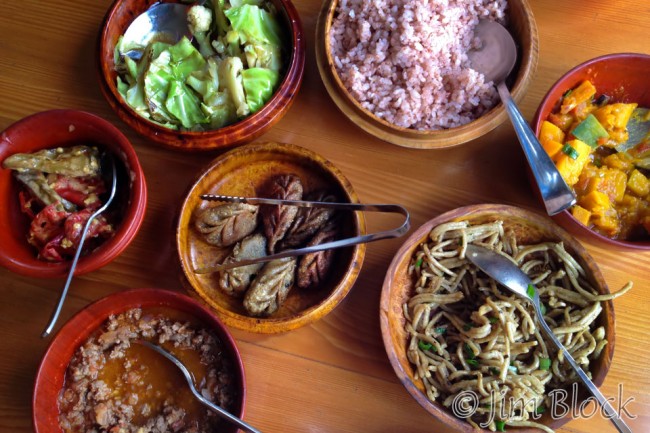
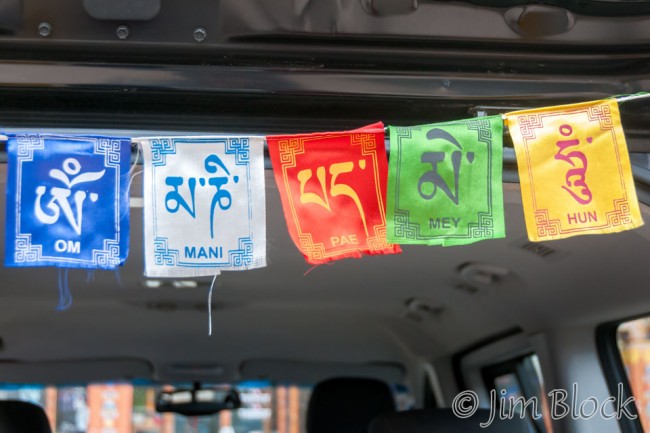
We walked past a shop with cow intestines drying near the front door to the Thimphu Weekend Market.
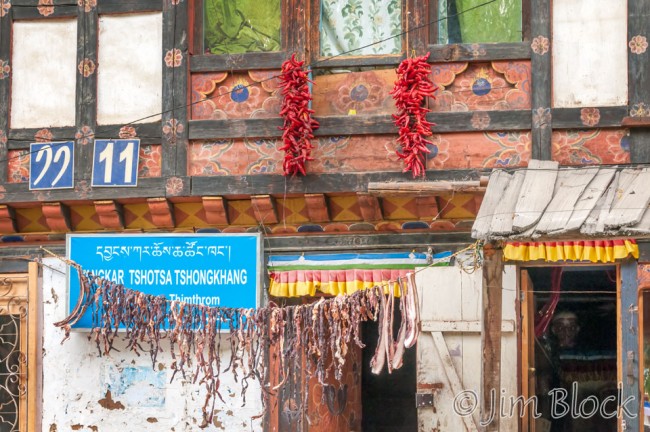
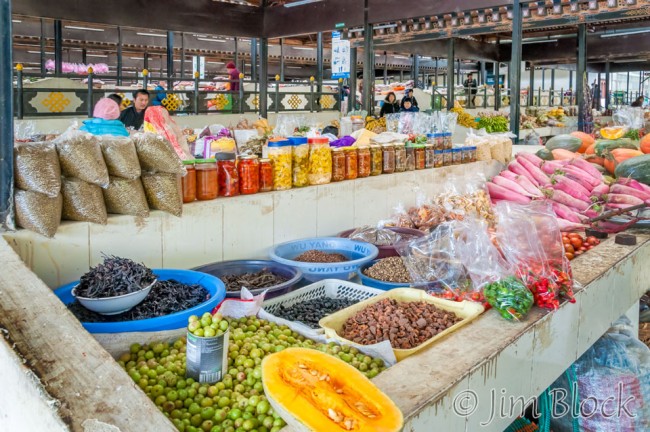
It is hard to show in pictures how immense this market was. It filled more than a city block and had two floors of vendors. They sold everything from cereals to dried fish to vegetables of all kinds – some of which we could not identify – to meat, cheese, and doma as seen below.
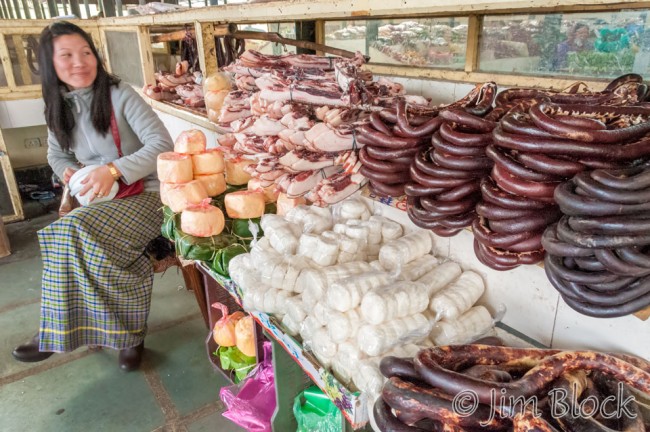
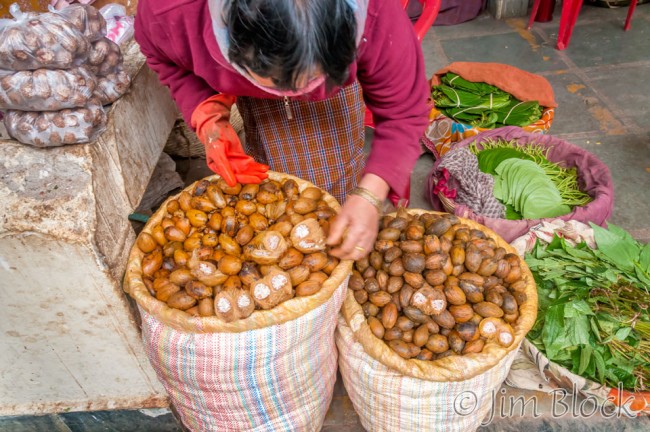
The panoramas below might give you some sense of the size of this market. But you really had to experience it in person to appreciate it.

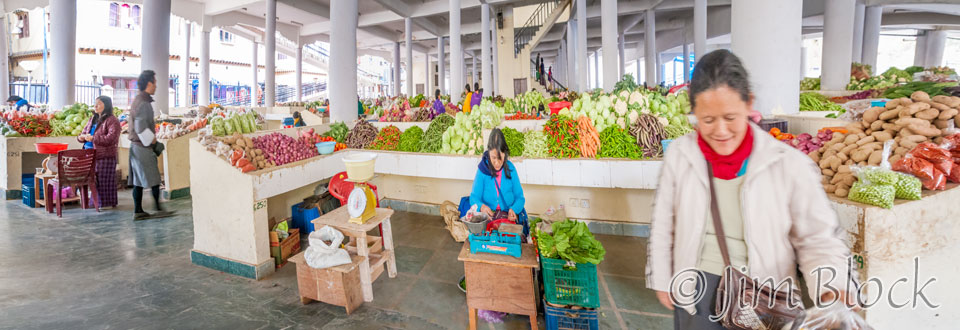

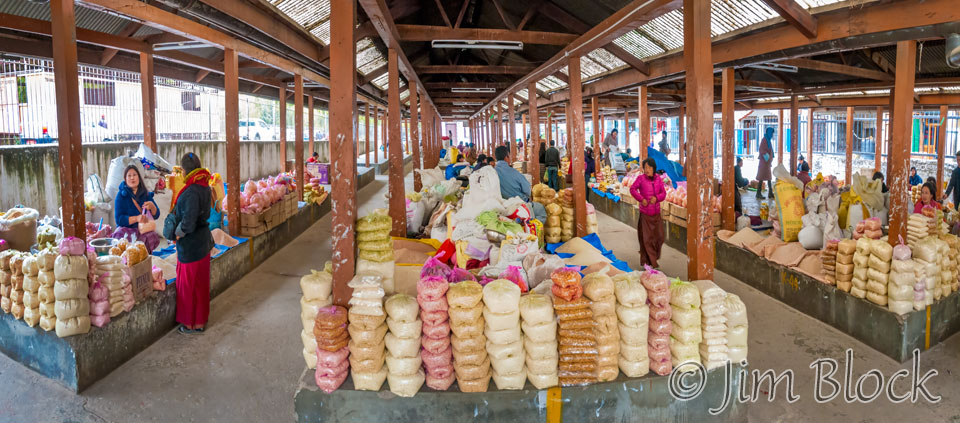

Leaving the market, a bridge across the river took us to a Handicraft Market. Here Stephen and I splurged — each of us purchasing a handmade cowbell.
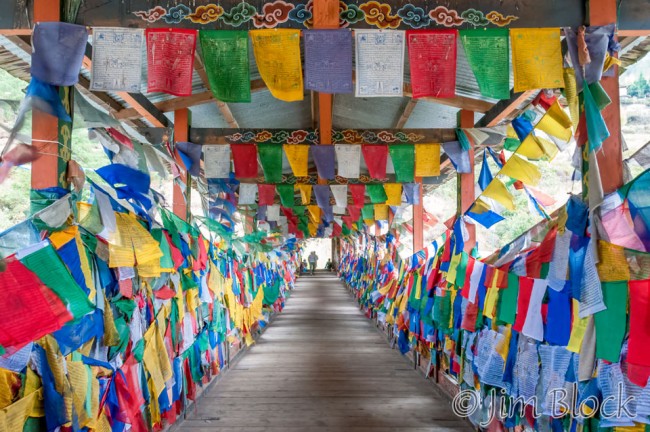
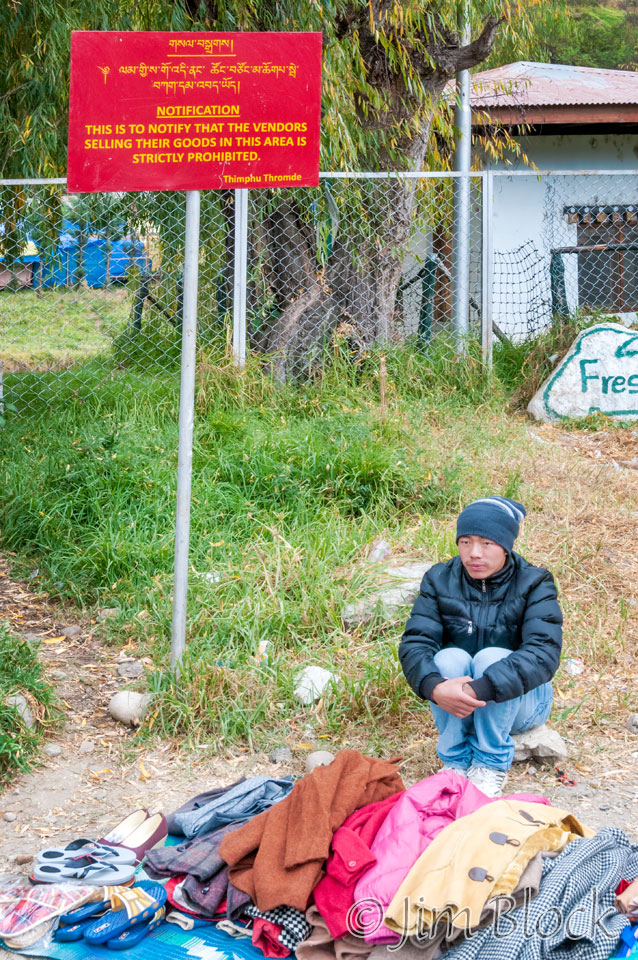

The slideshow below contains other photos from the Weekend Market and Handicraft Market.
On our walk back to our hotel Lakey carried the larger of the two cowbells. This was a great hit everywhere we walked as people turned looking for the horse that they thought was walking down the street. We got a few strange looks, but mostly smiles and laughs.
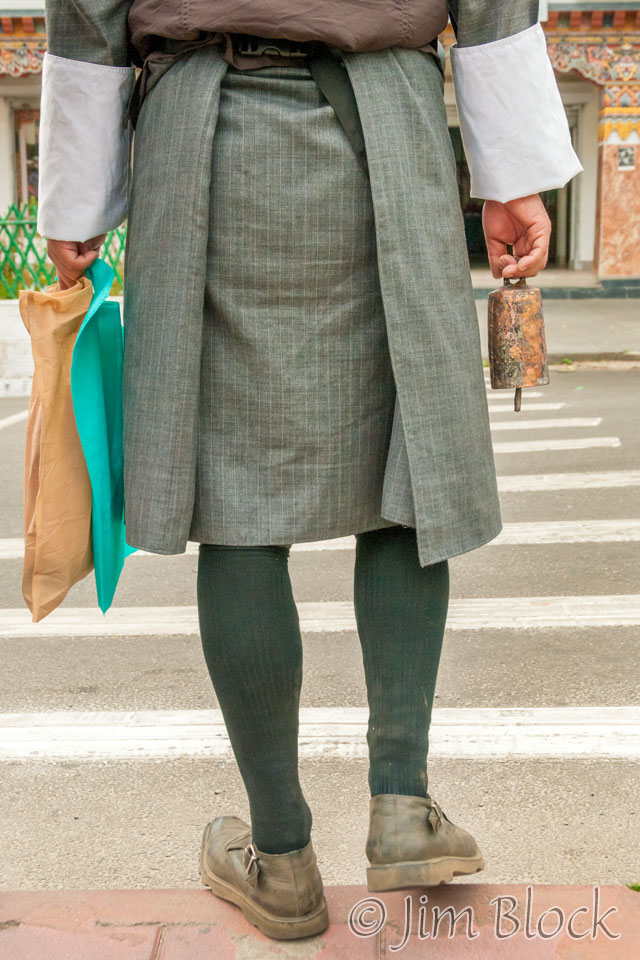
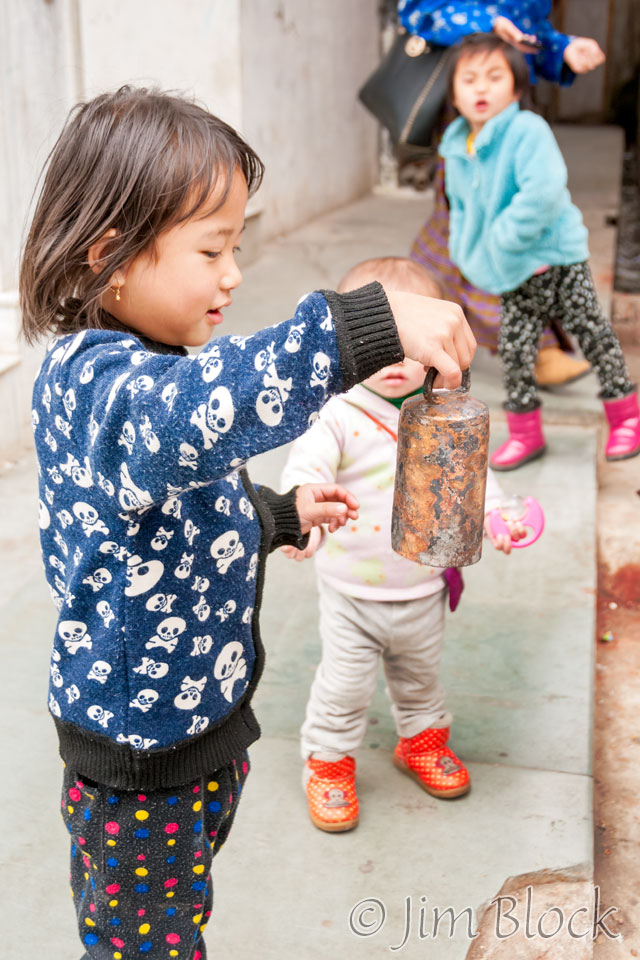
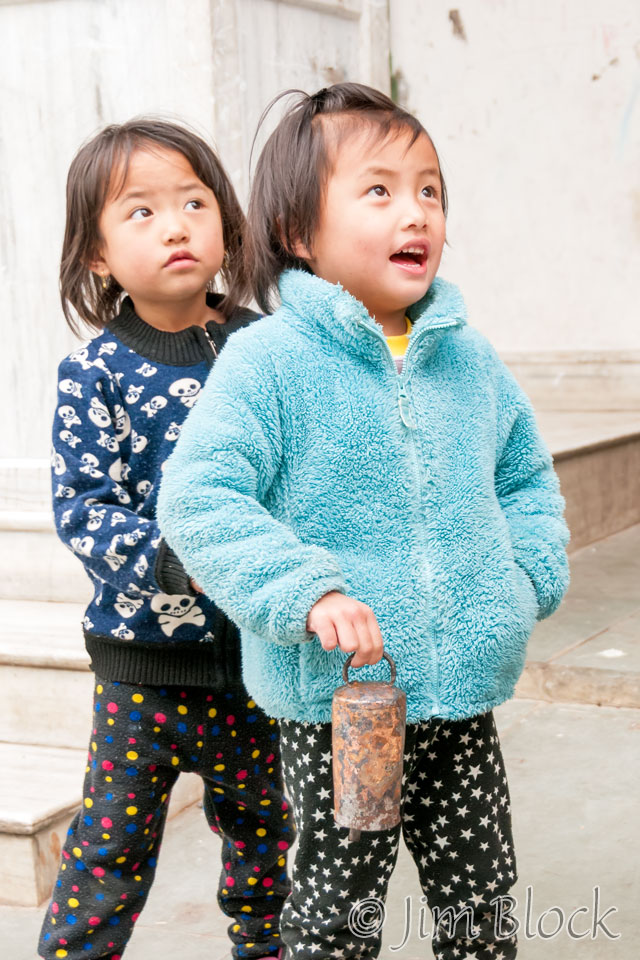
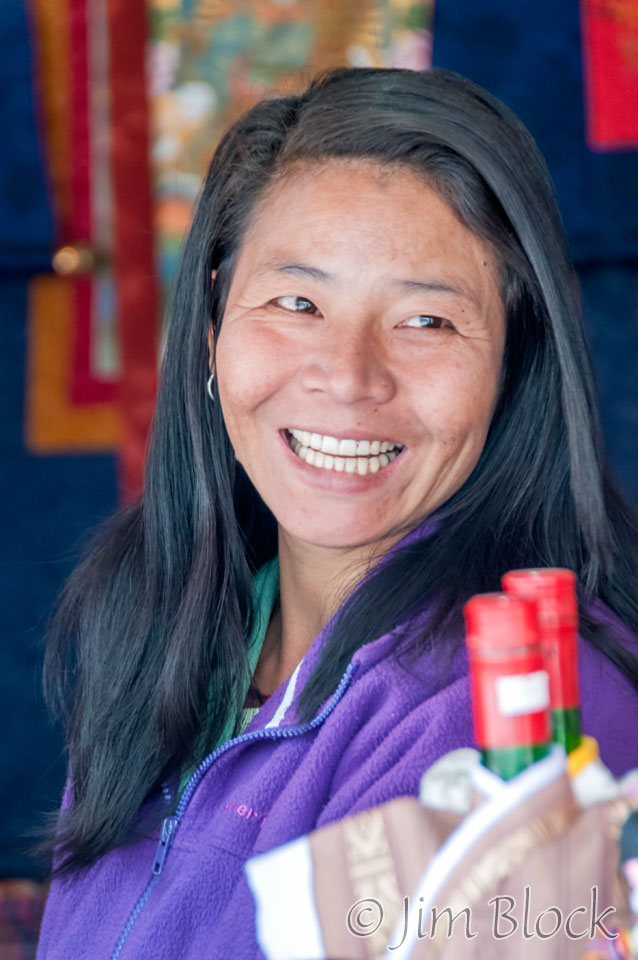
Thimphu is the only capital city in the world without any traffic signals. However they do have a human signal, much-photographed policemen who direct traffic at what is apparently the busiest intersection. This intersection was near our hotel which is seen left of center in the background on the right side of the left-hand street.

Here is a slide show of the policemen directing traffic.
We had late afternoon tea with Sonam and Dhamey. They gave us carved masks as souvenirs of our trip. Later we would have dinner with Dhamey at a wonderful Thimphu restaurant. But before that we tried our hand at some night photography of the city.
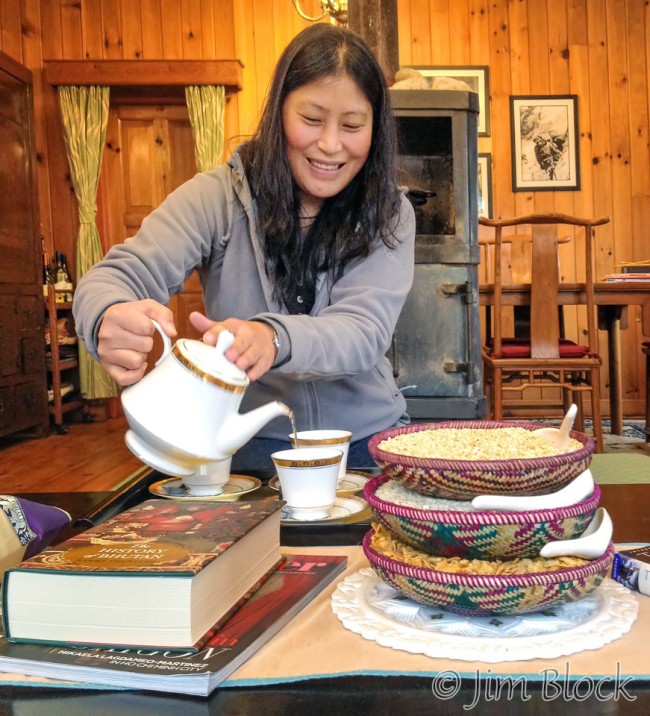
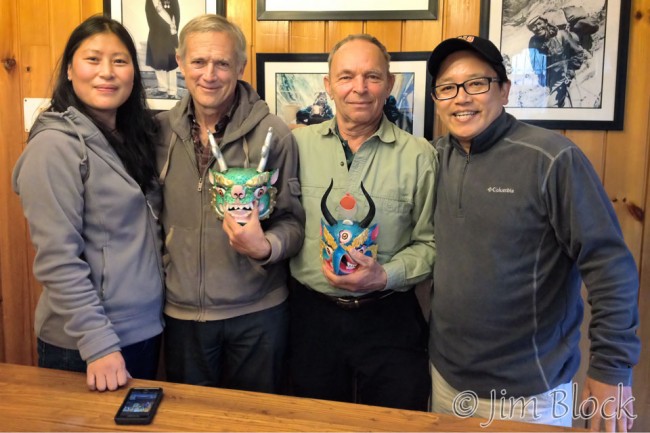
Here is a photography hint. The best night photos of cities are taken before the sky is totally dark. There is a fairly narrow time window when it is early enough that the sky still has some color but late enough that the lights have come on.
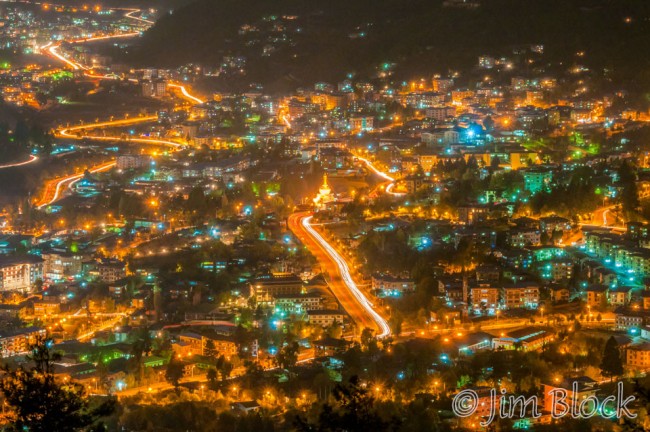
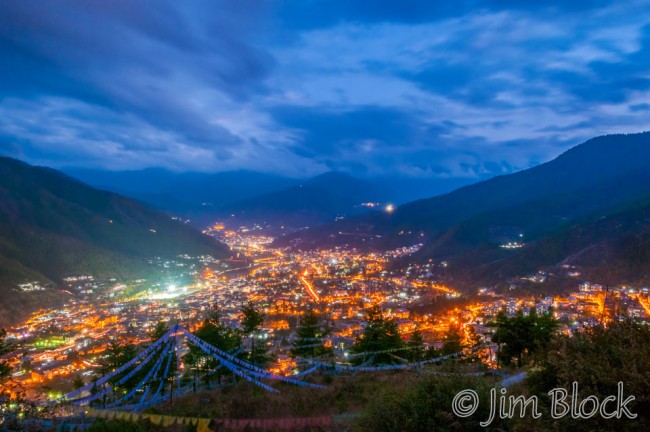
The Thimphu Dzong looked better to me at night than it did during the day.
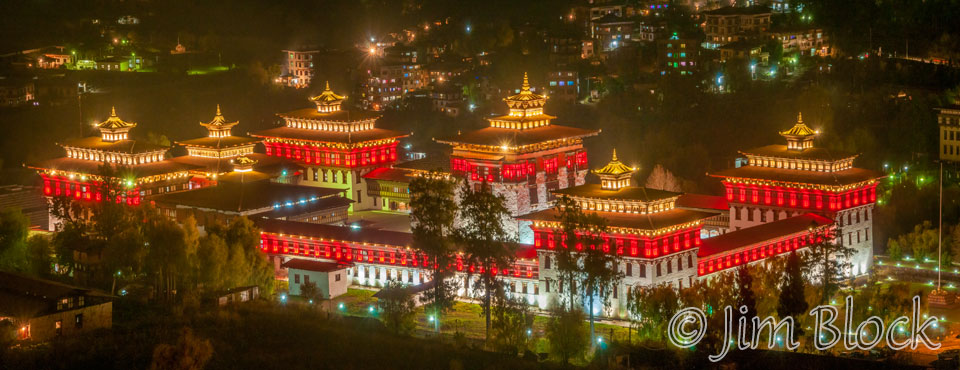
We finished our nighttime photo excursion at the National Memorial Chorten.
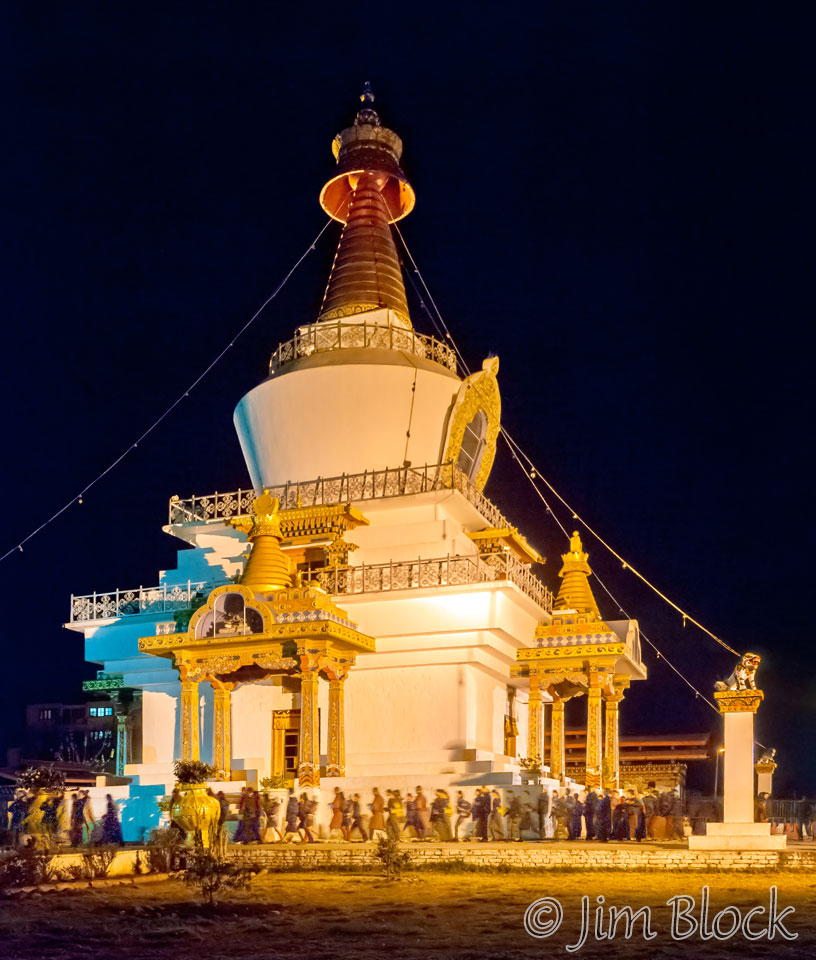
I had fun taking longish-exposure photos of the people walking around the chorten. Here is a slideshow with a bunch of blurry photos.
If you have made it this far, you get a special treat. You can visit a page not found in any of my menus. It describes my “Complete Bhutan Experience”. To get to this page just click HERE.

